Bruce Gary, Last updated: 2020.10.05 23 UT
The
current dip is
the 7th one
deeper than 0.5
% since Oct 20
(a mere 10 weeks
ago). The "dip
activity level"
was quite high,
averaging ~ 2.0
% a couple weeks
ago, but appears
to be recovering
(depth now is
< 0.5 %). If
all dips were
moved in time to
the same date
(and assuming
they were all
produced by dust
clouds with low
optical depth),
they would
produce a single
dip (with an
assumed typical
width) having a
depth of 11 %!
In other words,
the dip activity
during the past
10 weeks has
been comparable
to the dip
activity two
years ago, or
even 7 years ago
when Kepler
was observing.
It's just that
the recent set
of 7 dips are
spread-out, as
if they were
produced many
years ago at one
orbit location
and have been
spreading apart
ever since. End
of observing
season, so no
more
observations for
a few months.
_____________________________________________________________________________________________________________________________________
Links on this web page
g', r' & i' magnitudes vs. date (for last 2 months & last year)
List of observing sessions (starting 2019 Oct 04)
Mag/mag scatter diagrams (r' vs. g')
Dust cloud layout (for each band)
u' attempt (unexplained failure to achieve usable SEs)
Finder image (showing my ref stars)
The Big Picture .
My collaboration policy
References
Links on another web page
Comparison with AAVSO observations
HAO precision explained (580 ppm)
DASCH comment
This is the 9th web pages devoted to my observations of Tabby's Star for the date interval 2019.10.20 to 2020.01.11.
The 10th edition (for 2020.09.27 and later) is available at http://www.brucegary.net/ts10/
Go back to 8th of 9 web pages (for dates 2018.10.10 to 2019.01.19)
Go back to 7th of 9 web pages (for dates 2018.08.12 to 2018.10.04)
Go back to 6th of 9 web pages (for dates 2018.02.25 to 2018.08.01)
Go back to 5th of 9 web pages (for dates 2017.11.13 to 2018.01.03)
Go back to 4th of 9 web pages (for dates 2017.09.21 to 2017.11.13)
Go back to 3rd of 9 web pages (for dates 2017.08.29 to 2017.09.18)
Go back to 2nd of 9 web pages (for dates 2017.06.18 to 2017.08.28)
Go back to 1st of 9 web pages (for dates 2014.05.02 to 2017.06.17)
Reference Star Quality Assessment (the 10 best stars out of 25 evaluated)
g', r' and i' Mag's vs. Date
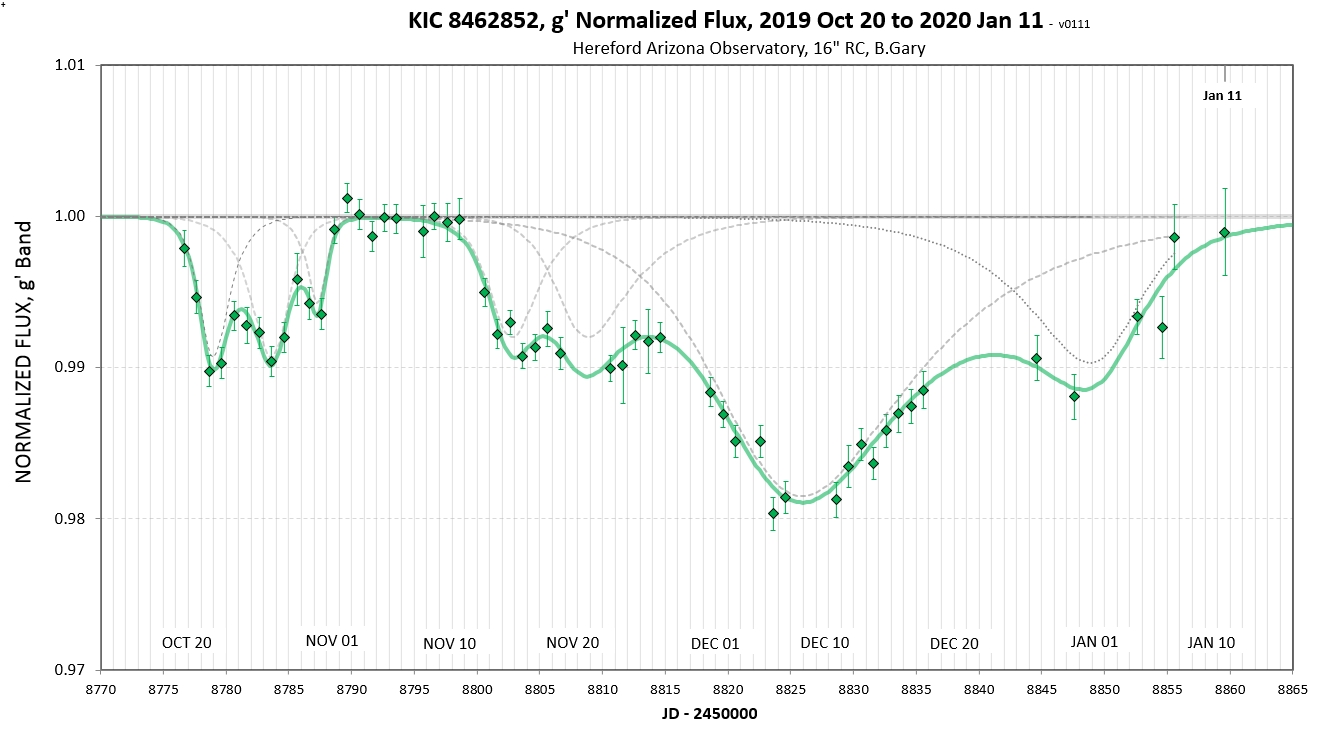
Figure 1a. The light gray dashed traces show the individual "asymmetric hypersecant" (AHS) functions used to fit the observations. The green trace is the sum of the AHS functions. Since 6 AHS functions are used to fit the observations we are supposed to imgine that 6 dust clouds passed through the line-of-sight to the star during this 2-month interval.
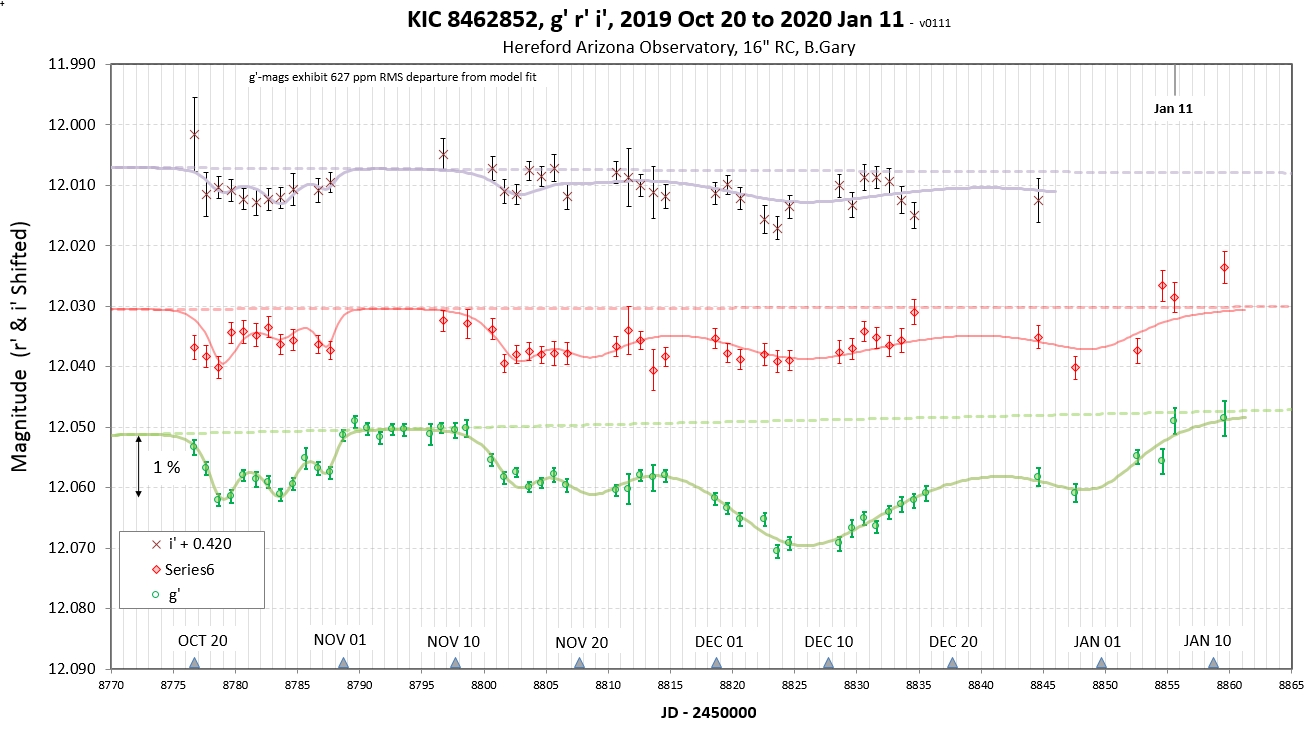
Figure 1b. Dip depths varies with wavelength, as expected. The strength o the dependence may vary between dust clouds, and may even vary within a cloud (as the last cloud suggests).
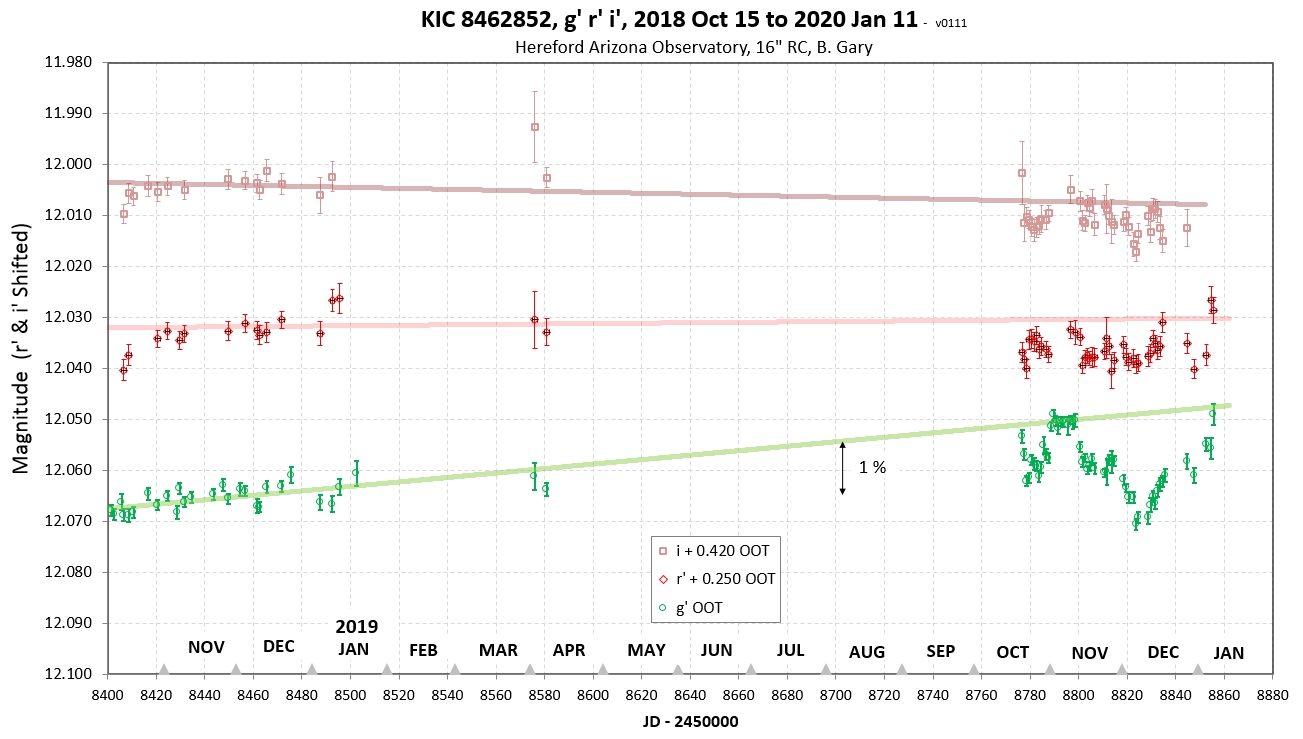
Figure 1c. HAO g', r' and i'-magnitudes for the past year. The "OOT only" traces are chosen to be "straight" in order to illustrate one interpretation, namely, that since since 2018 Oct the measurements are compatible with a steady slow rise in brightness for g' and no changes for r' and i'. (To see what was happening before 2018 Nov go to ts8).
Links on this web page
g', r' & i' magnitudes vs. date (for last 2 months & last year)
List of observing sessions (starting 2019 Oct 04)
Mag/mag scatter diagrams (r' vs. g')
Dust cloud layout (for each band)
u' attempt (unexplained failure to achieve usable SEs)
Finder image (showing my ref stars)
The Big Picture .
My collaboration policy
References
Links on another web page
Comparison with AAVSO observations
HAO precision explained (580 ppm)
DASCH comment
This is the 9th web pages devoted to my observations of Tabby's Star for the date interval 2019.10.20 to 2020.01.11.
The 10th edition (for 2020.09.27 and later) is available at http://www.brucegary.net/ts10/
Go back to 8th of 9 web pages (for dates 2018.10.10 to 2019.01.19)
Go back to 7th of 9 web pages (for dates 2018.08.12 to 2018.10.04)
Go back to 6th of 9 web pages (for dates 2018.02.25 to 2018.08.01)
Go back to 5th of 9 web pages (for dates 2017.11.13 to 2018.01.03)
Go back to 4th of 9 web pages (for dates 2017.09.21 to 2017.11.13)
Go back to 3rd of 9 web pages (for dates 2017.08.29 to 2017.09.18)
Go back to 2nd of 9 web pages (for dates 2017.06.18 to 2017.08.28)
Go back to 1st of 9 web pages (for dates 2014.05.02 to 2017.06.17)
Reference Star Quality Assessment (the 10 best stars out of 25 evaluated)
g', r' and i' Mag's vs. Date

Figure 1a. The light gray dashed traces show the individual "asymmetric hypersecant" (AHS) functions used to fit the observations. The green trace is the sum of the AHS functions. Since 6 AHS functions are used to fit the observations we are supposed to imgine that 6 dust clouds passed through the line-of-sight to the star during this 2-month interval.

Figure 1b. Dip depths varies with wavelength, as expected. The strength o the dependence may vary between dust clouds, and may even vary within a cloud (as the last cloud suggests).

Figure 1c. HAO g', r' and i'-magnitudes for the past year. The "OOT only" traces are chosen to be "straight" in order to illustrate one interpretation, namely, that since since 2018 Oct the measurements are compatible with a steady slow rise in brightness for g' and no changes for r' and i'. (To see what was happening before 2018 Nov go to ts8).
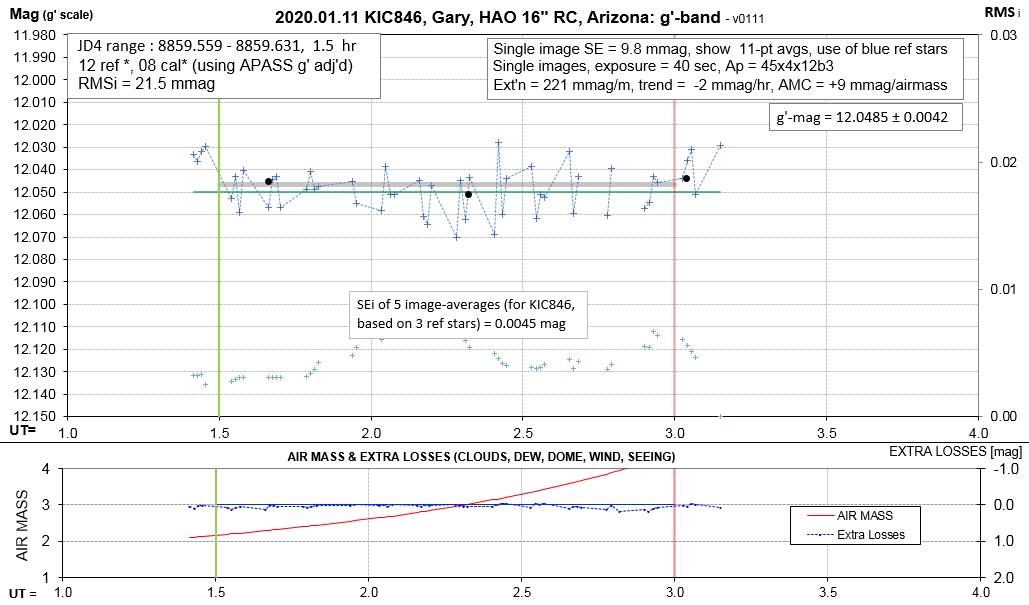
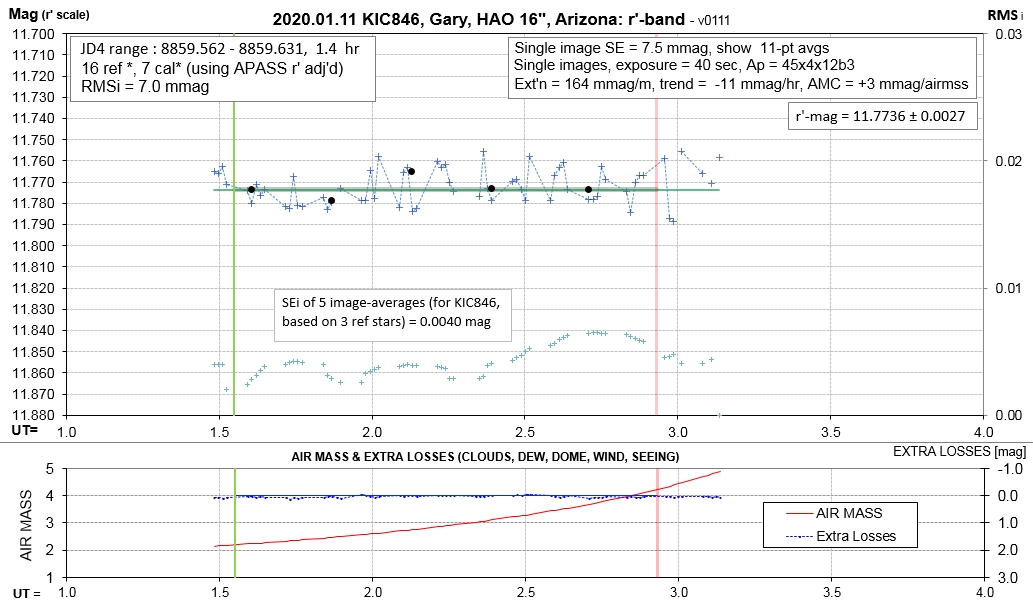
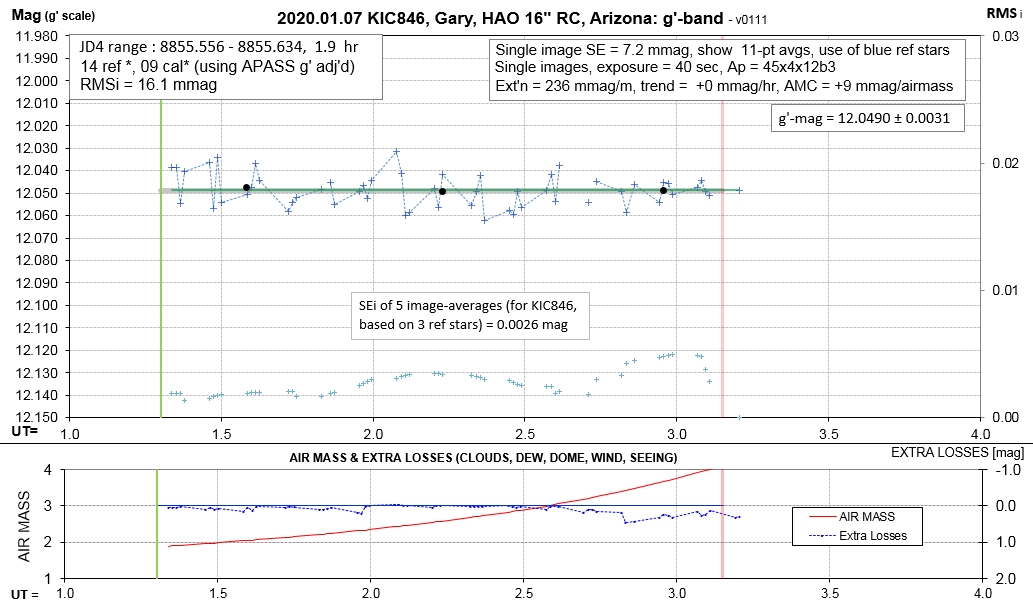
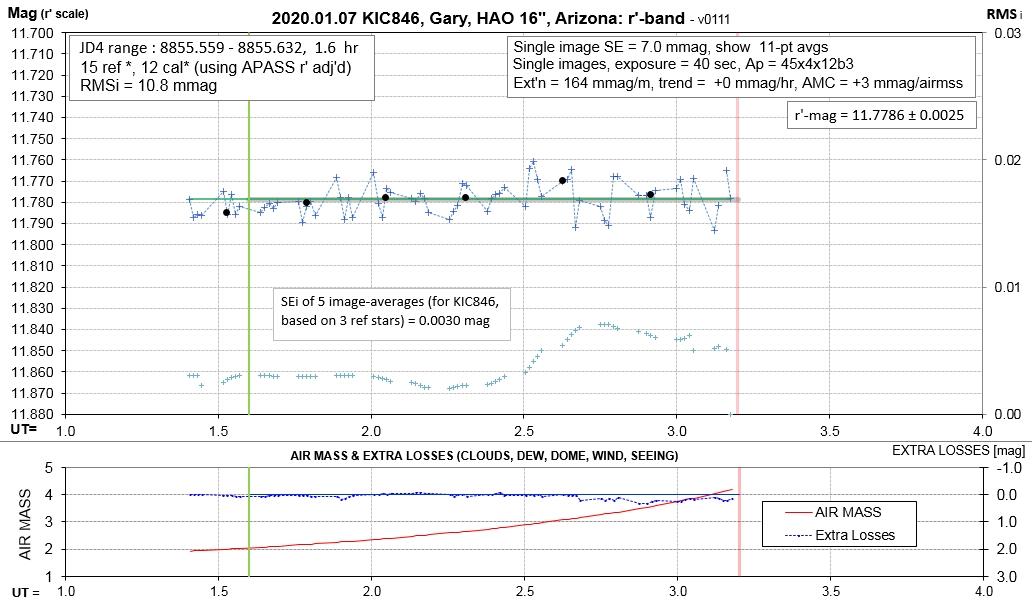
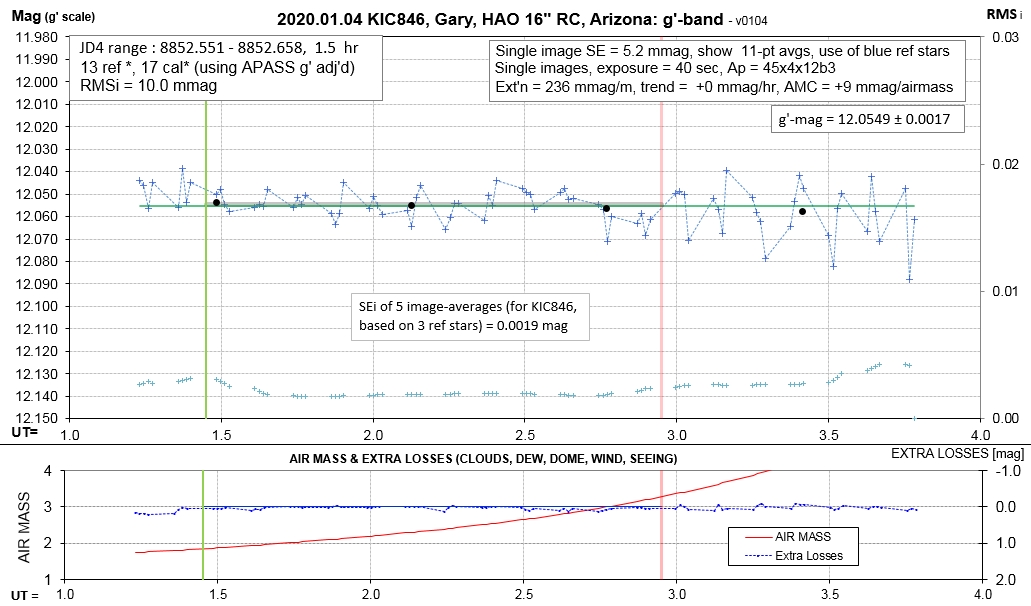
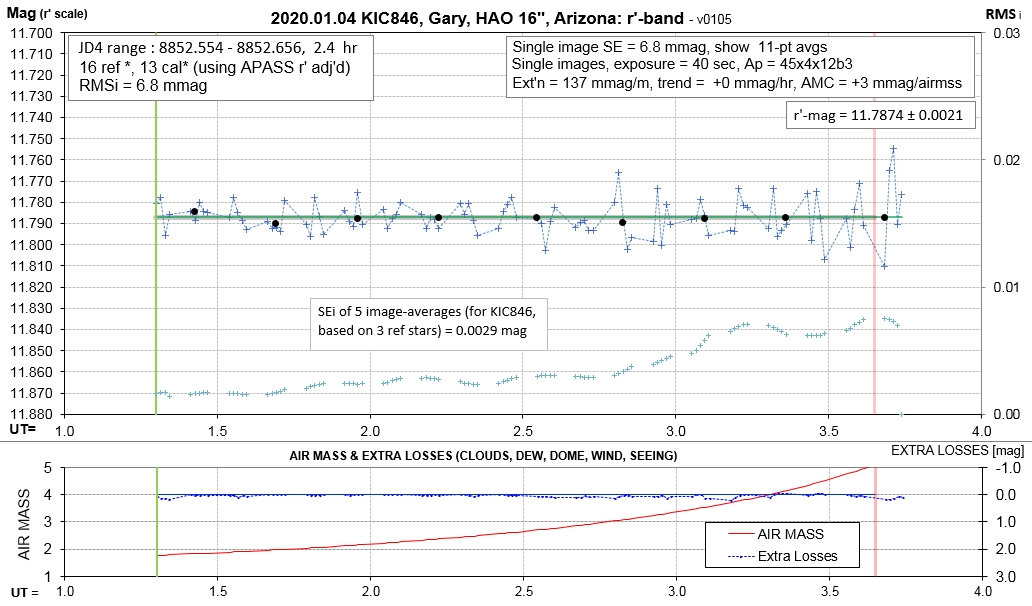
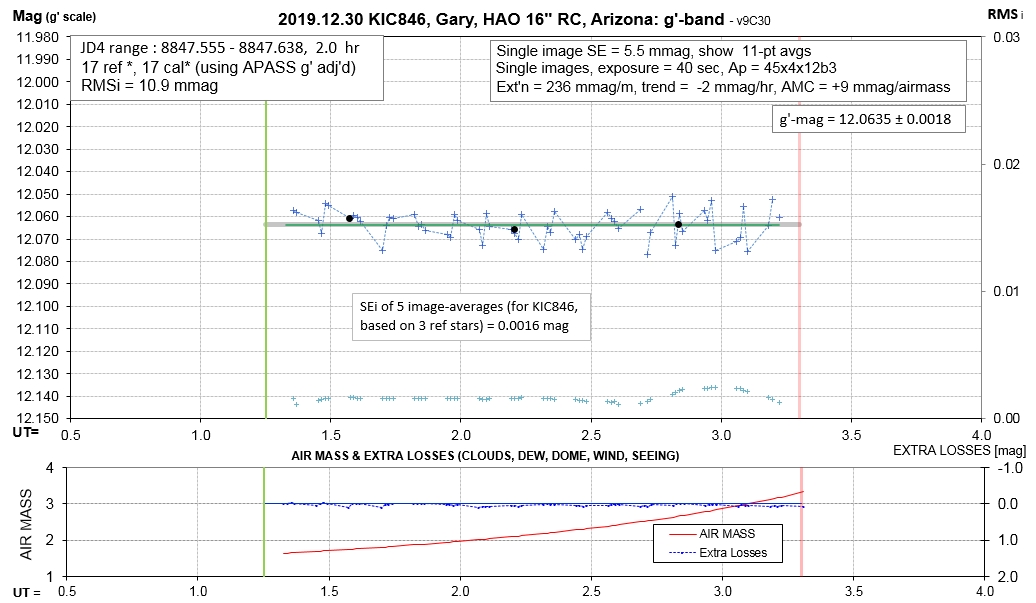
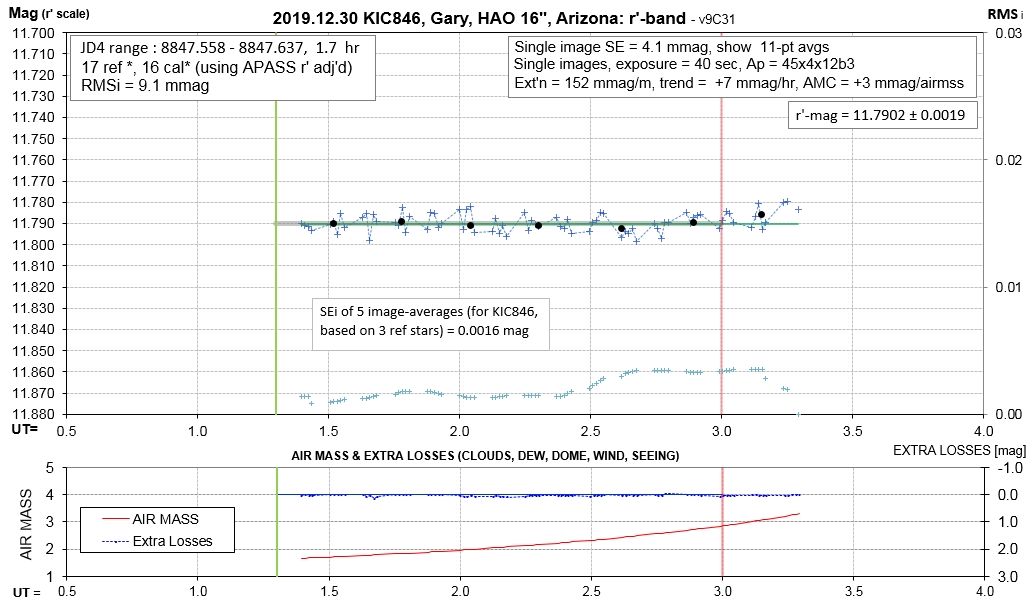
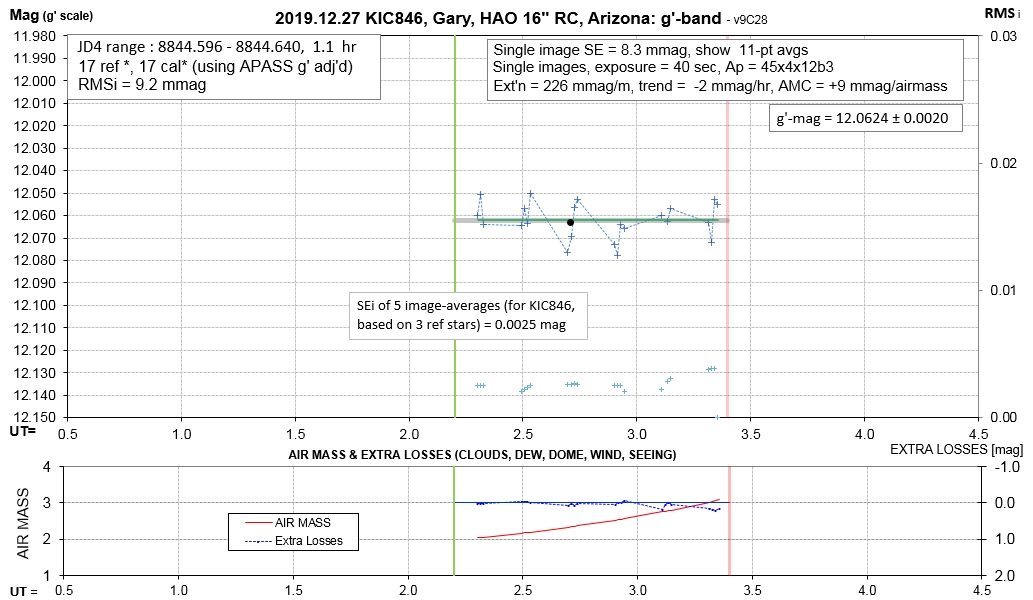
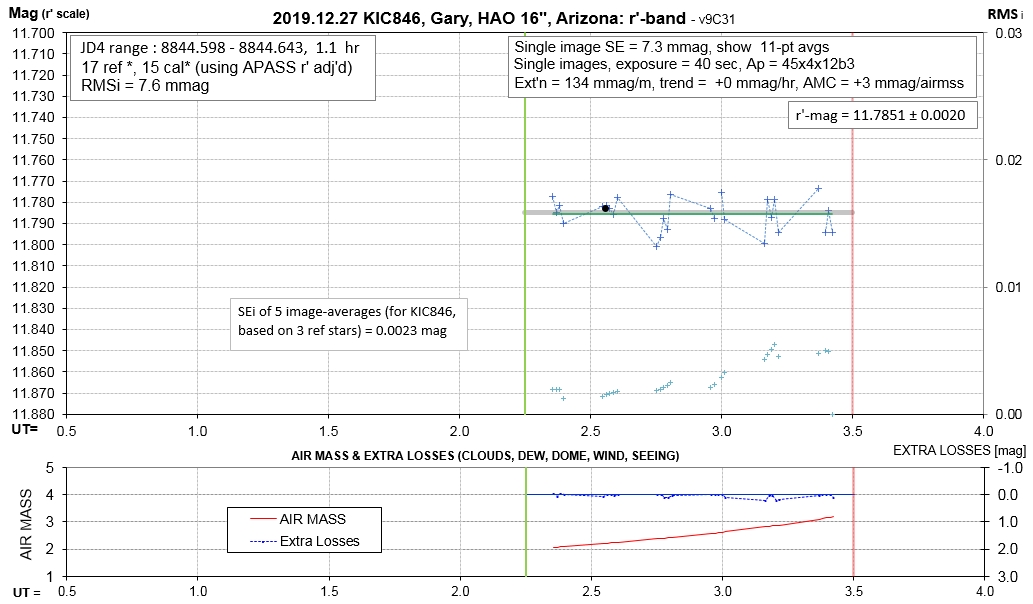
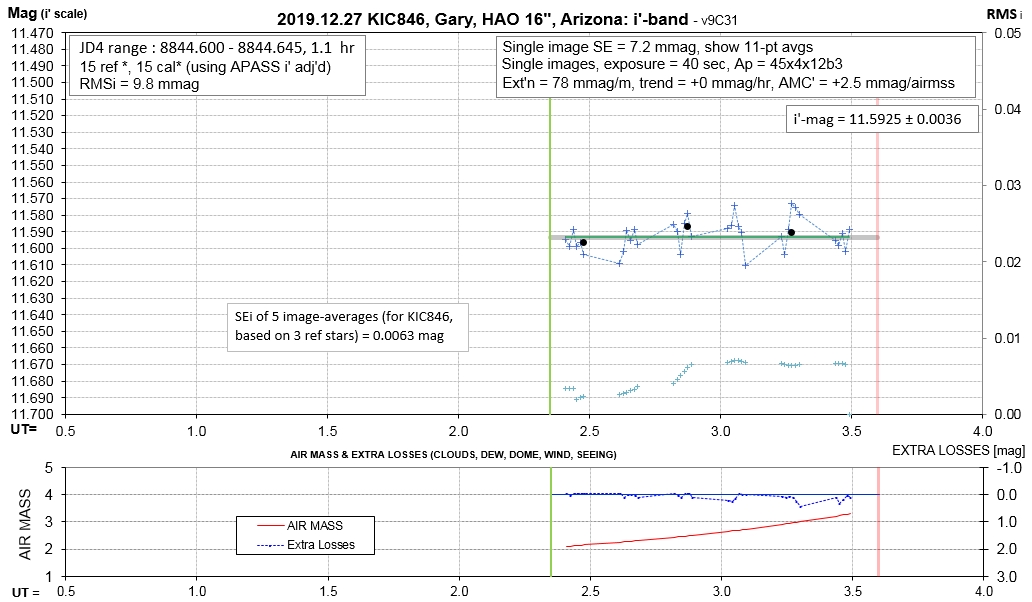
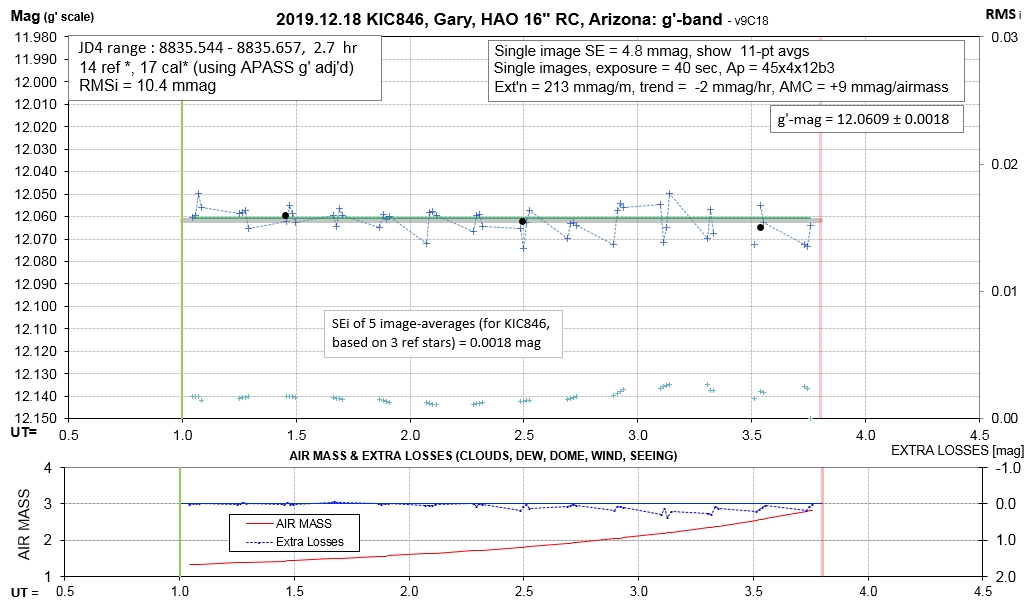
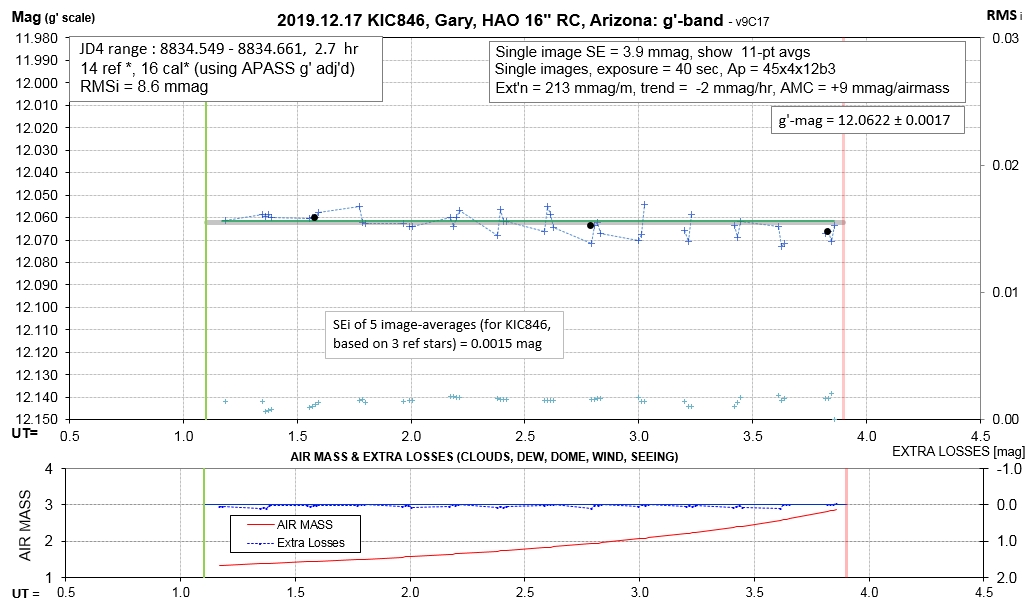
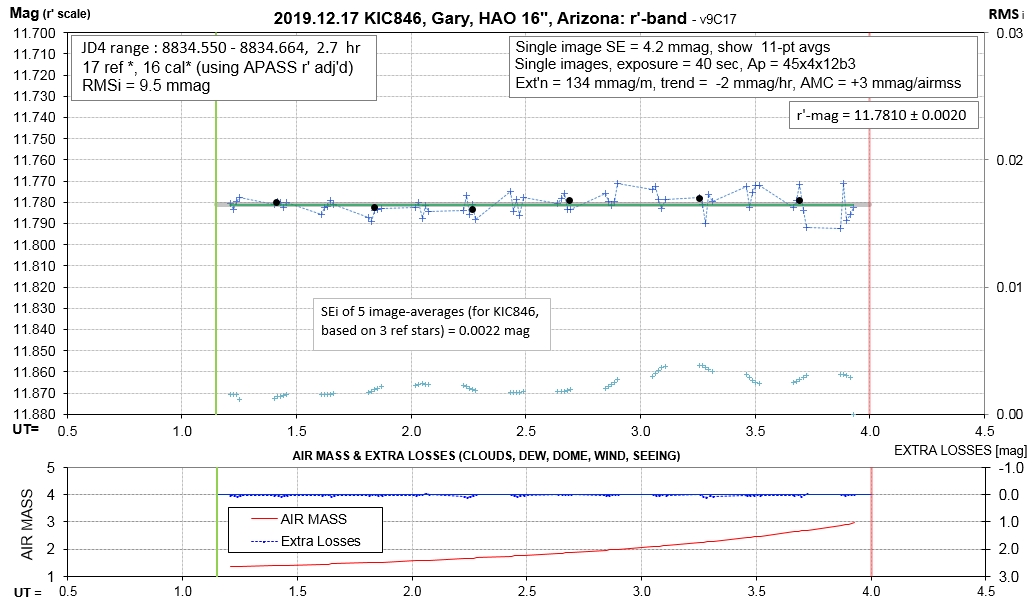
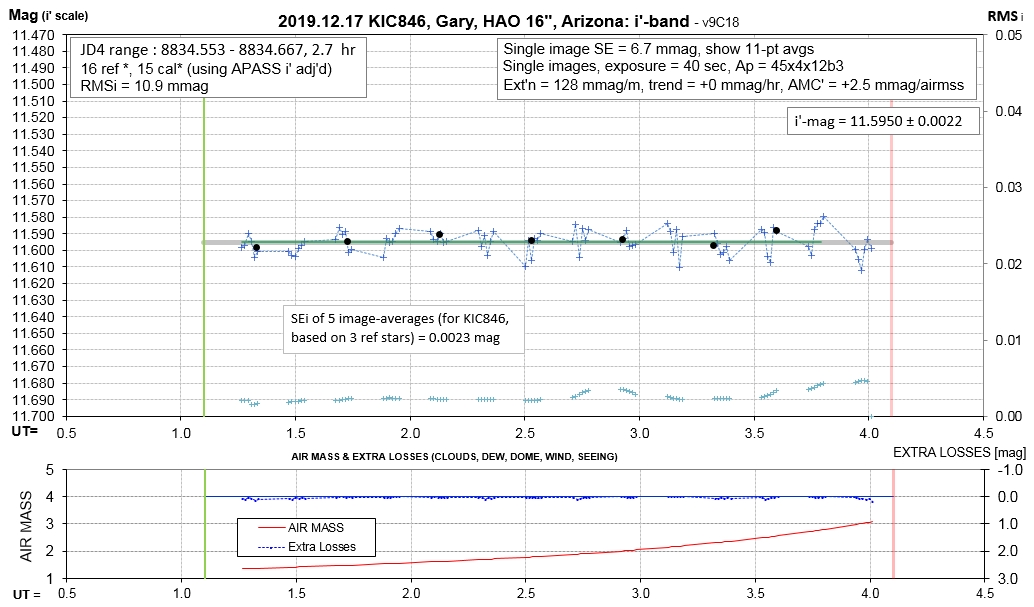
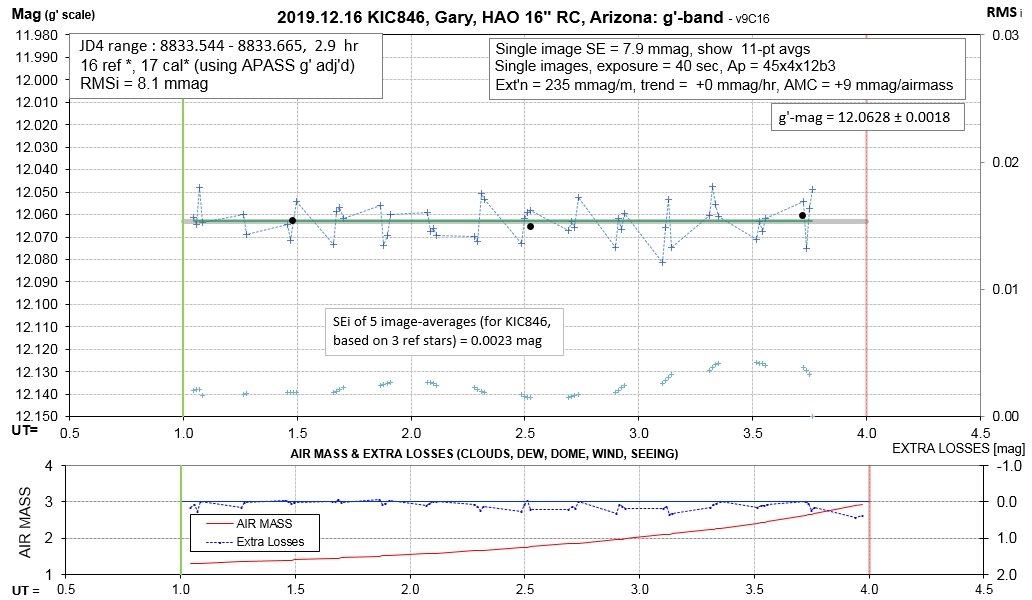
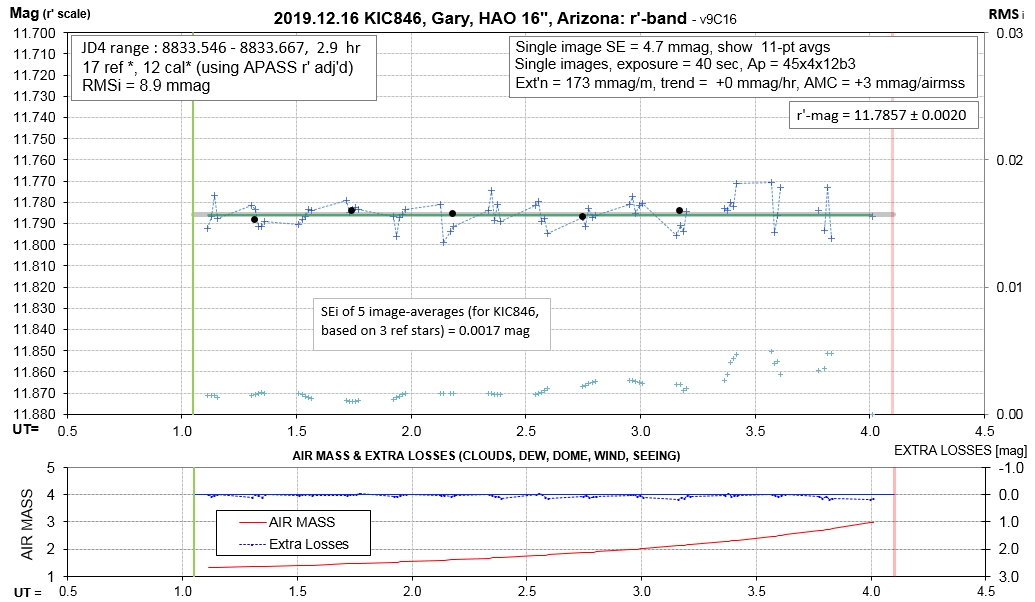
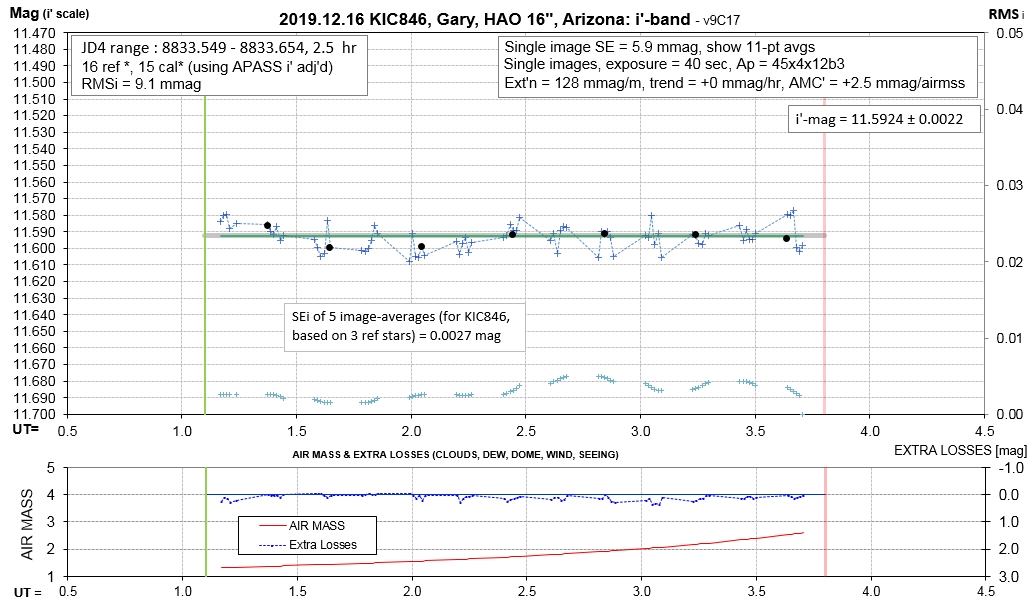
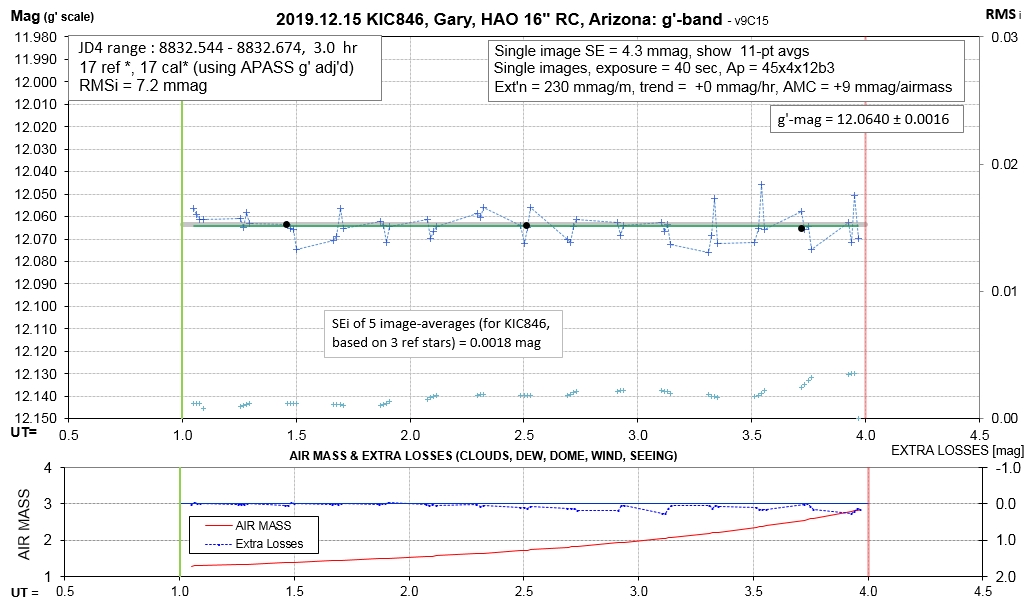
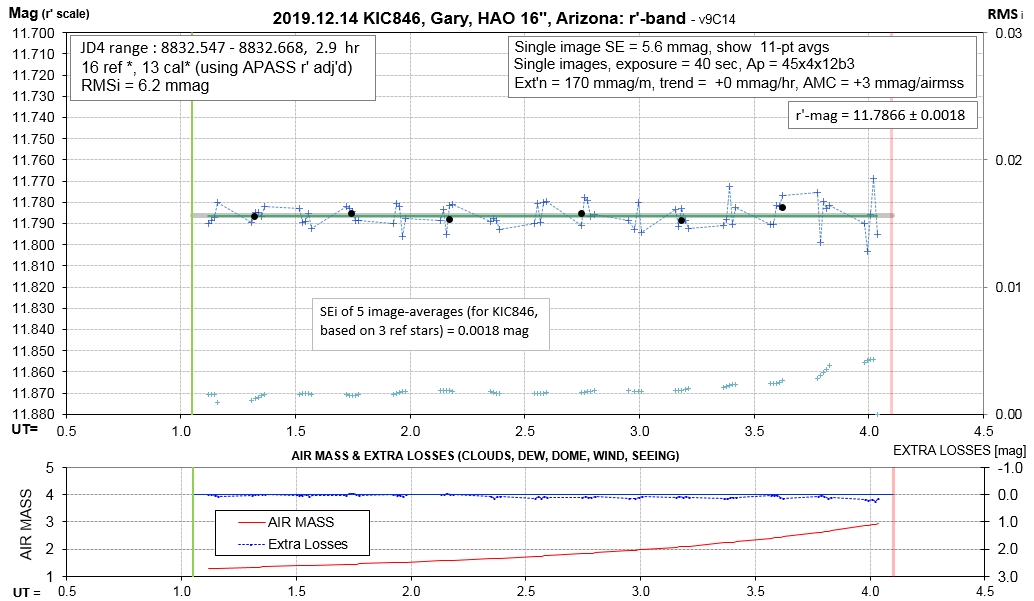
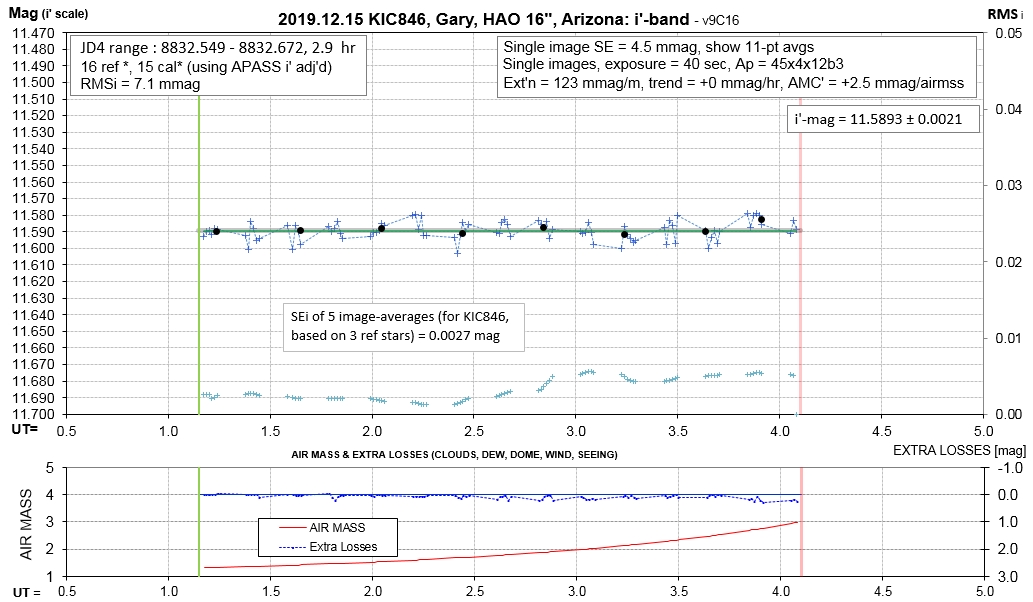
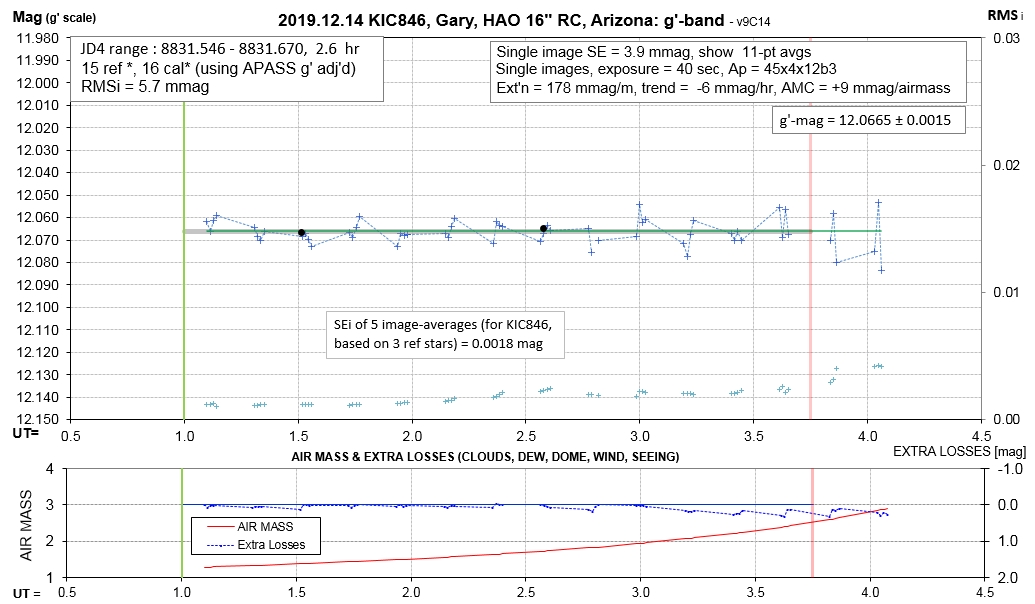
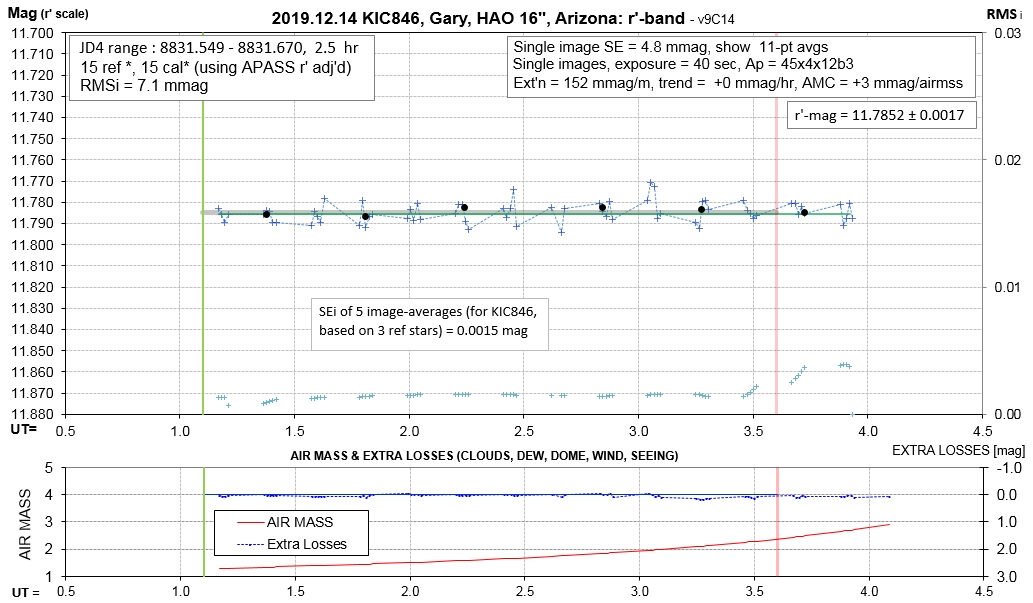
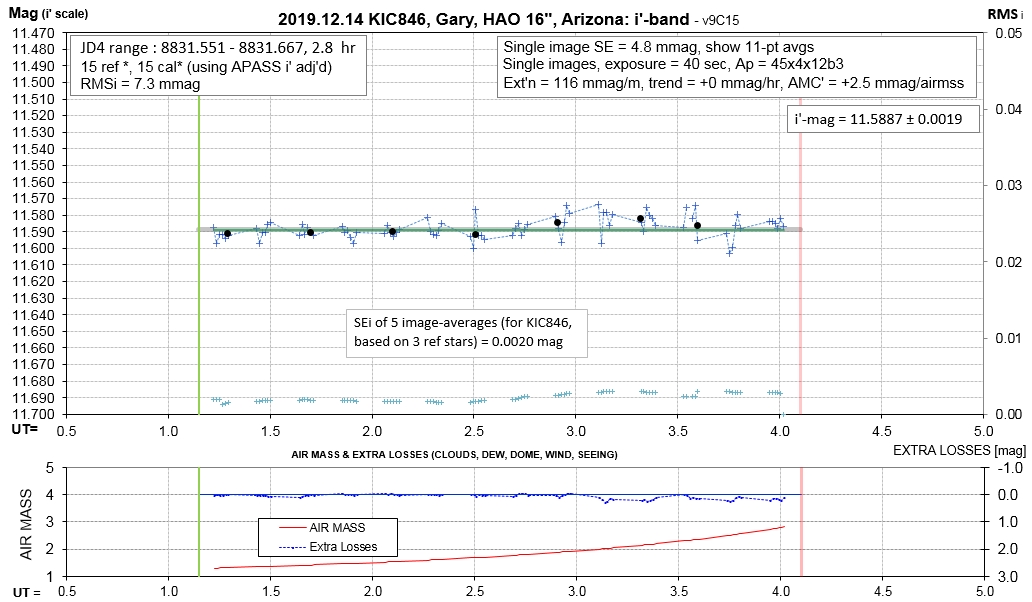
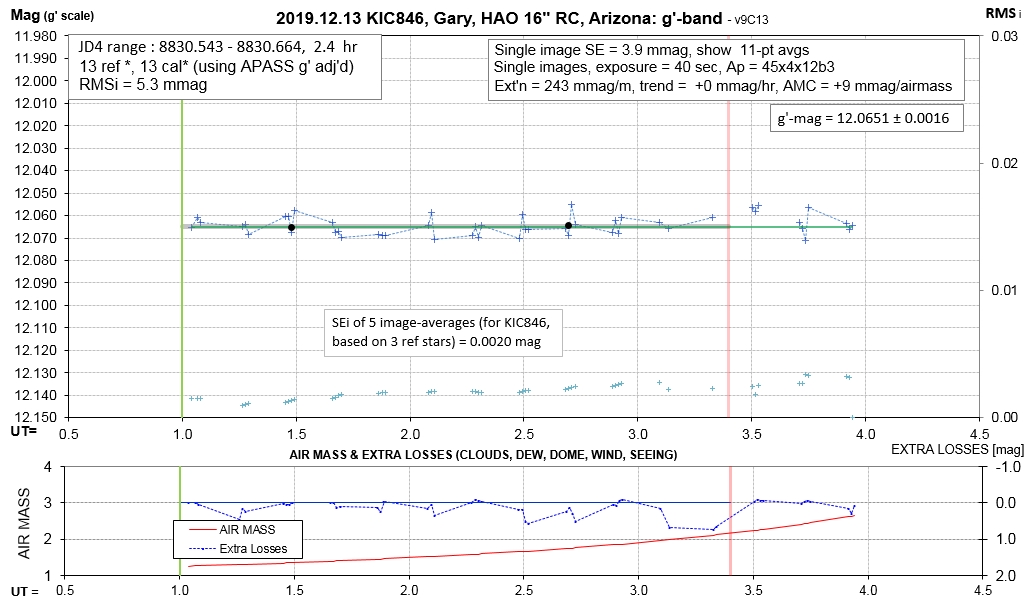
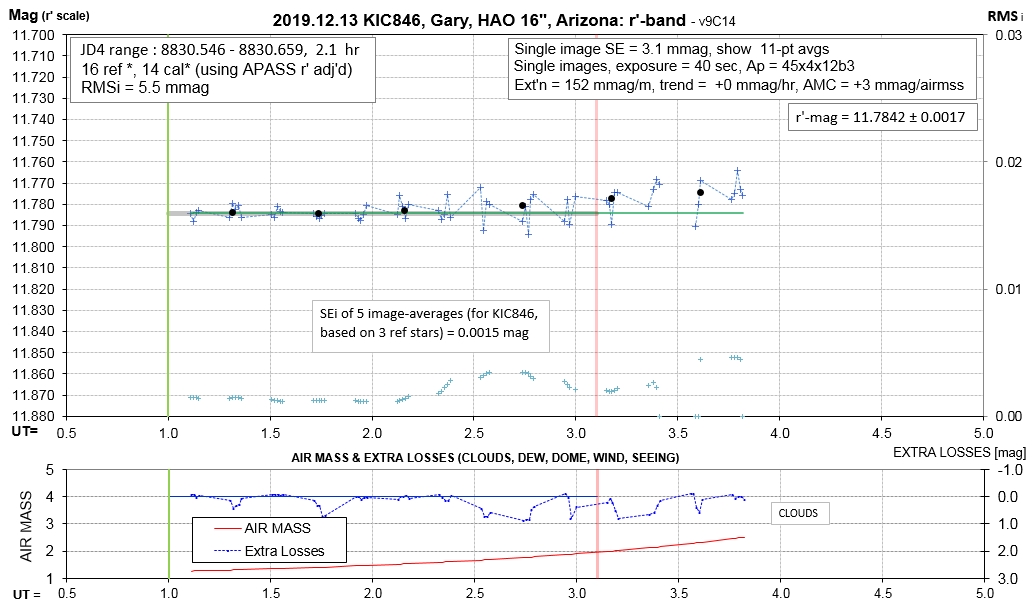
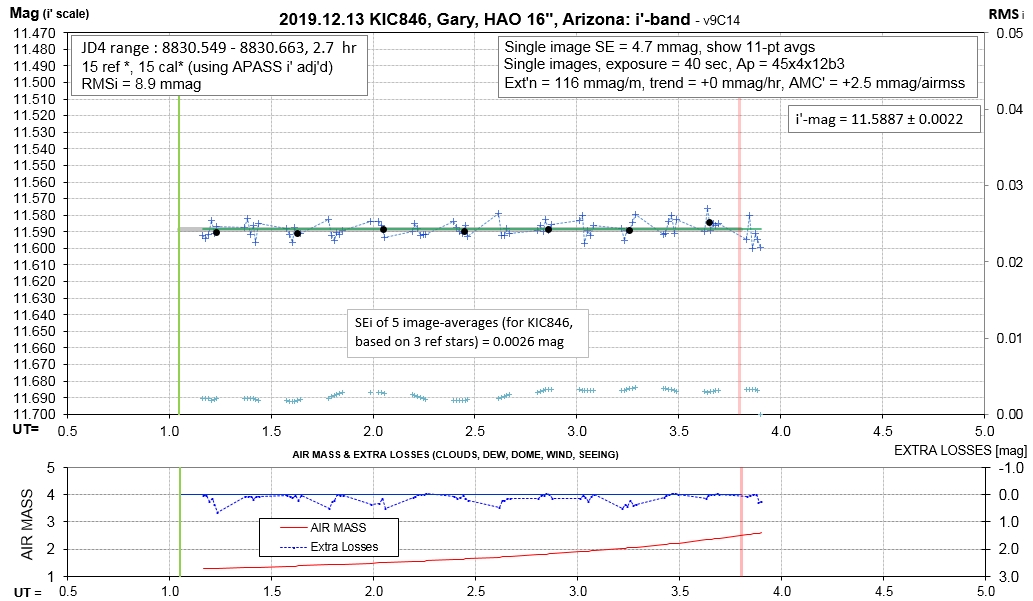
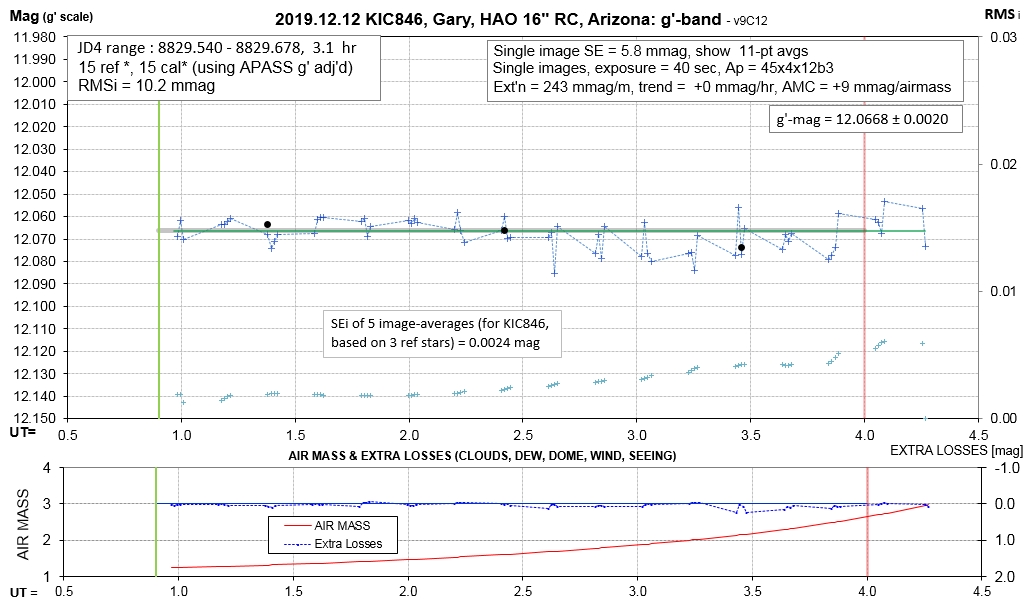
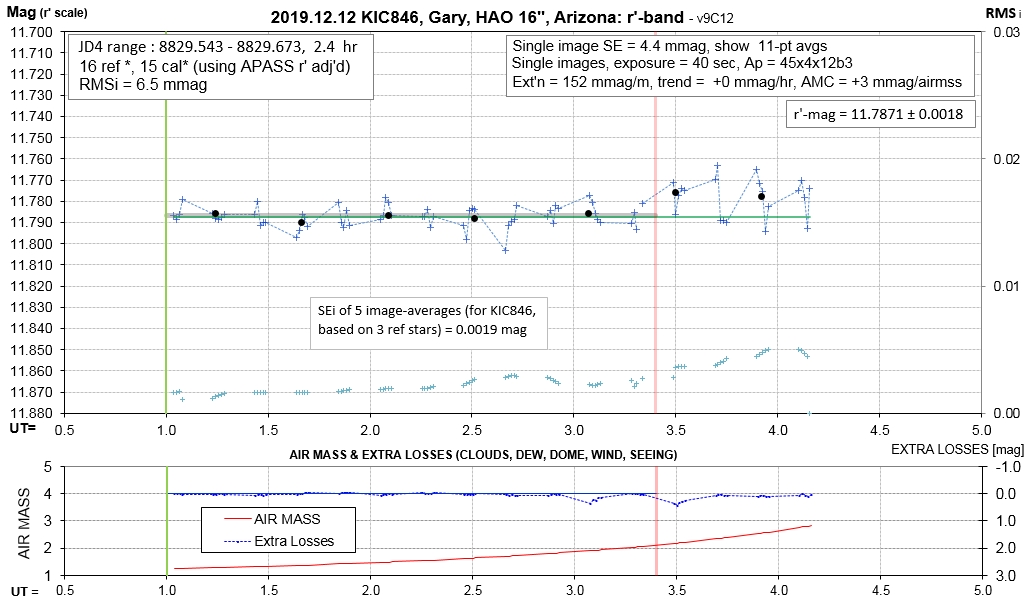
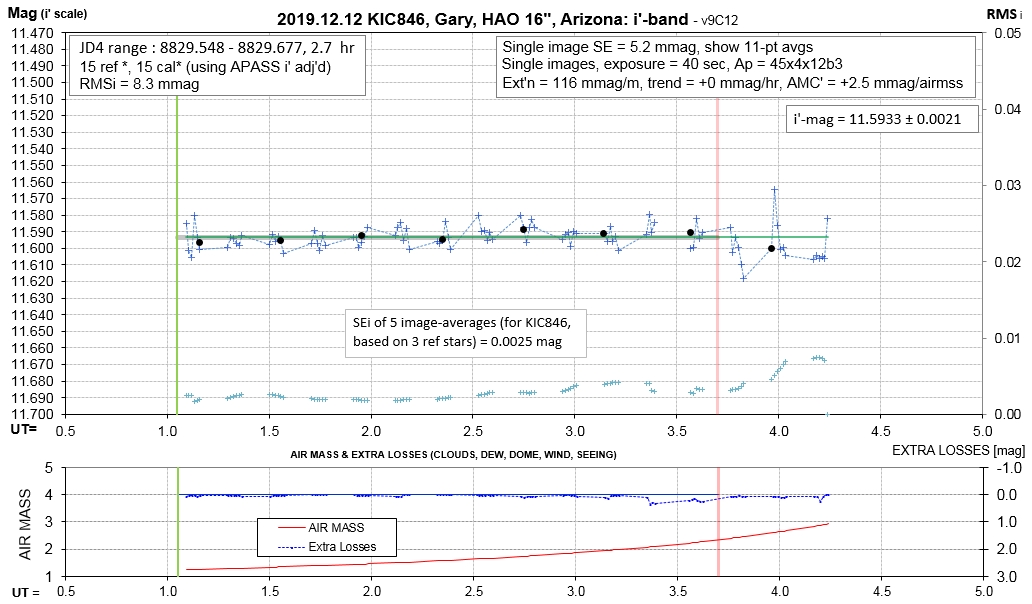
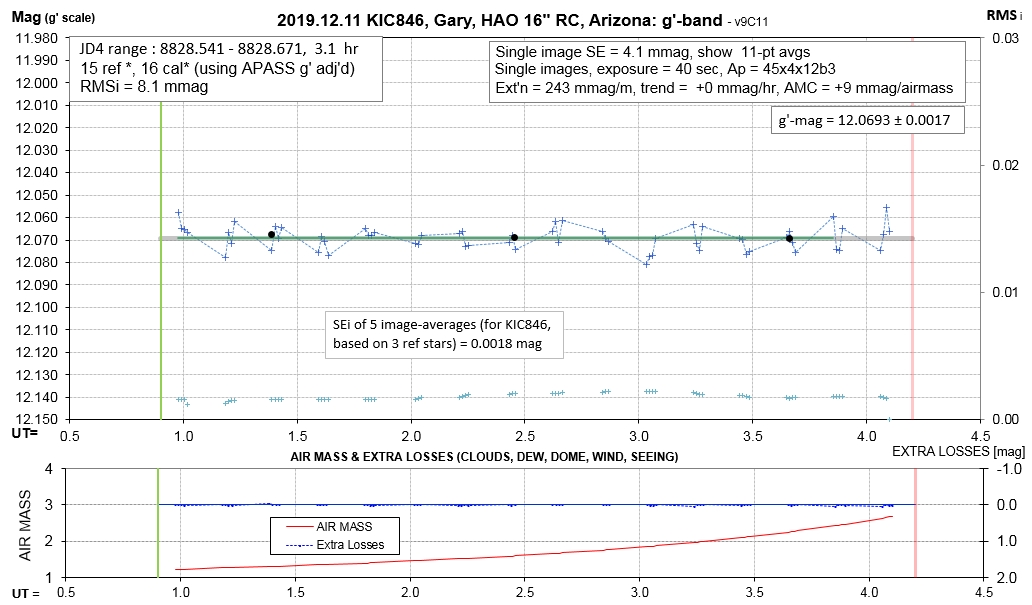
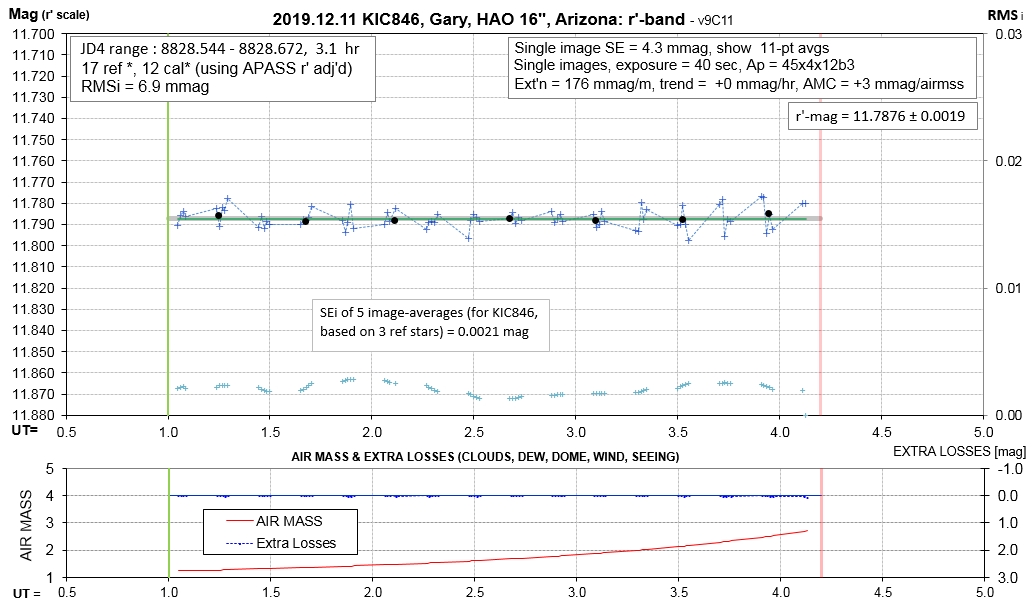
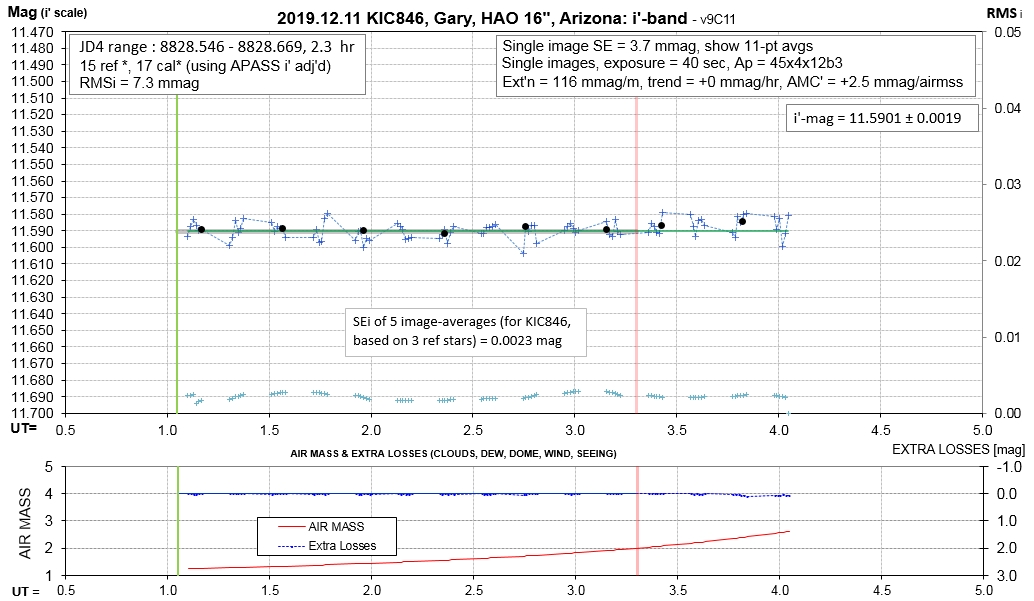
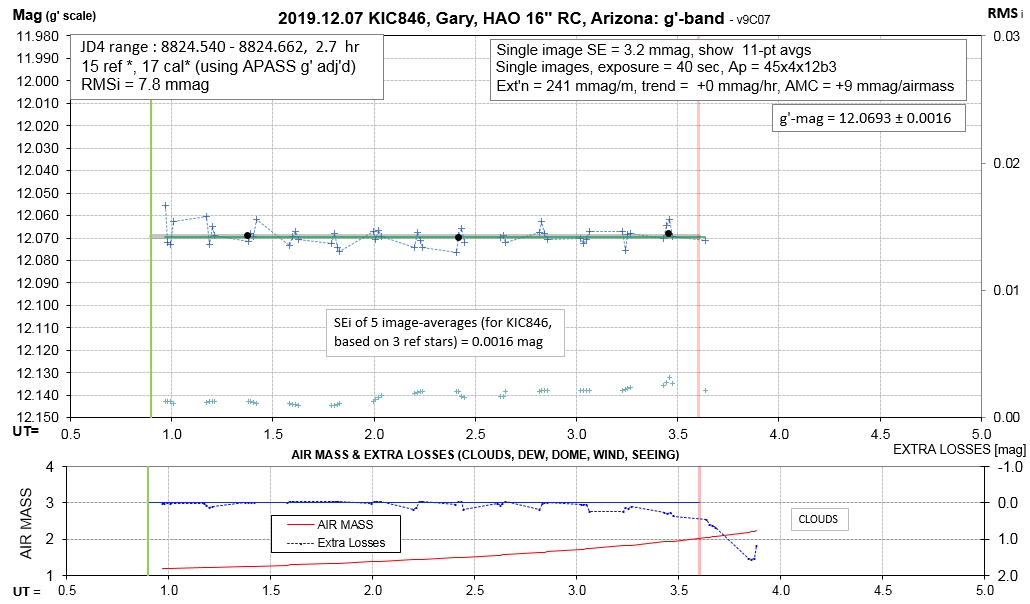
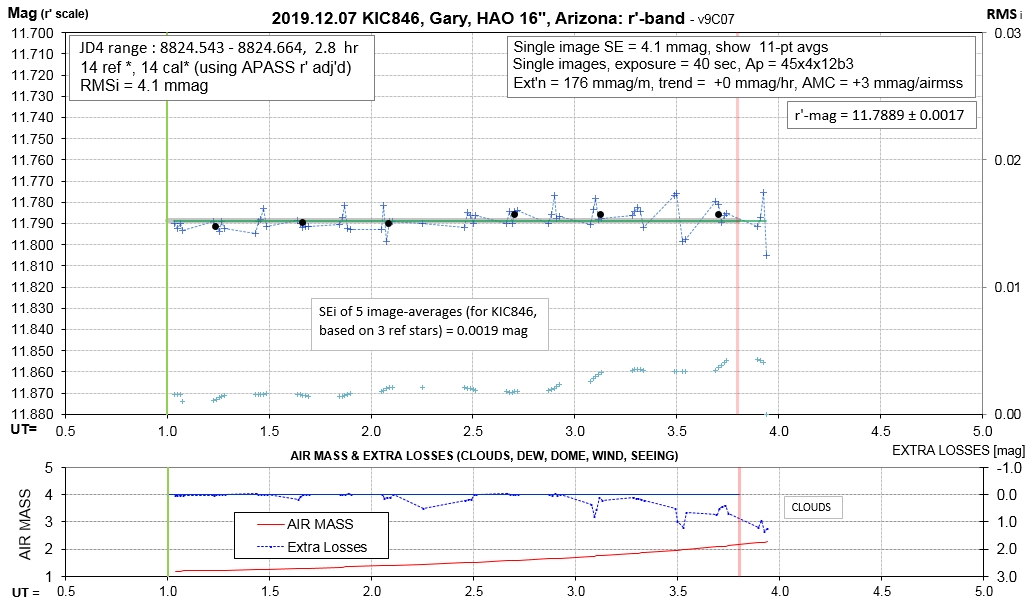
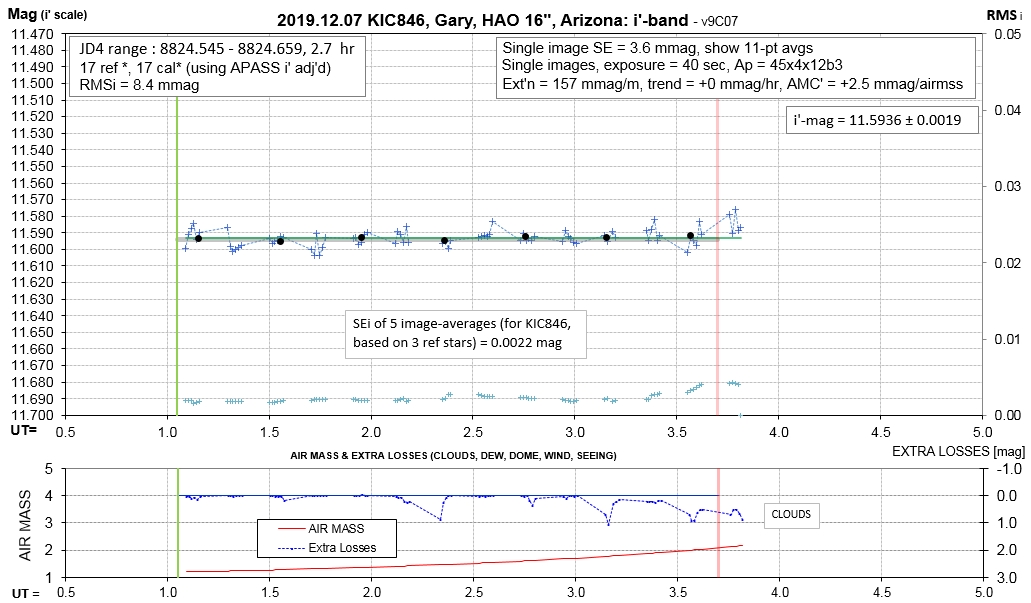
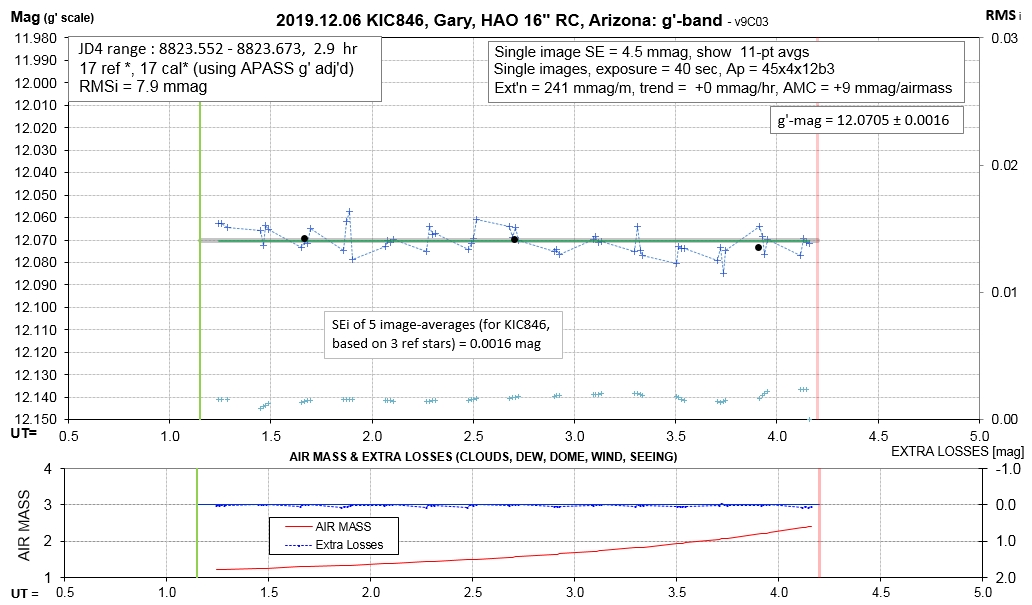
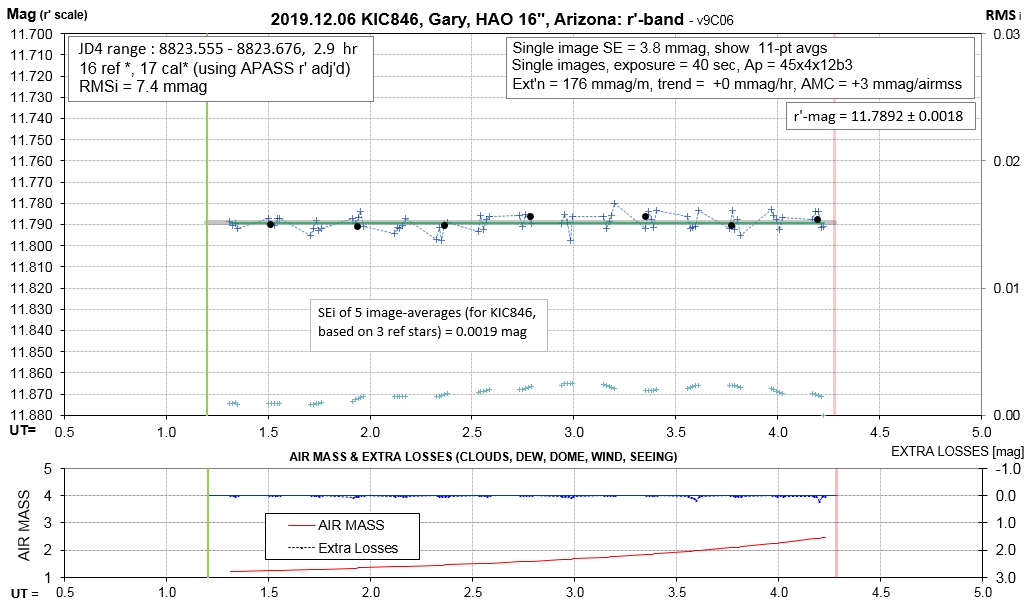
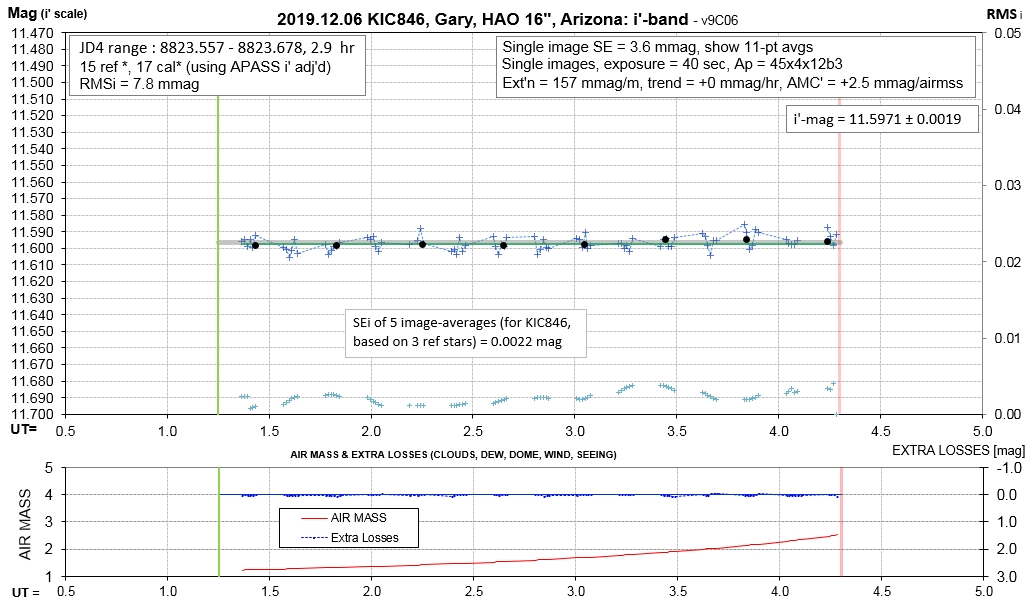
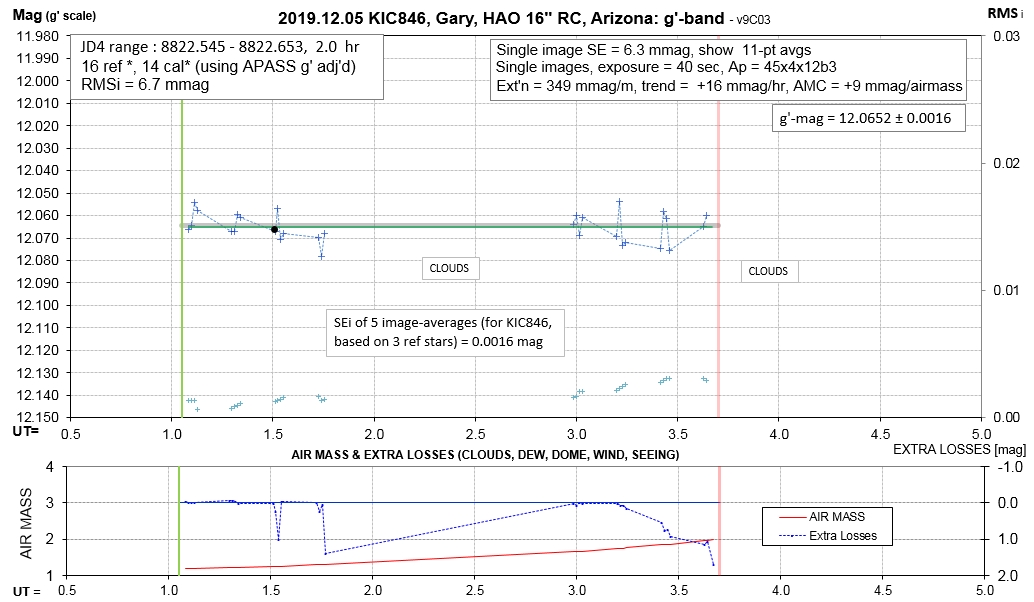
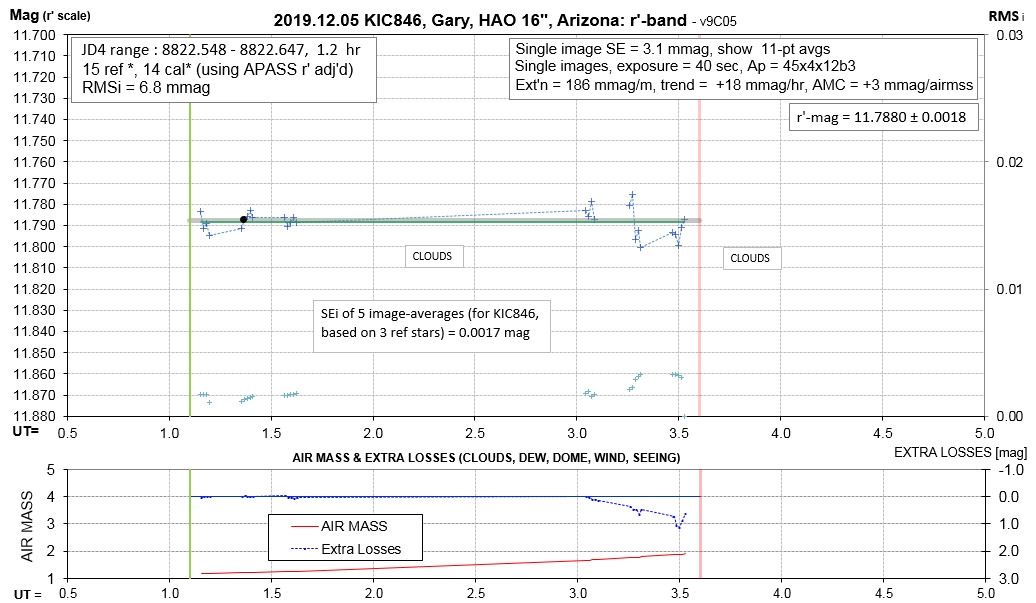
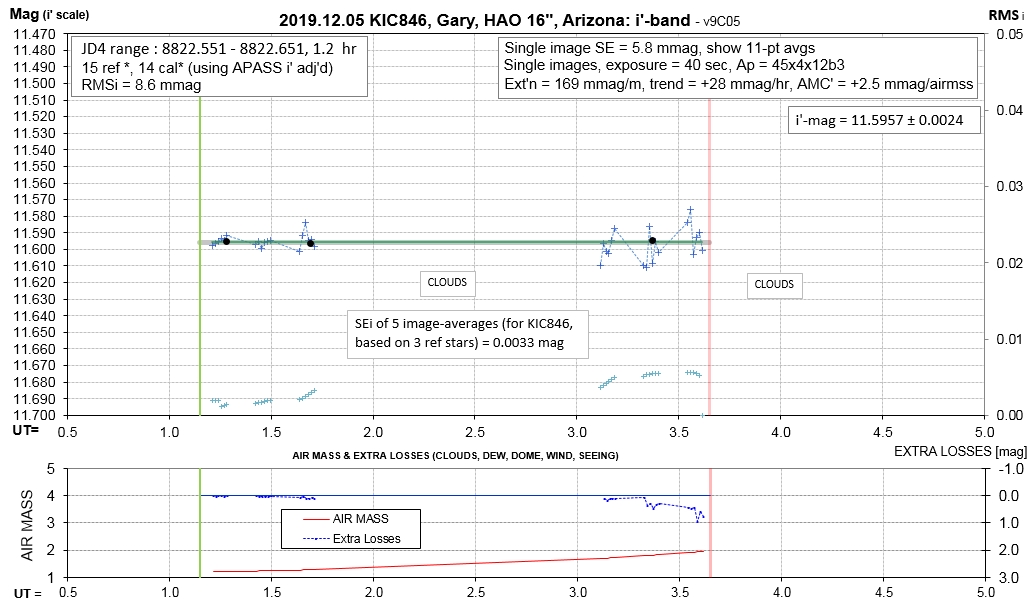
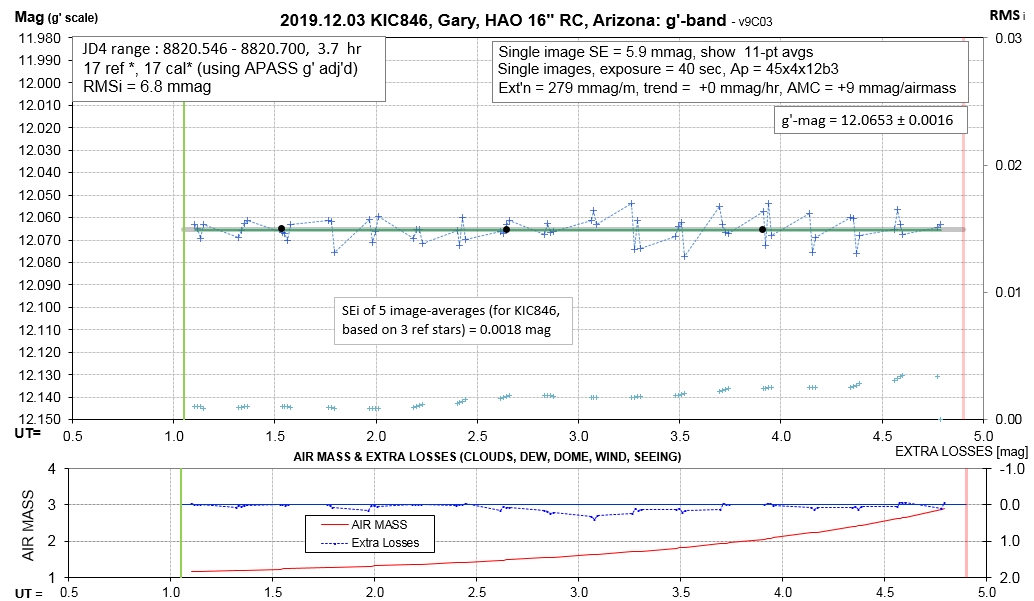
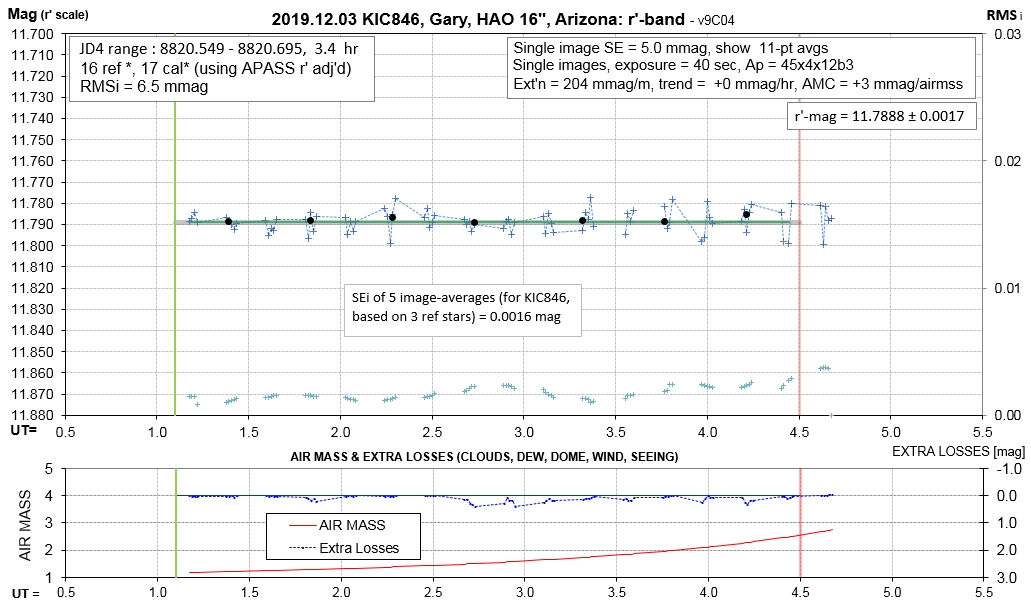
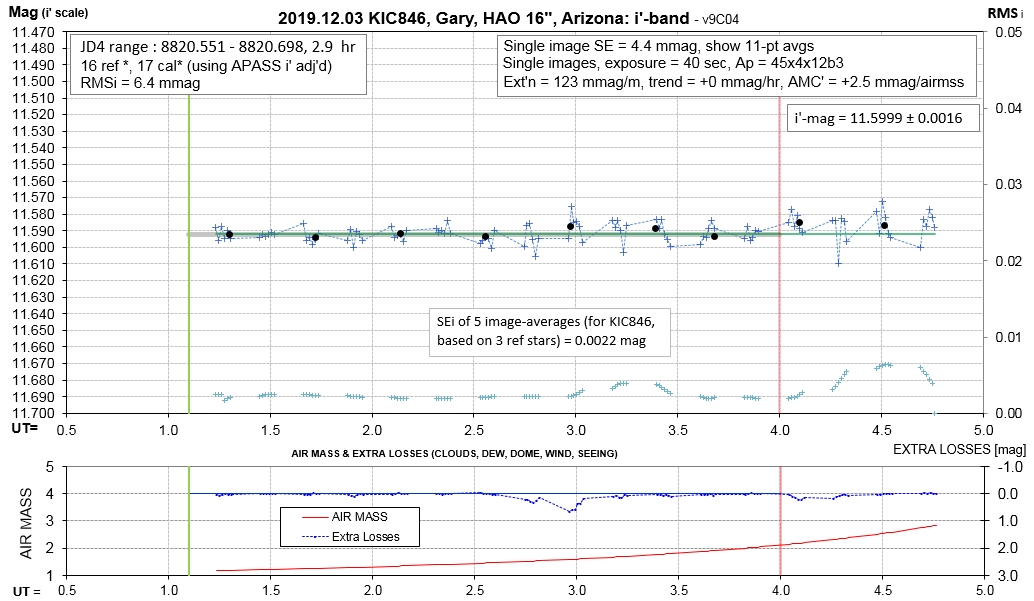
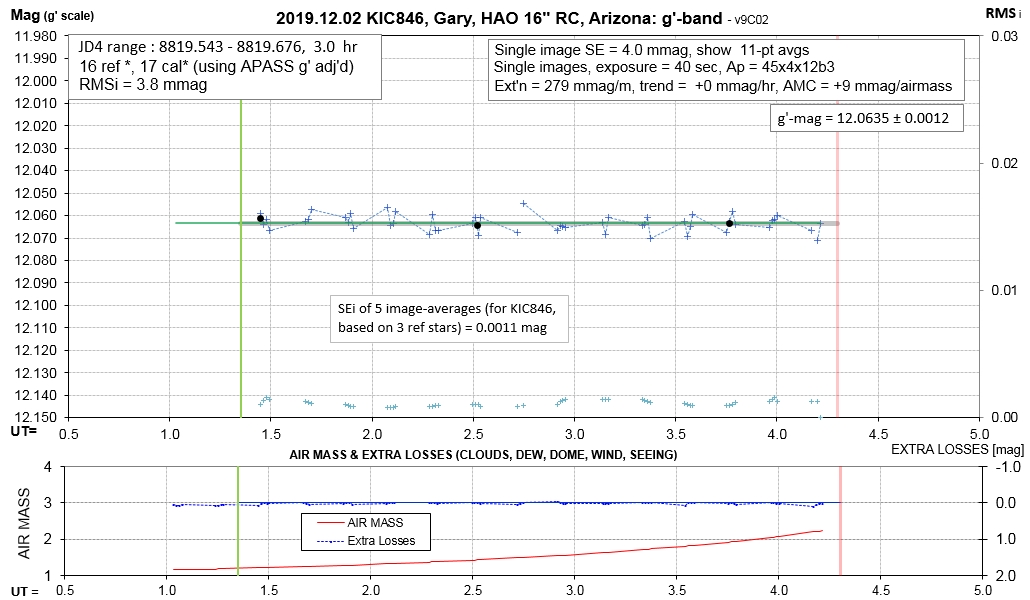
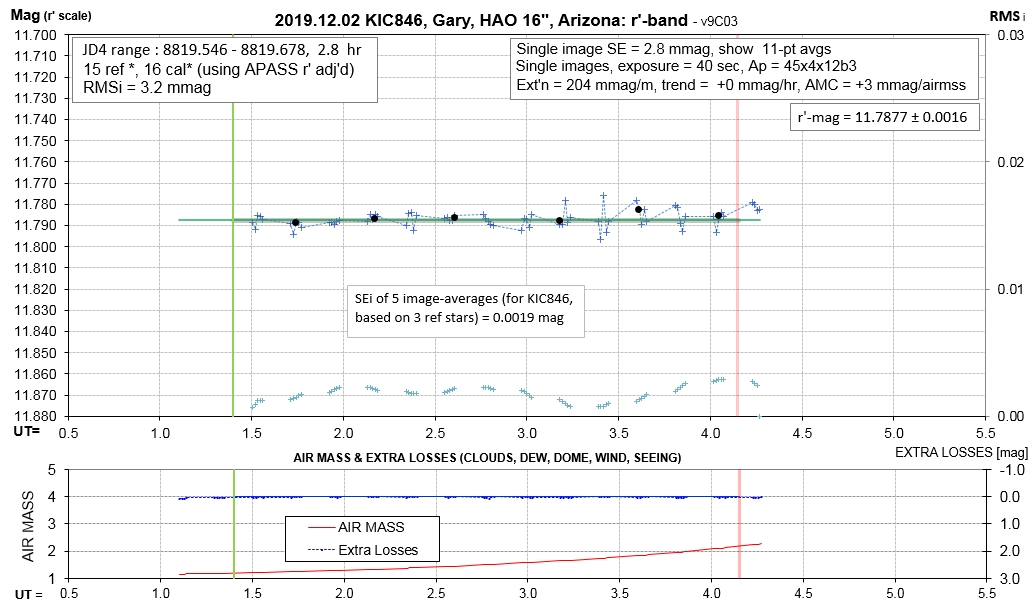

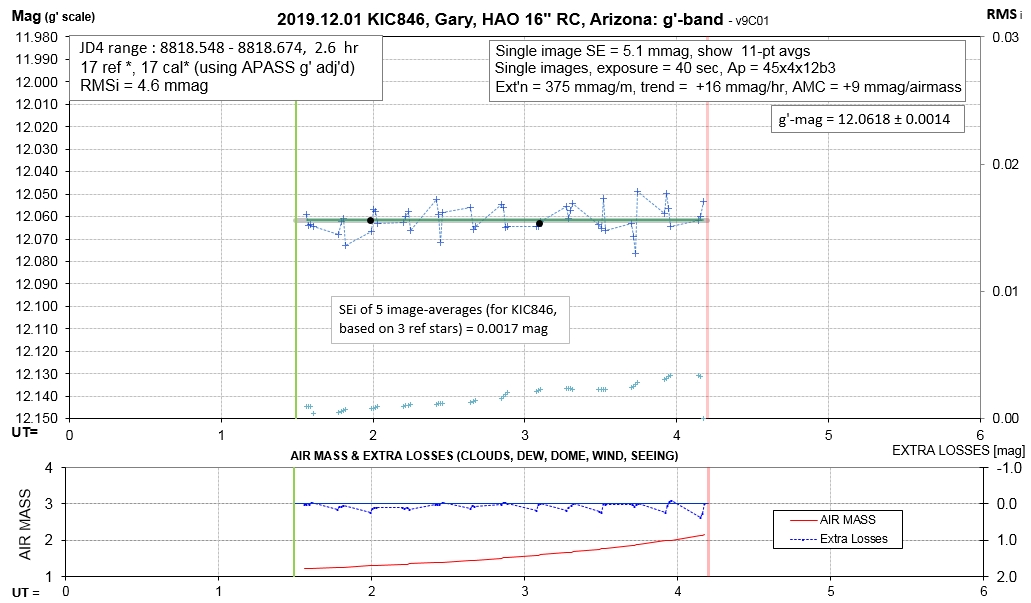
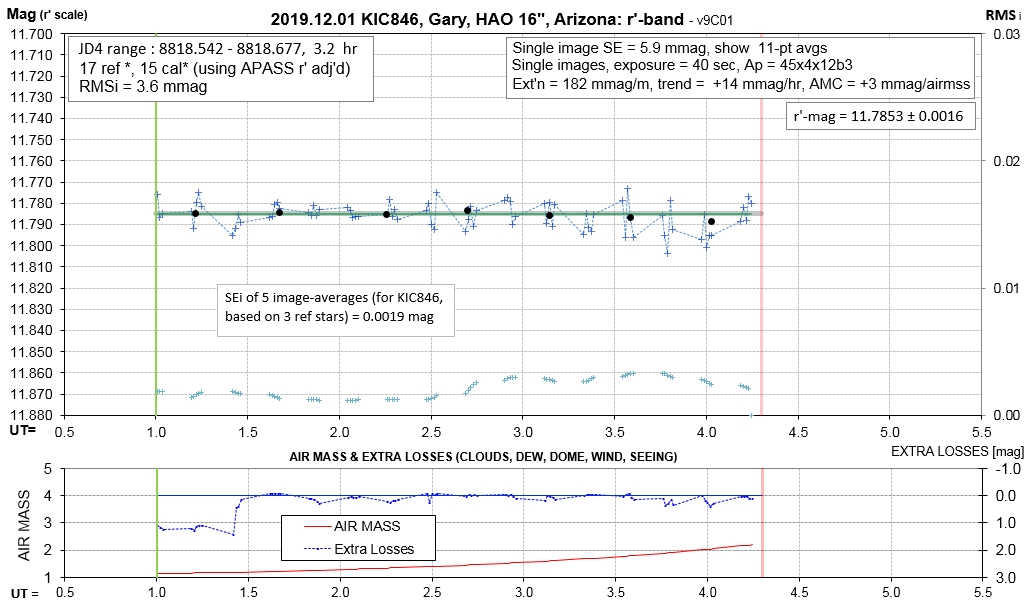
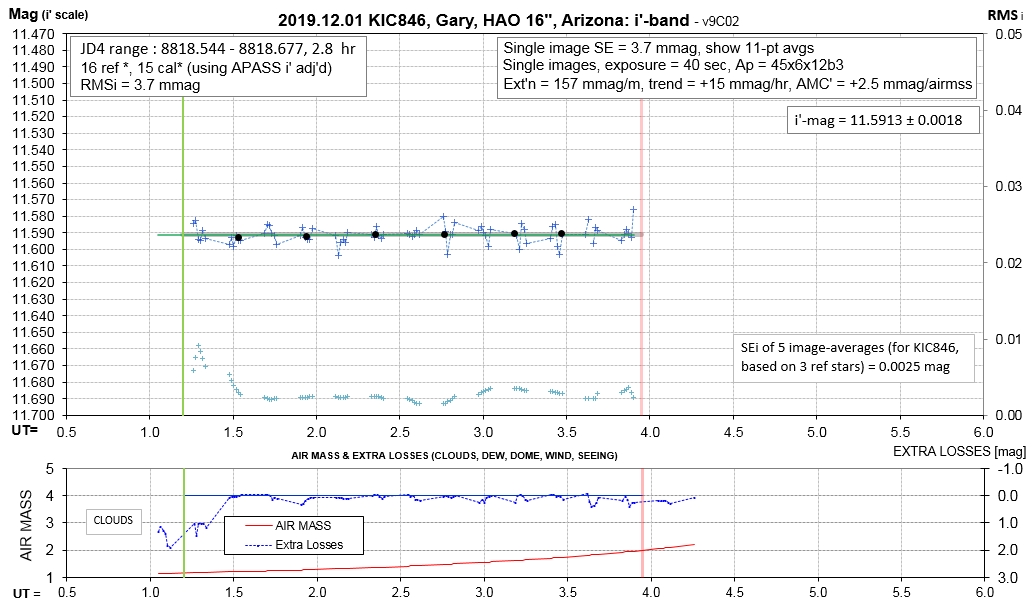
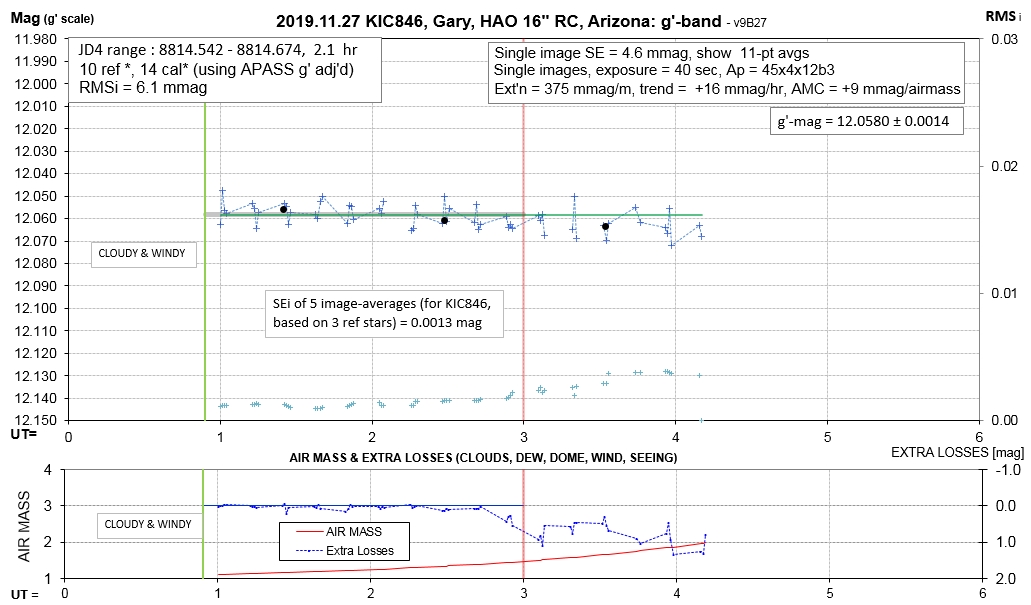
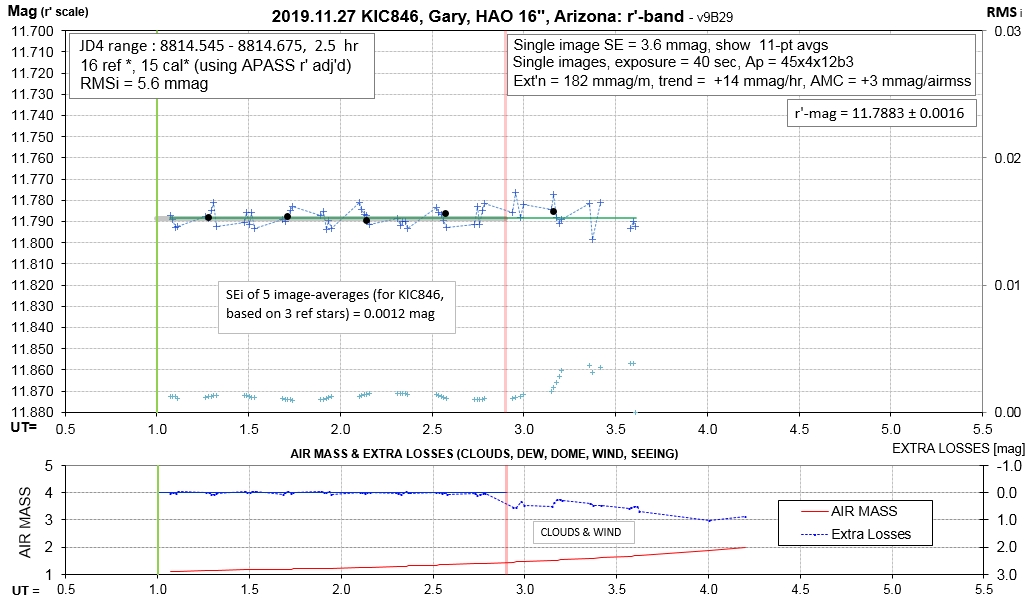
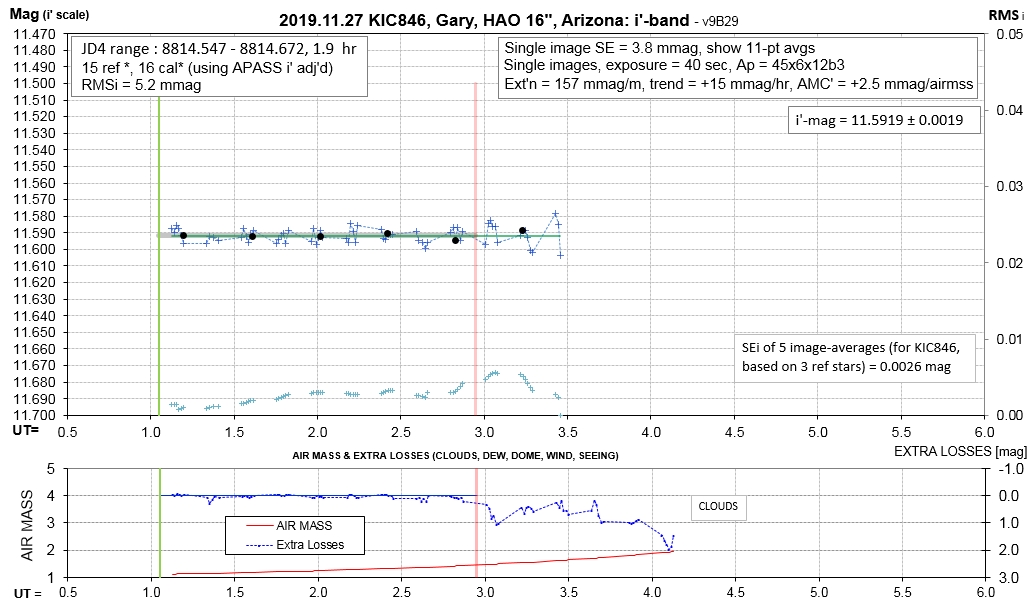
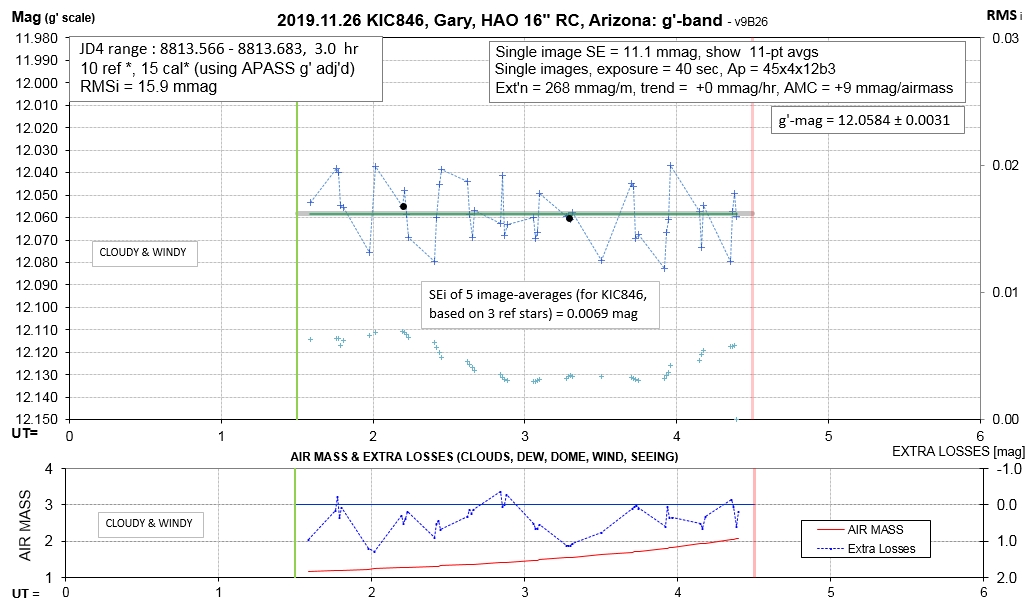
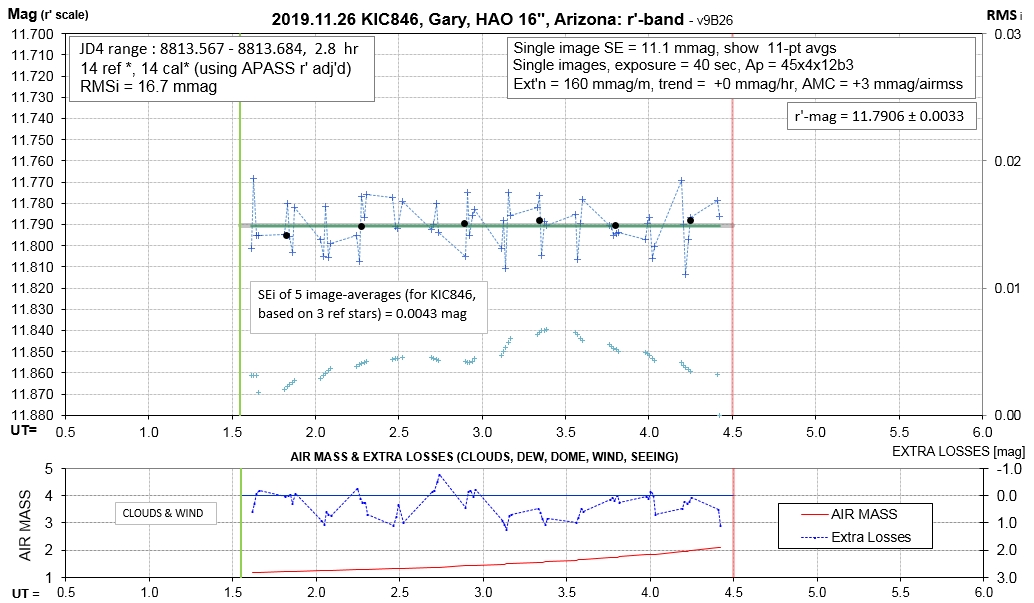
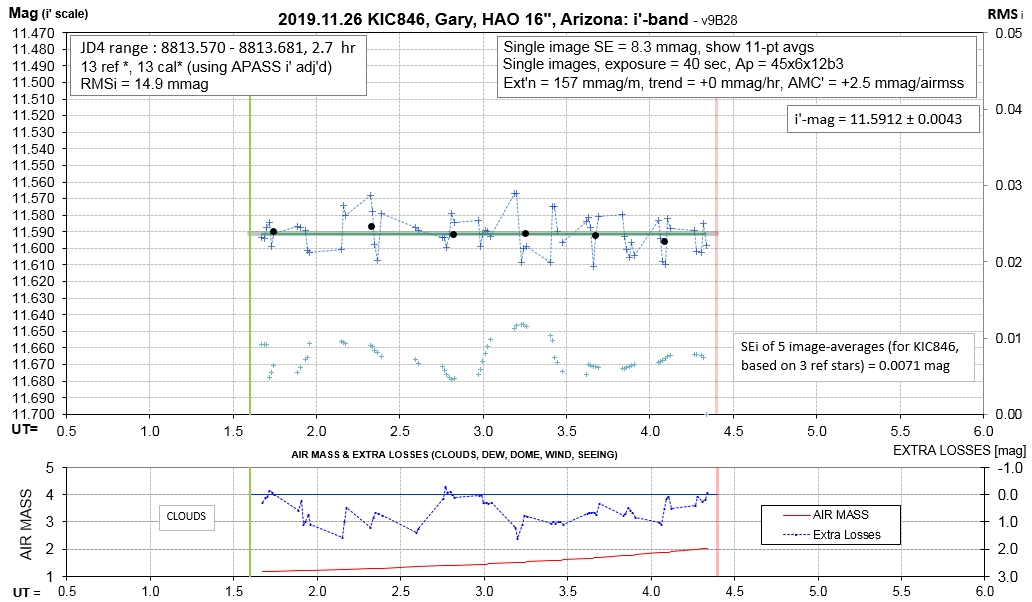
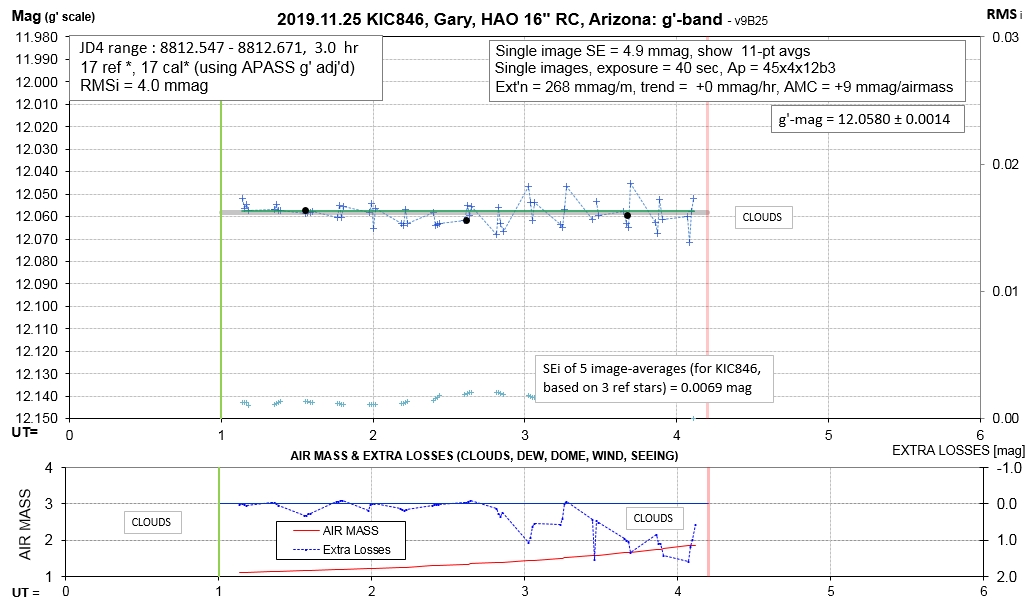
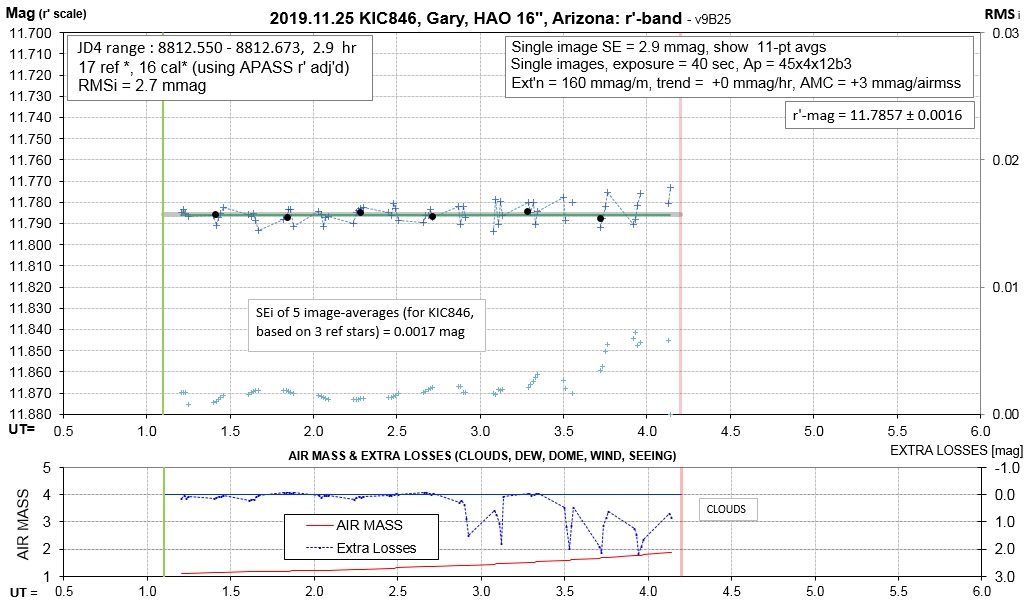
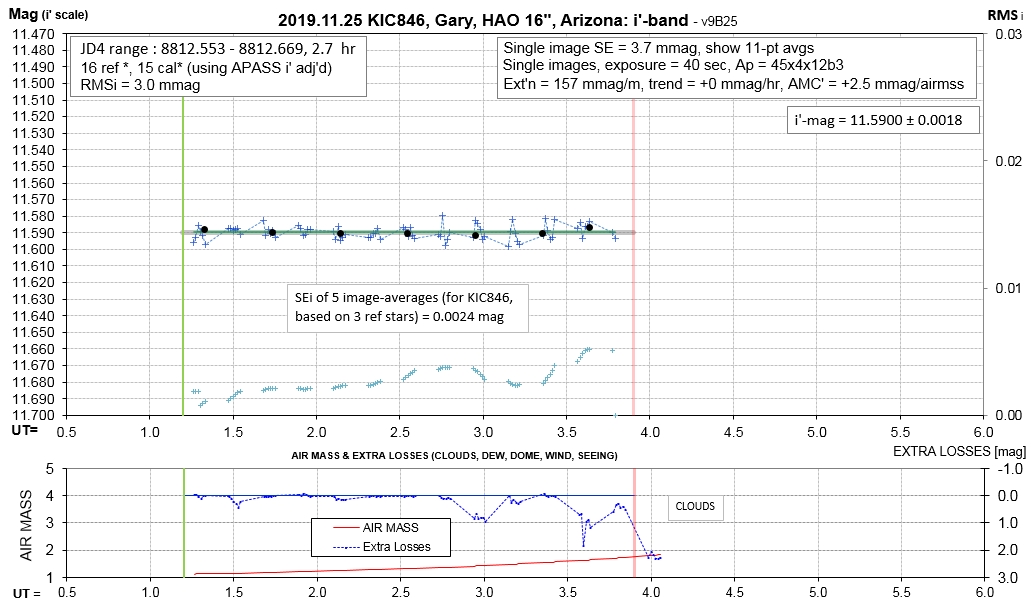
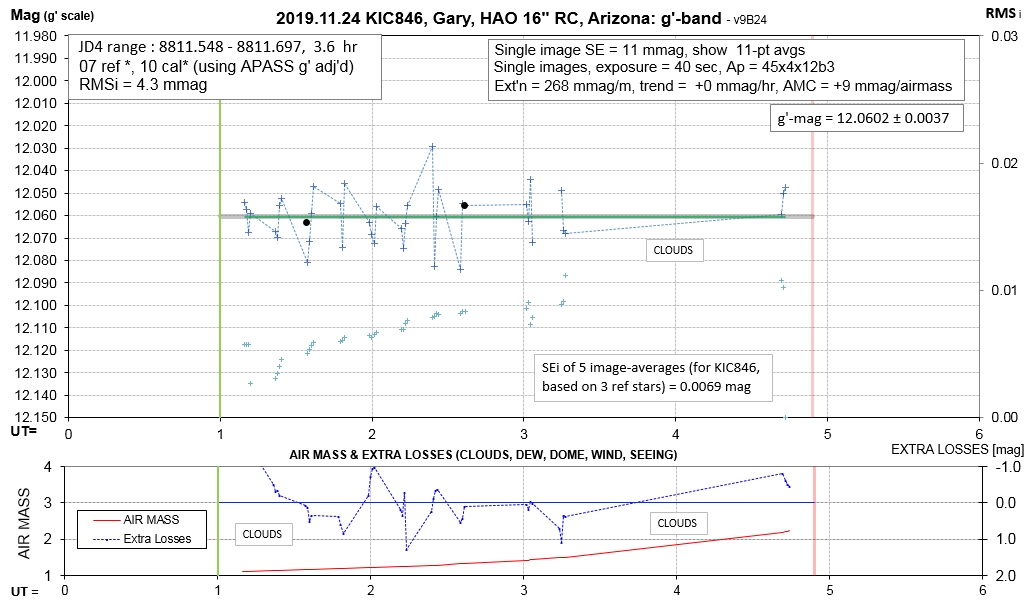
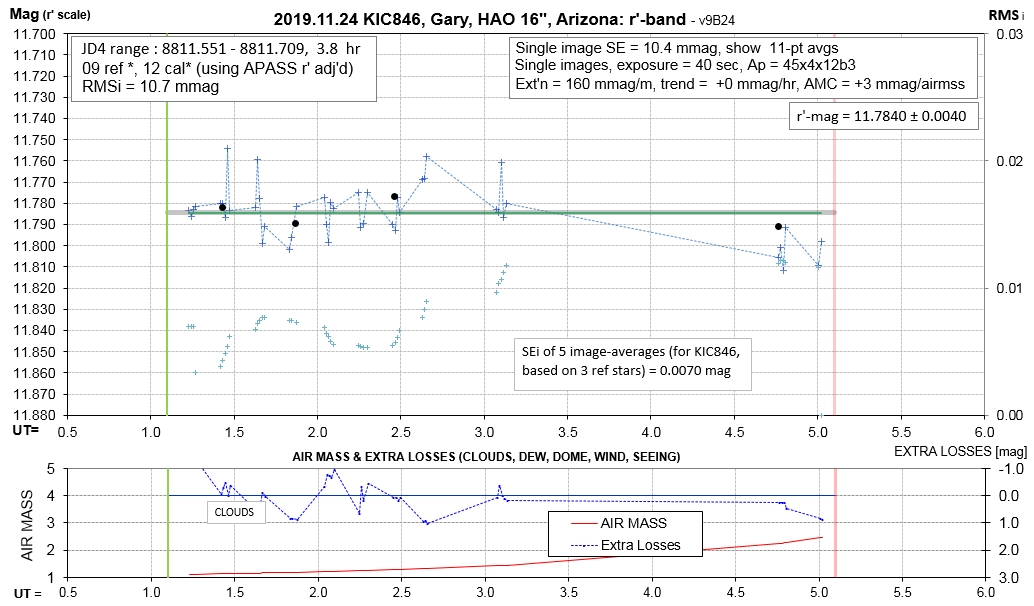
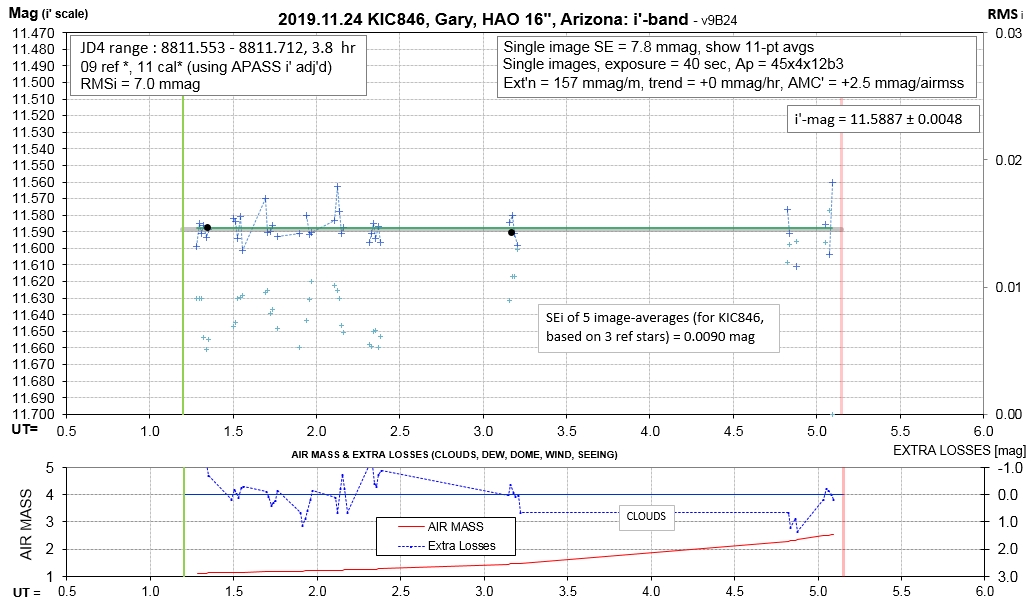
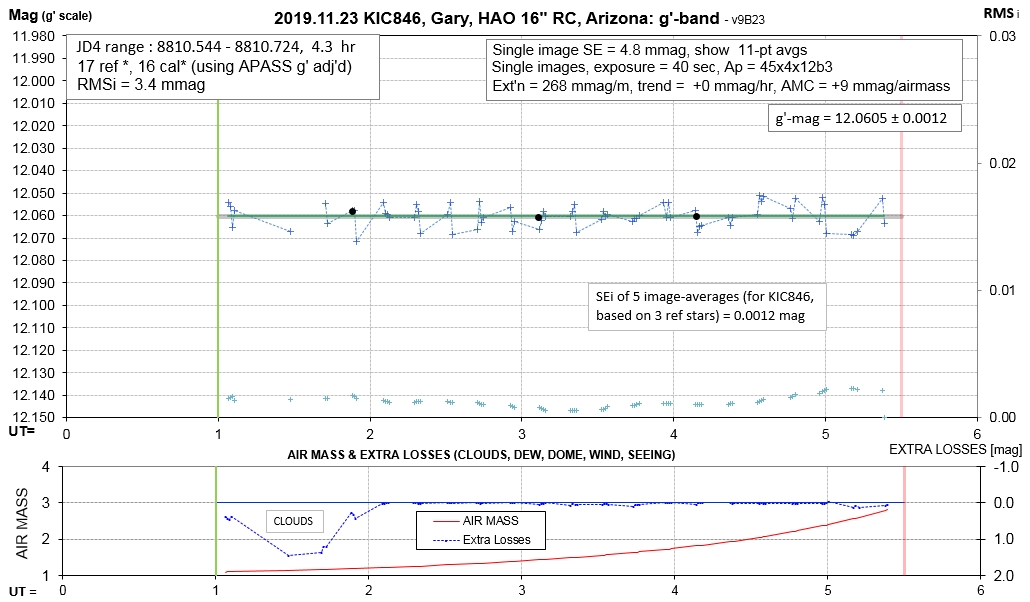
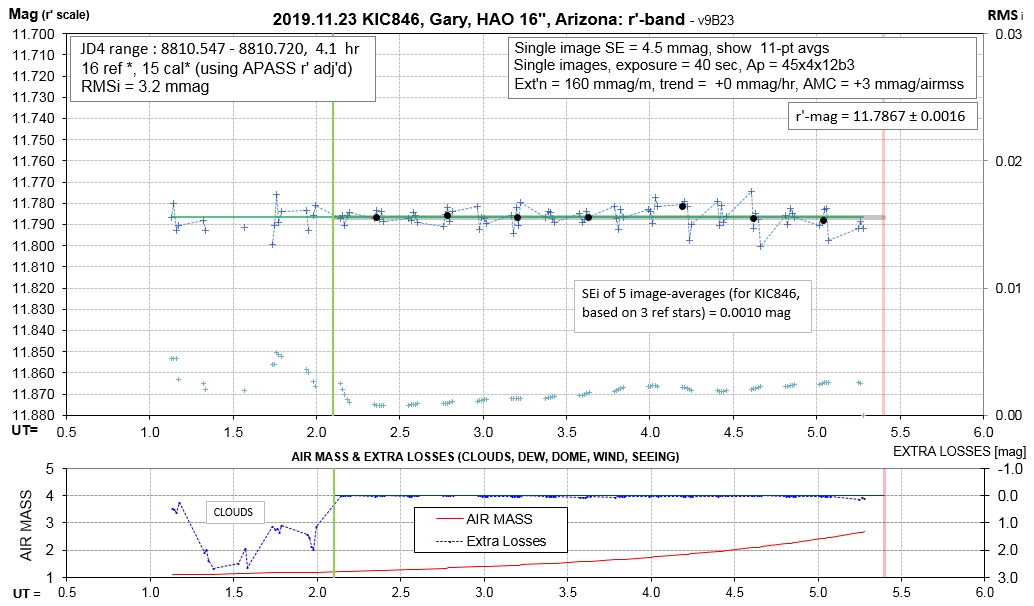
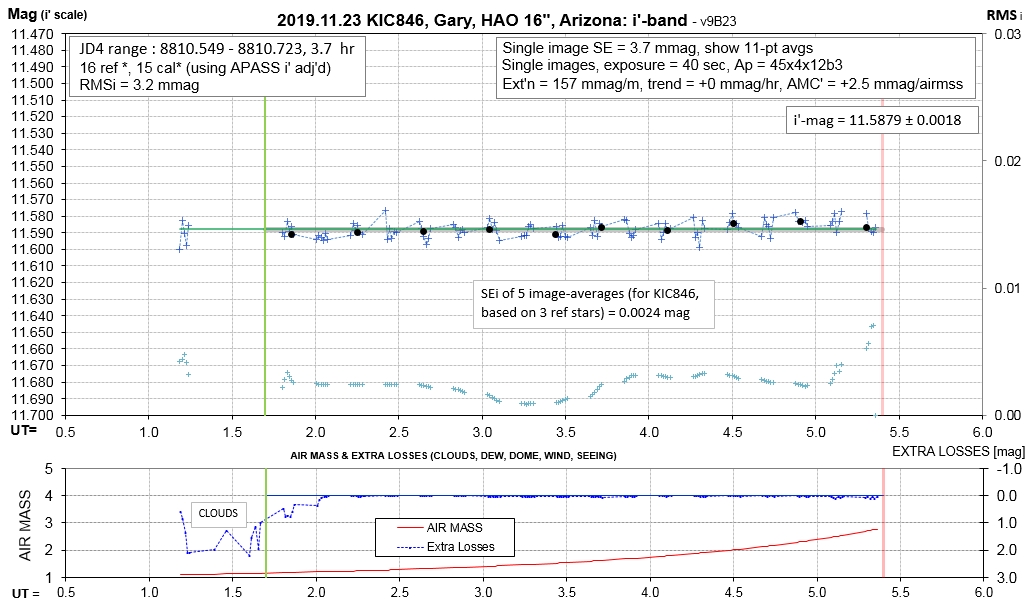
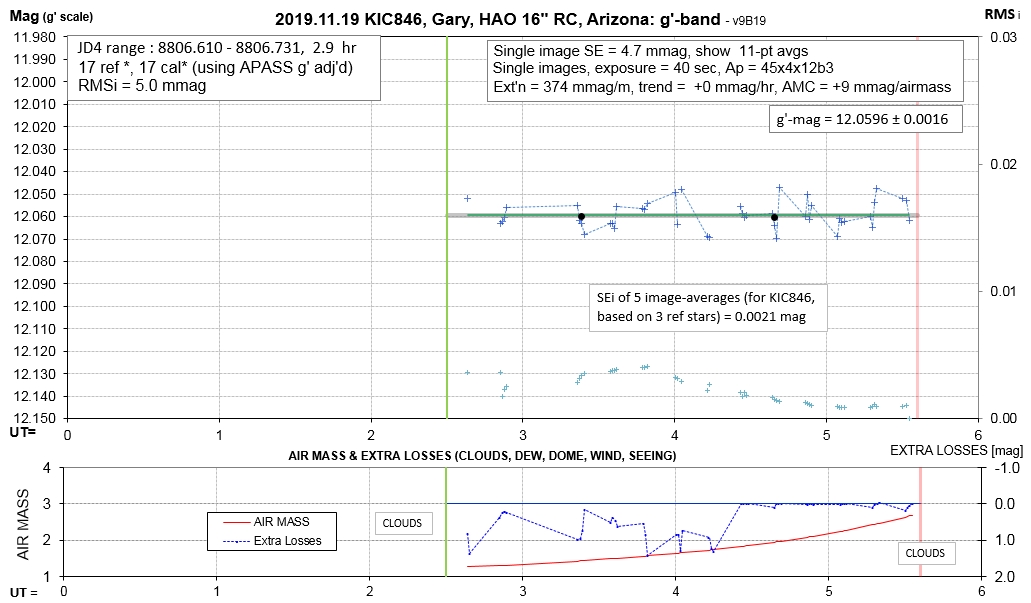
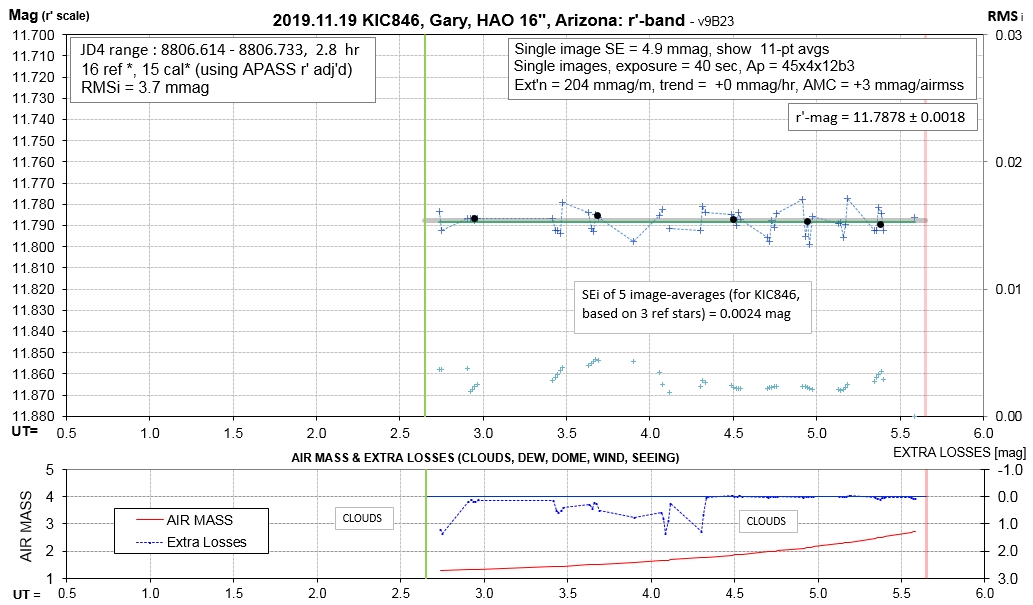
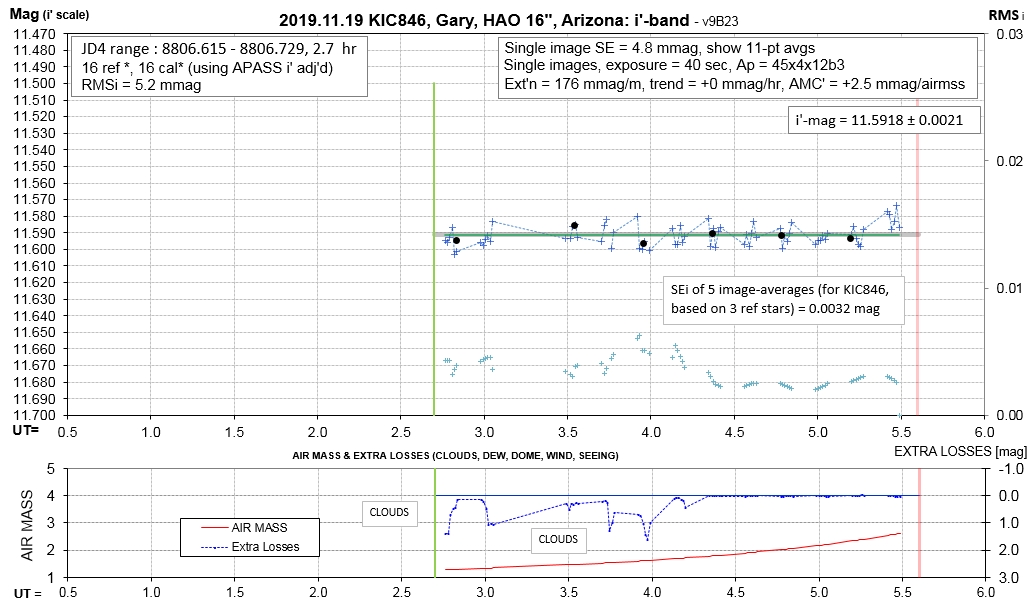
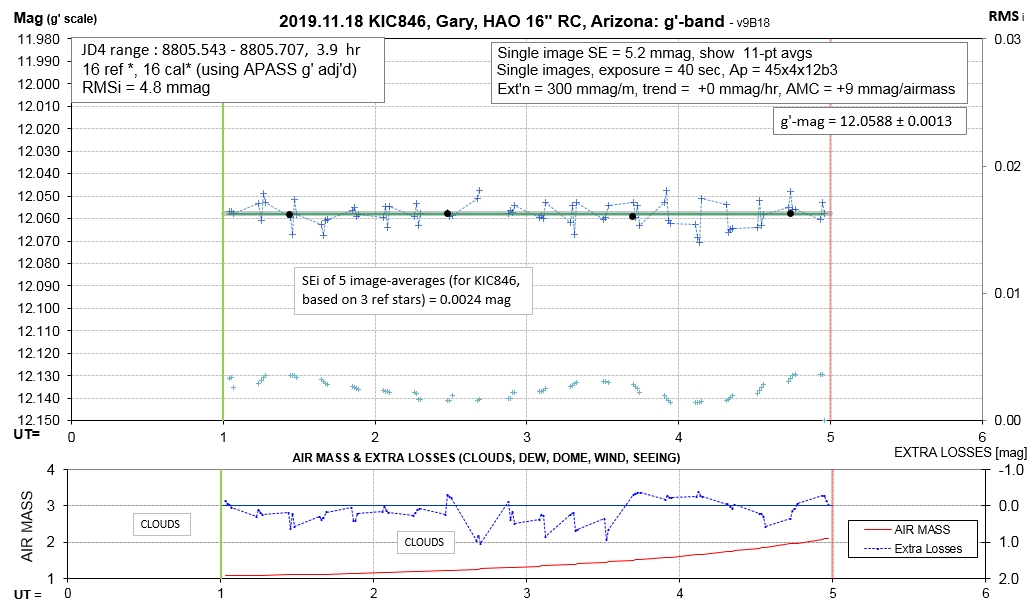
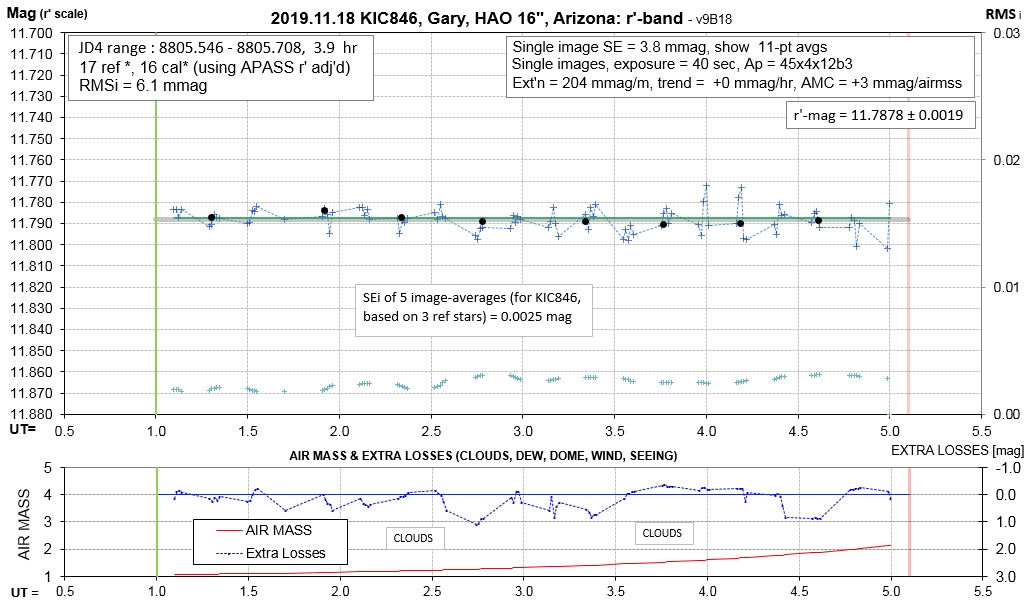
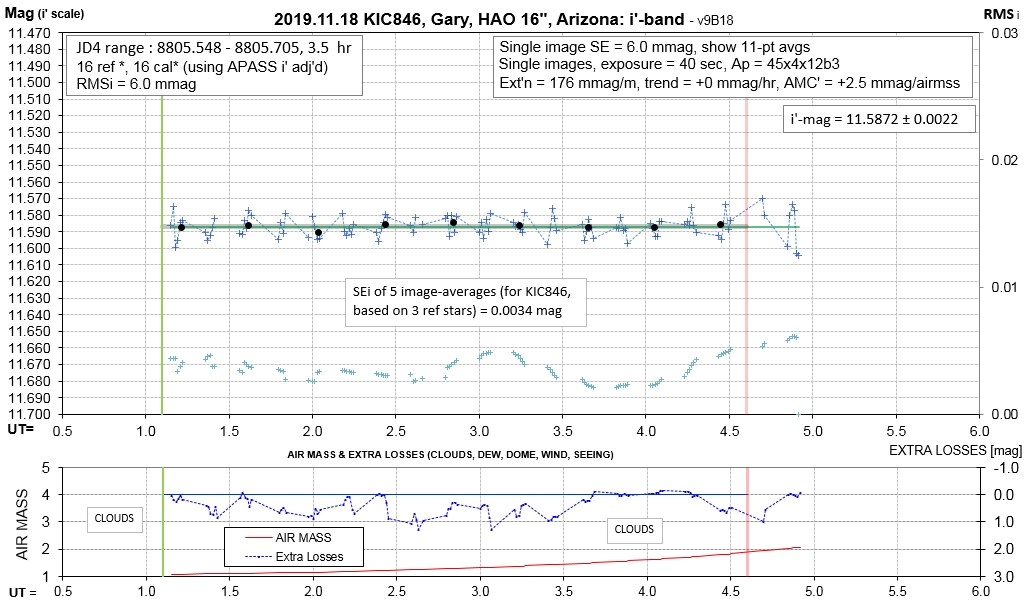
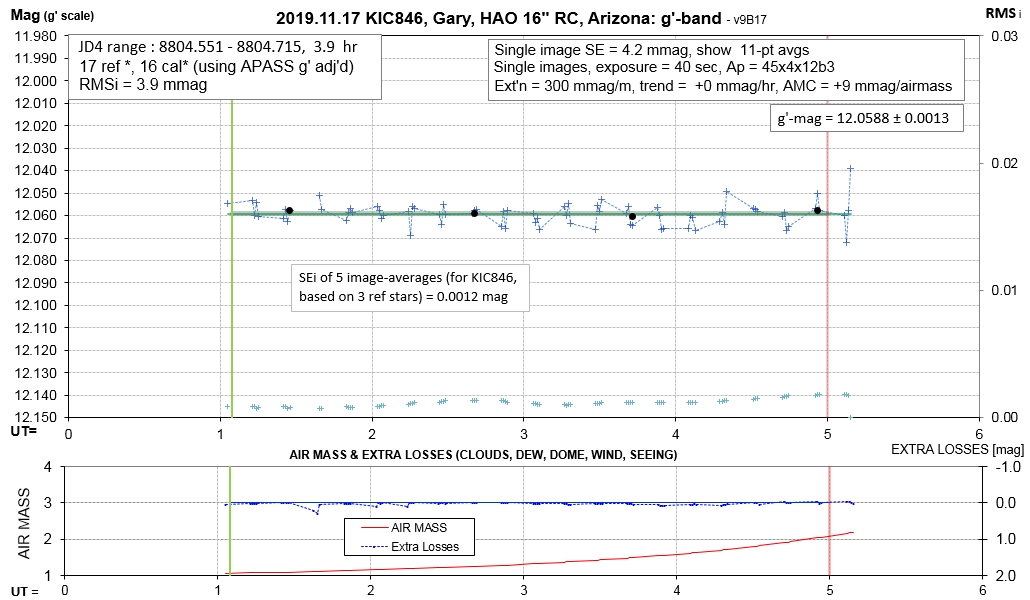
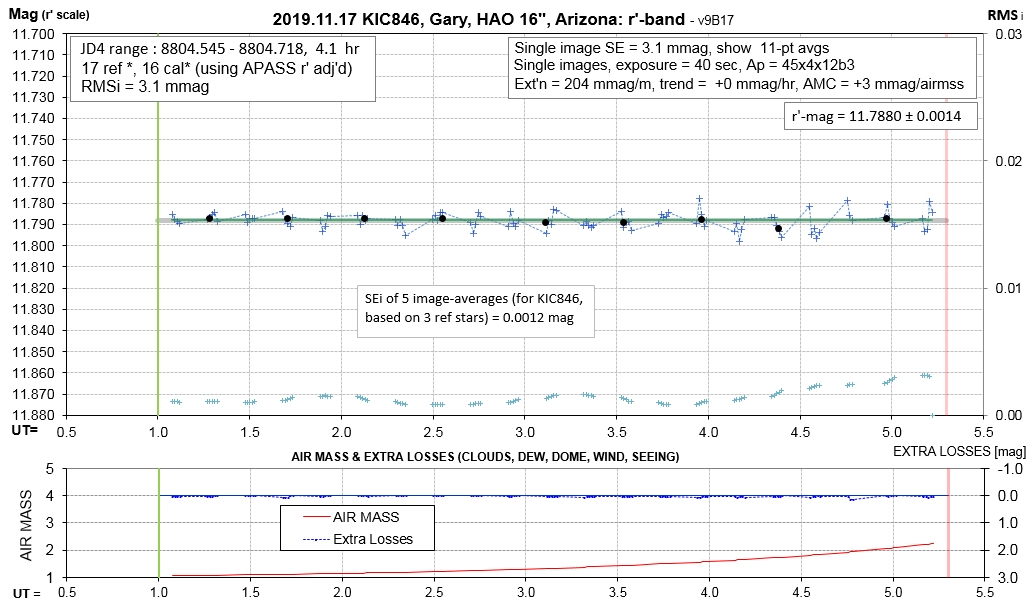
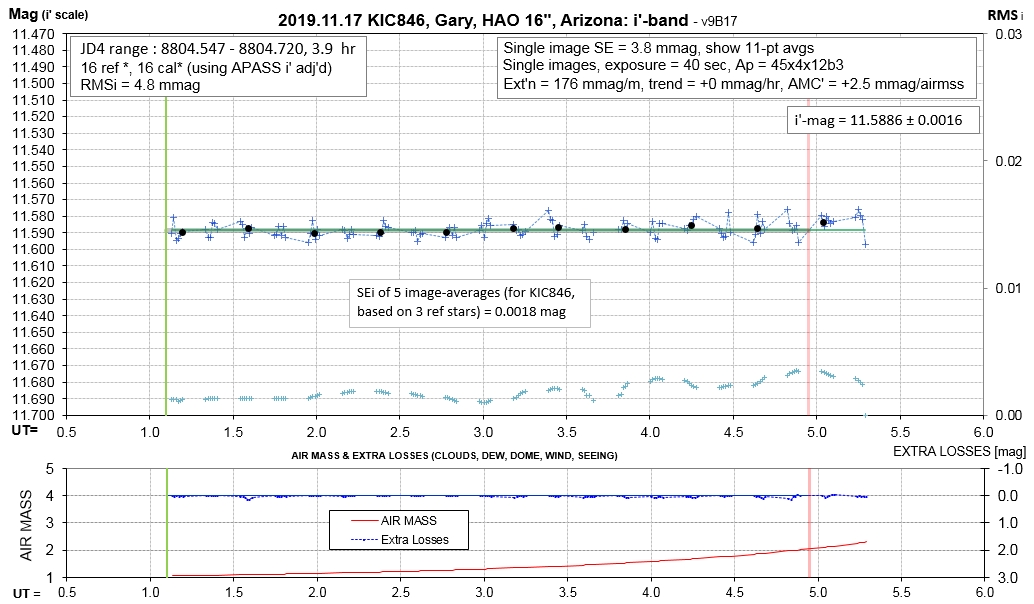
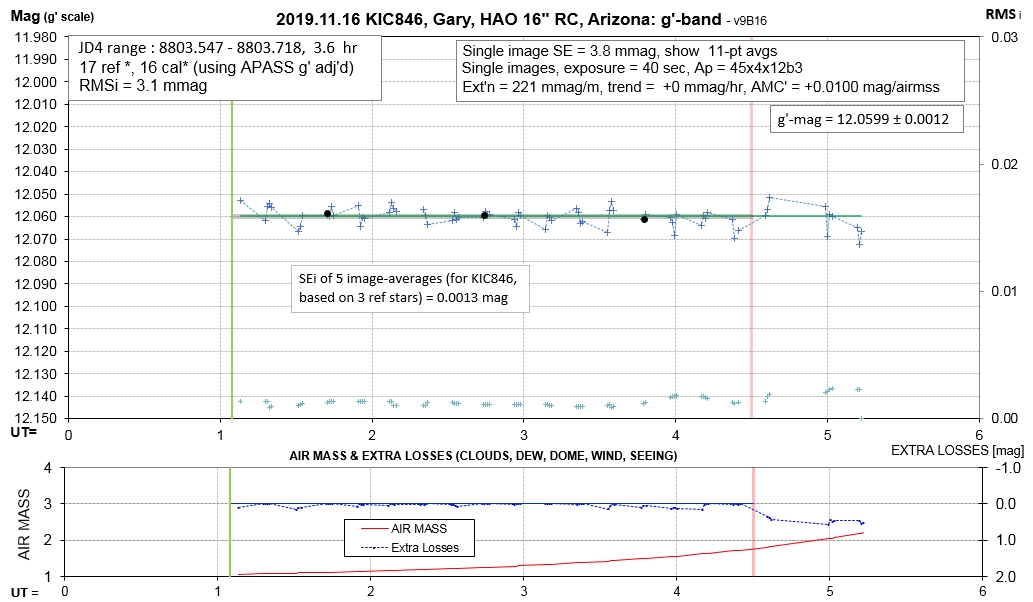
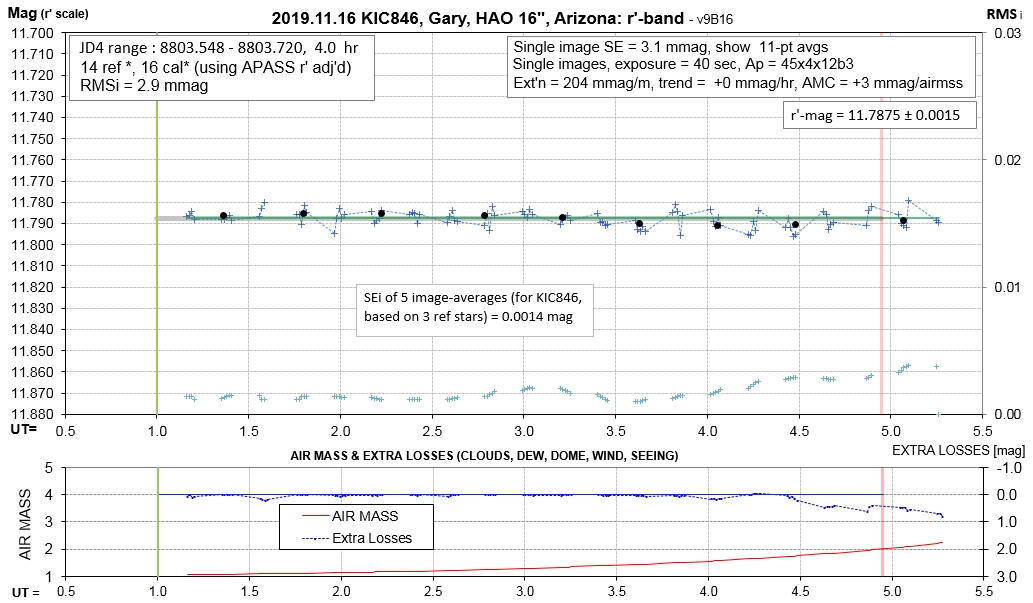
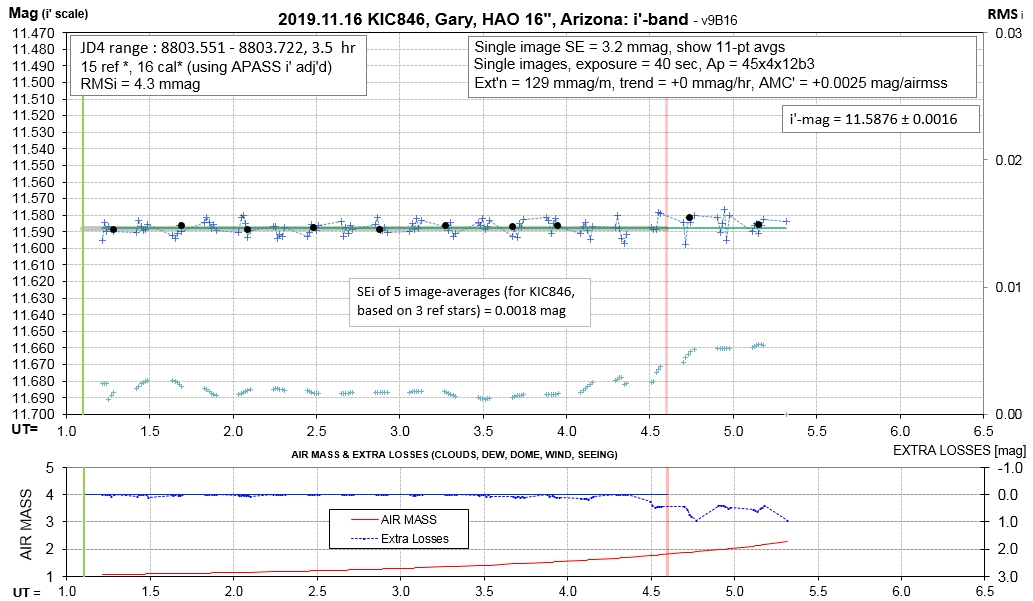
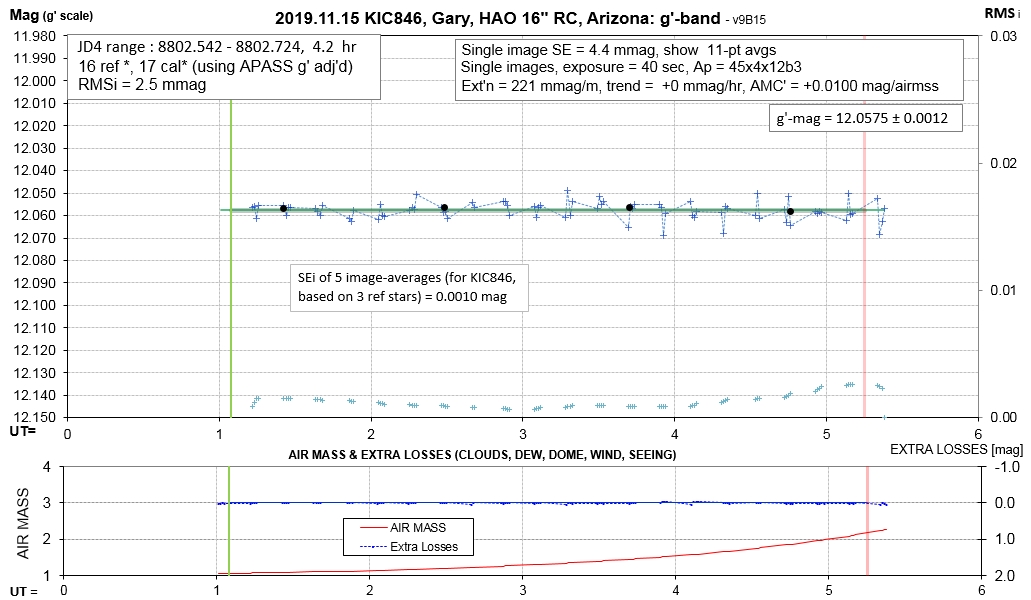
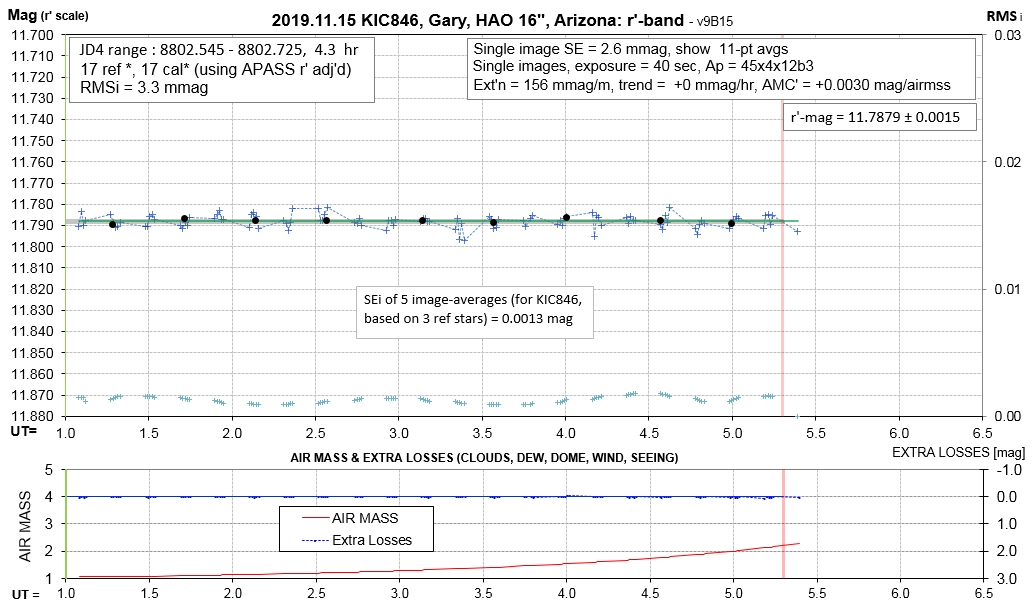
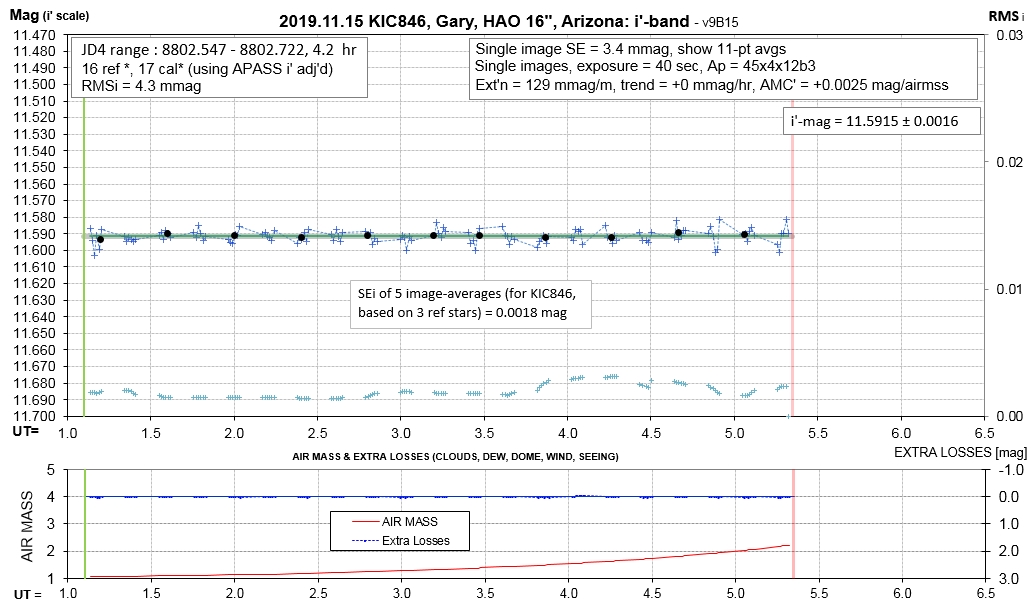
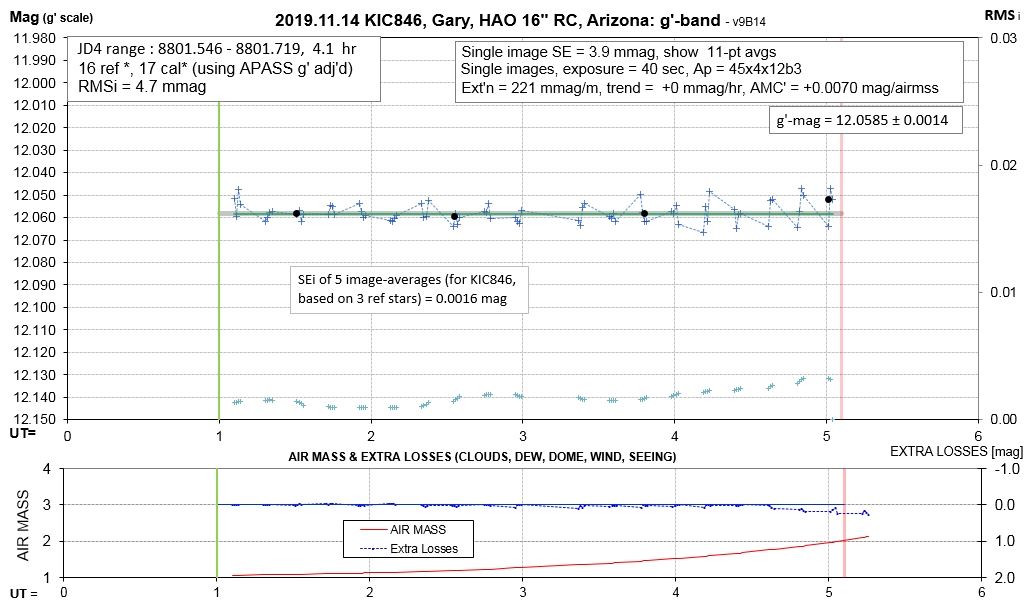
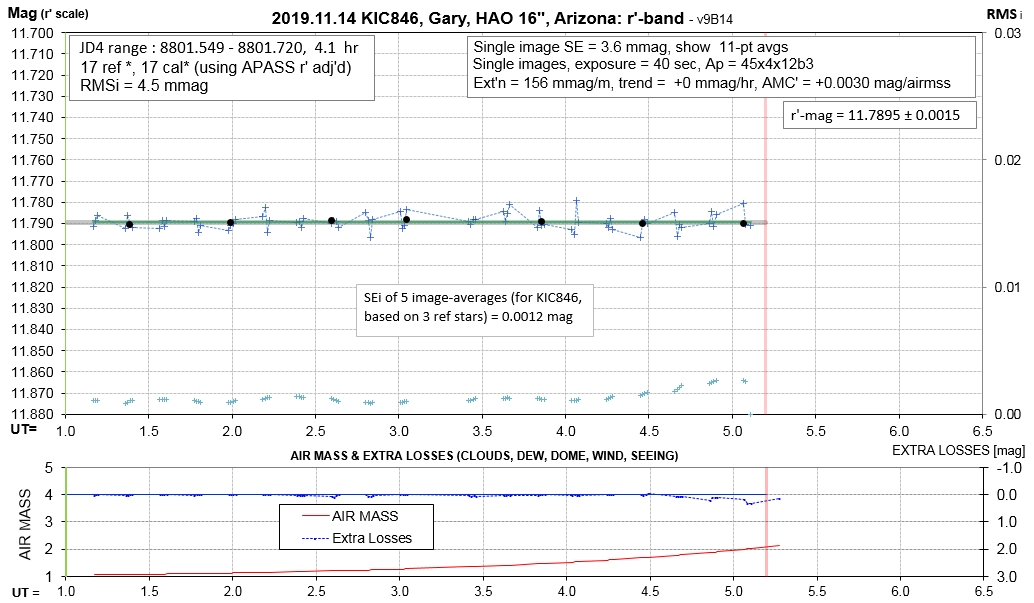
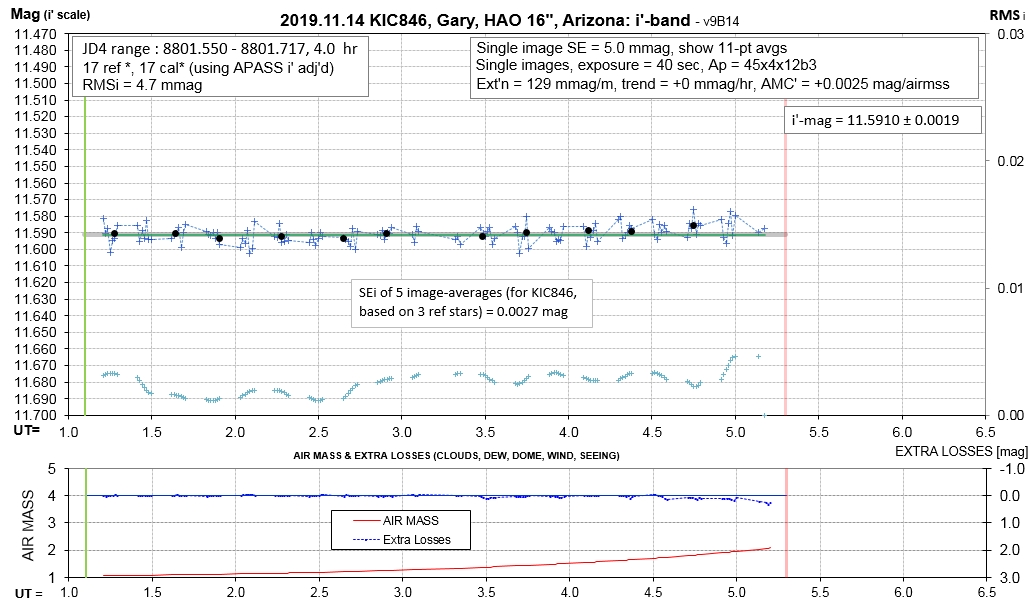
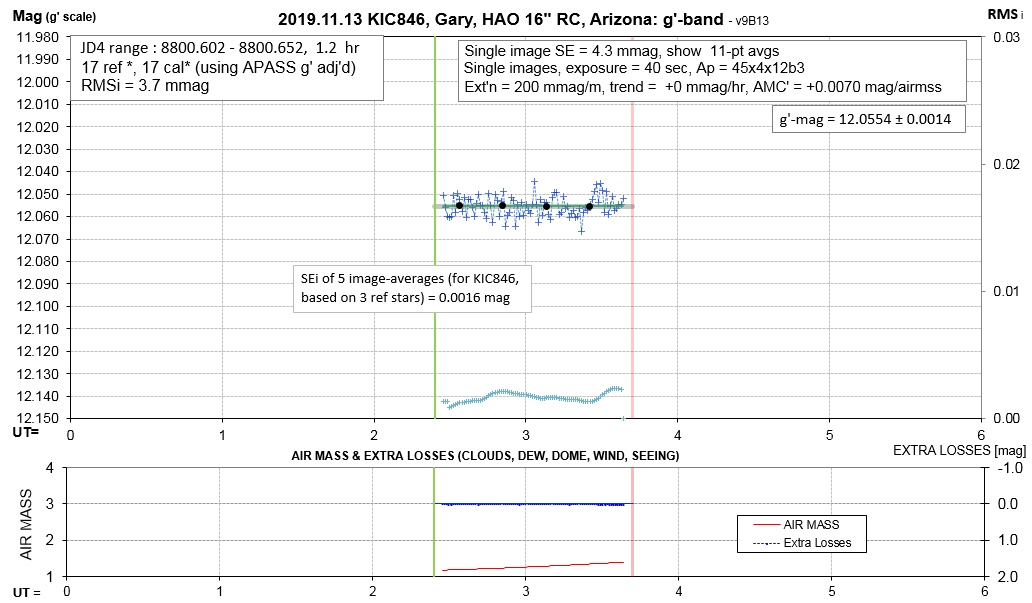
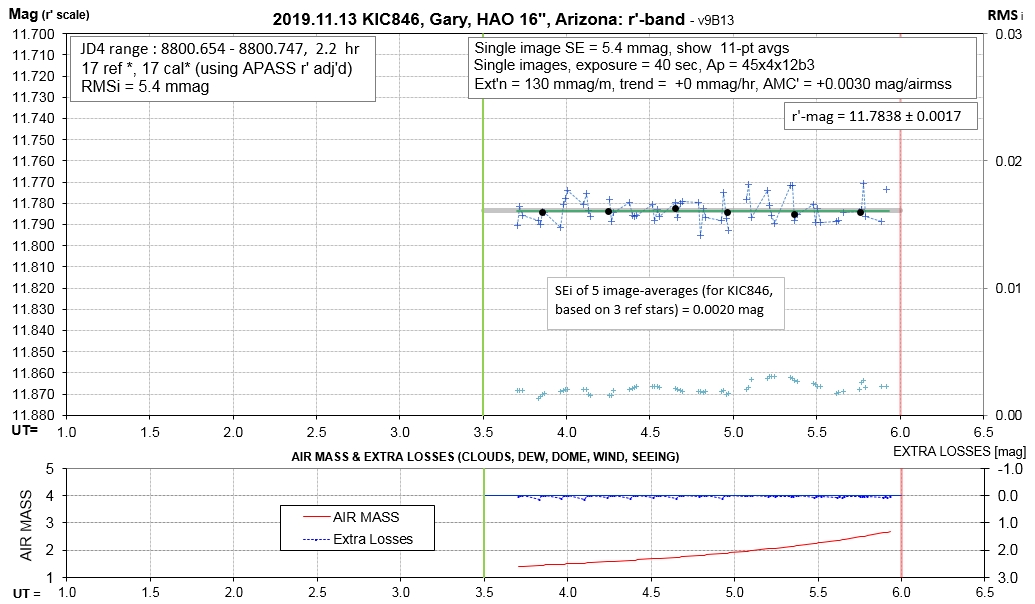
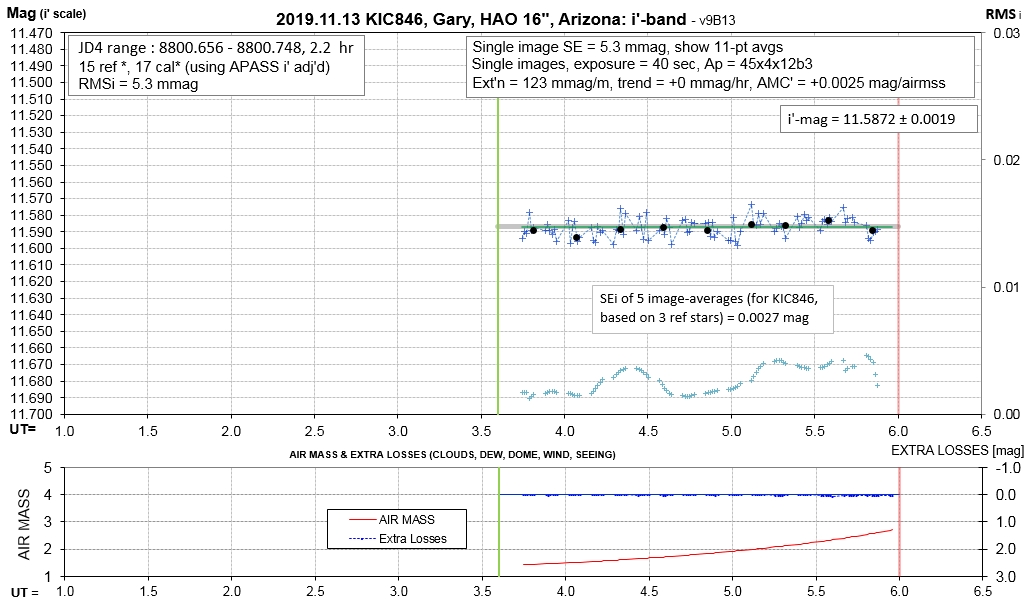
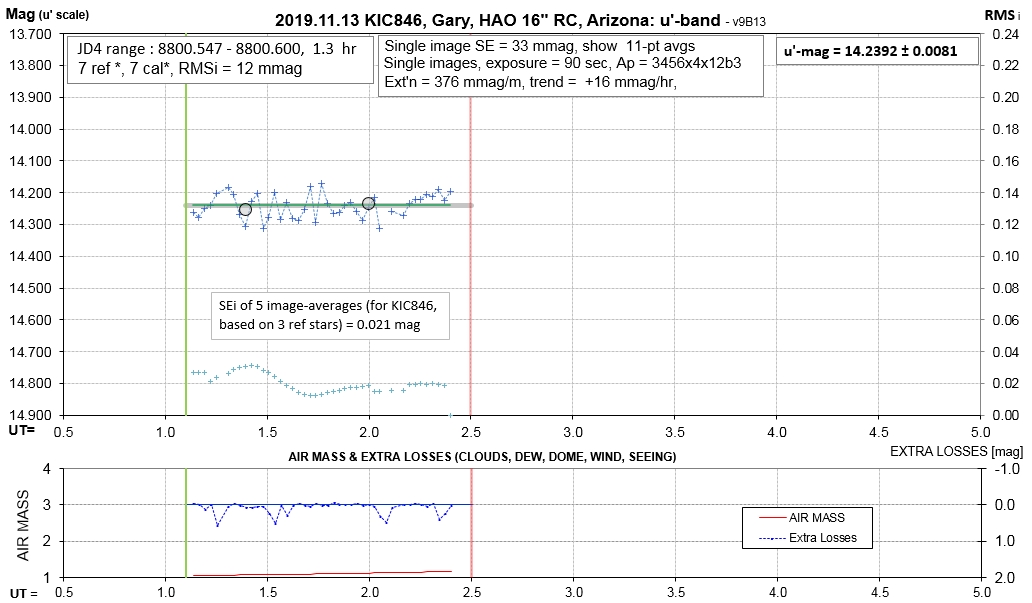
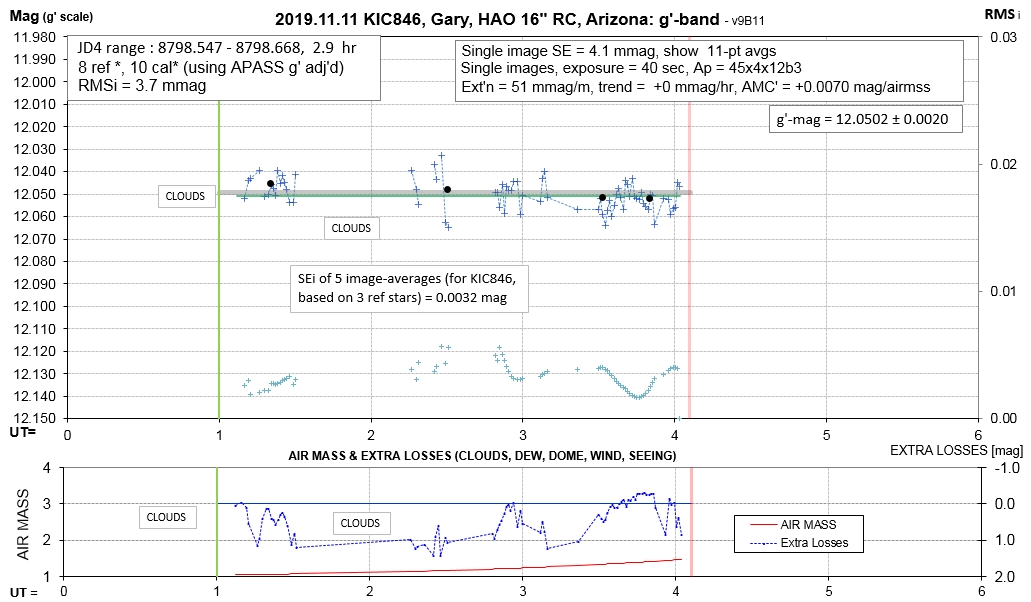
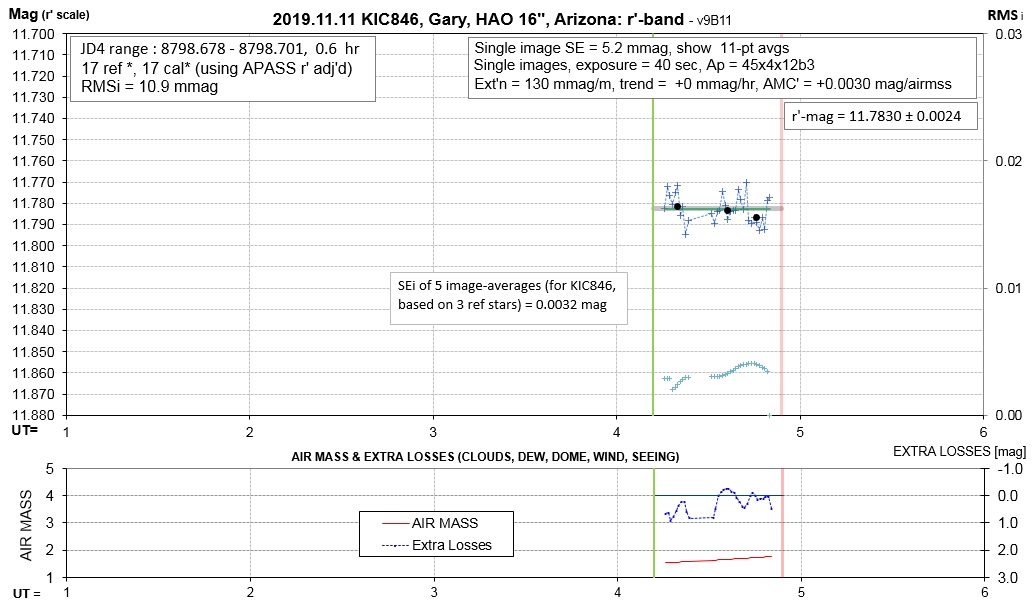
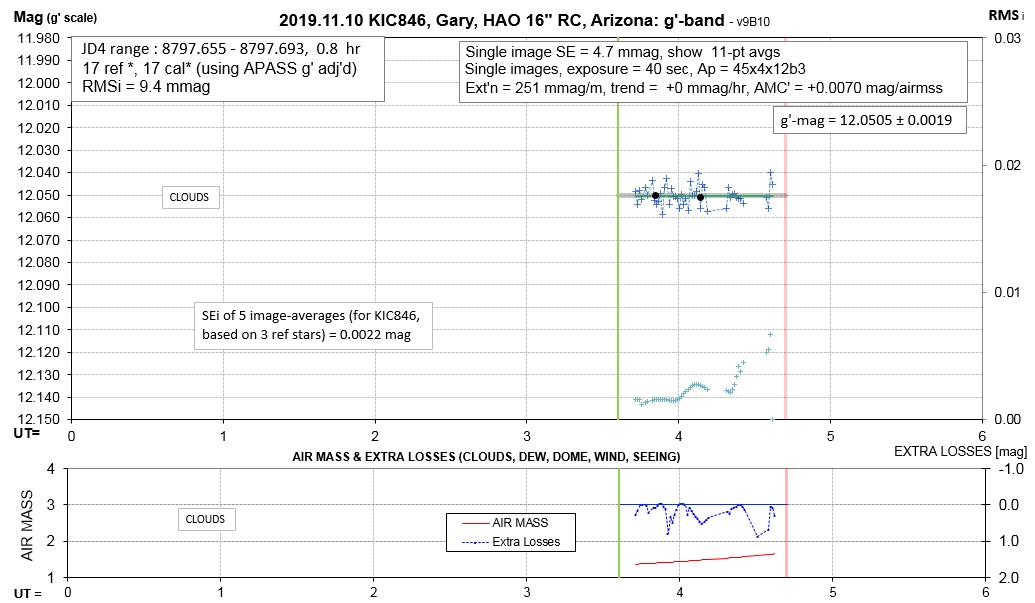
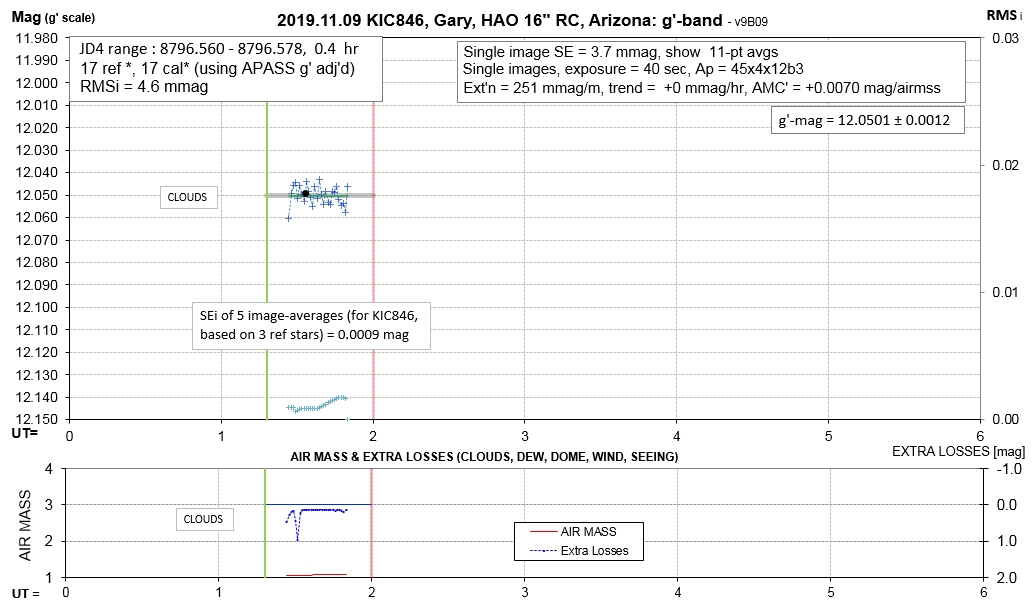
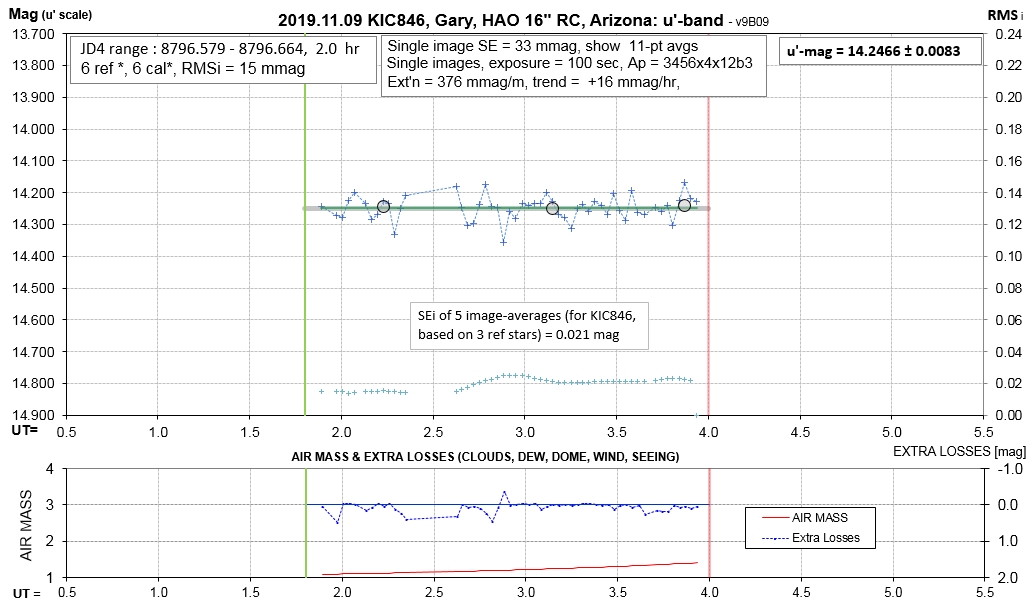
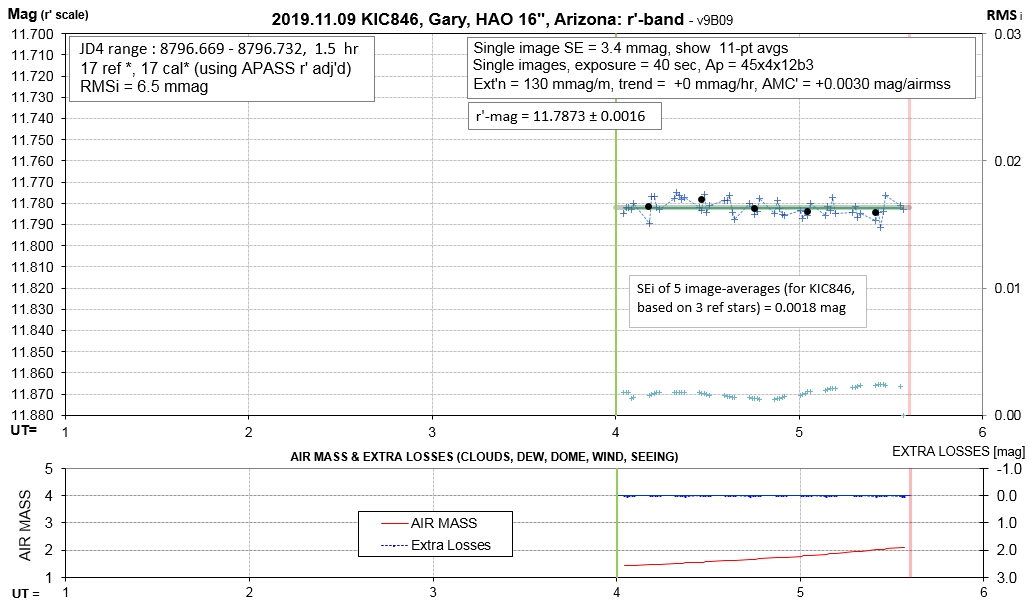
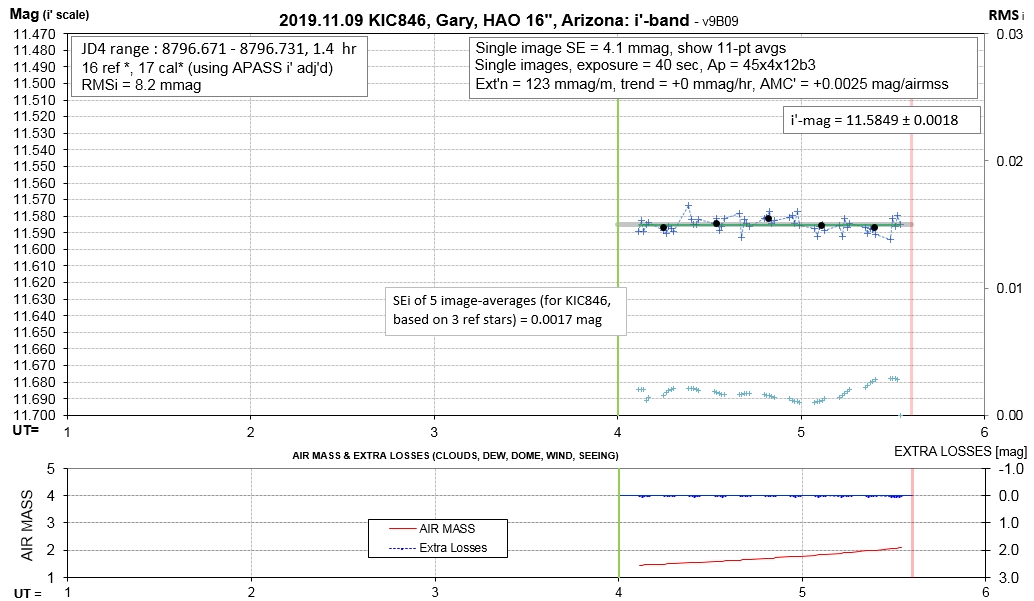
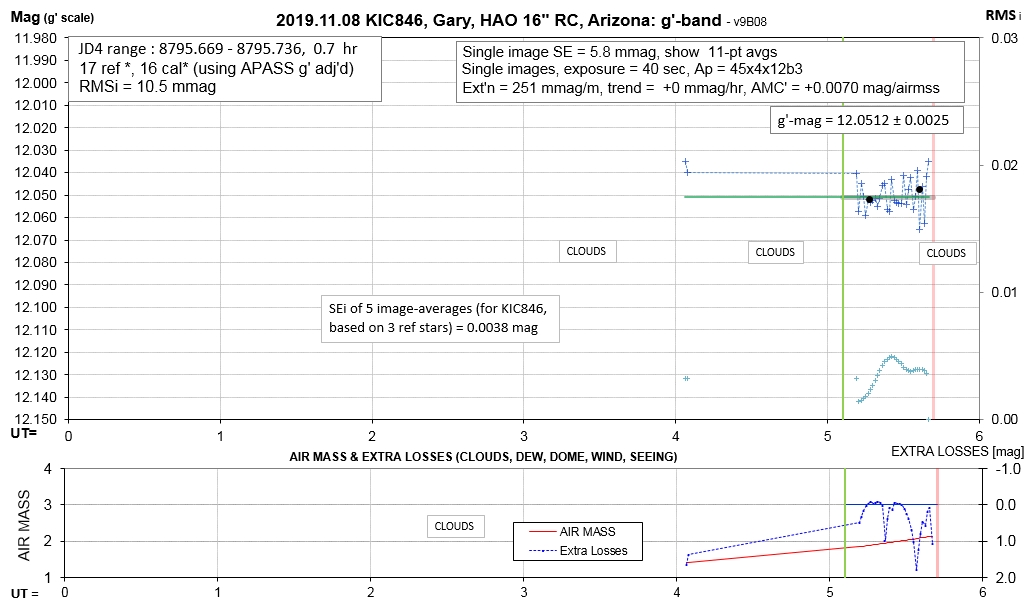
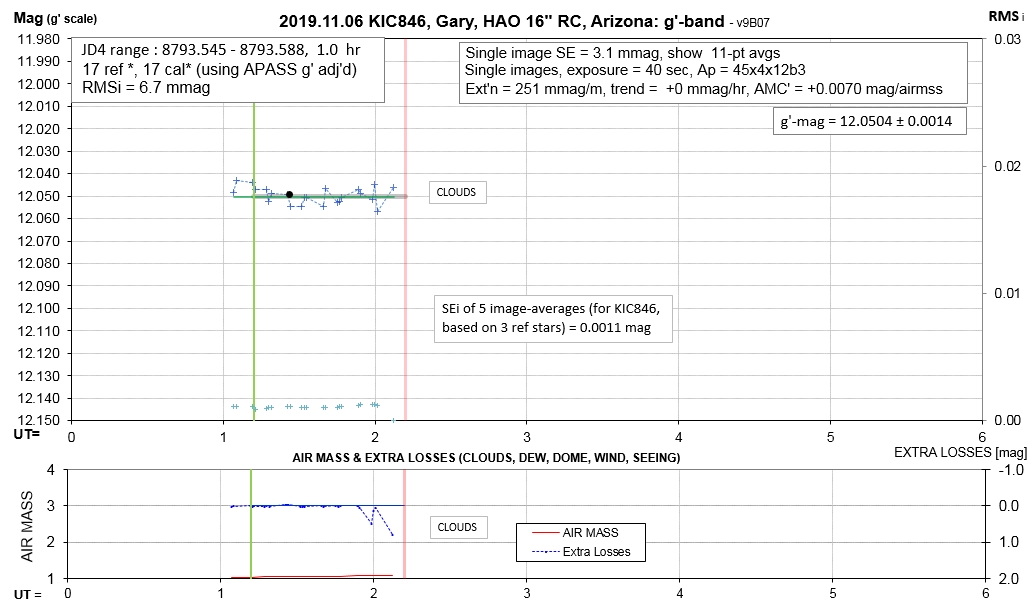
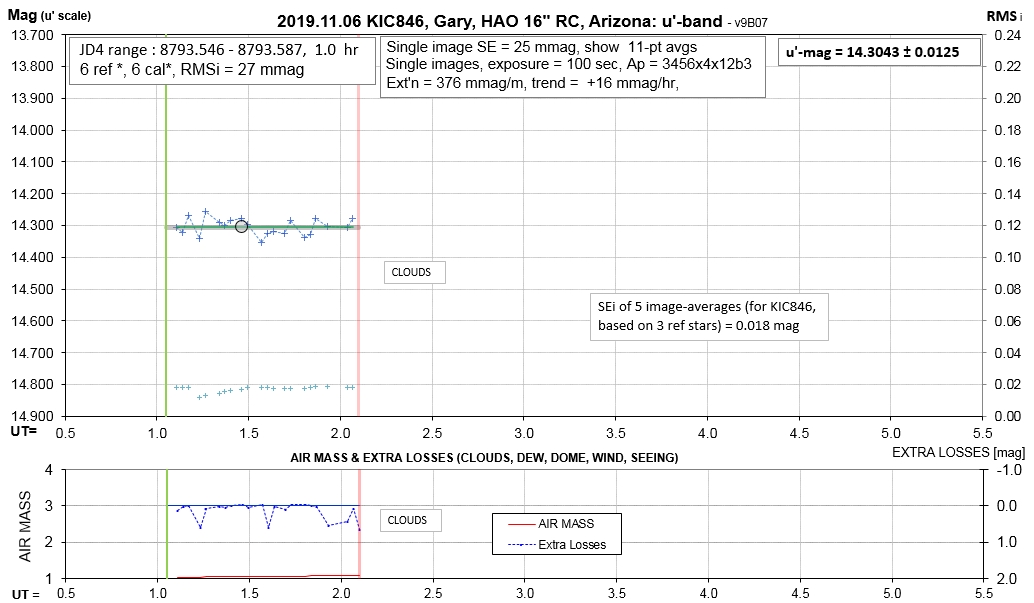
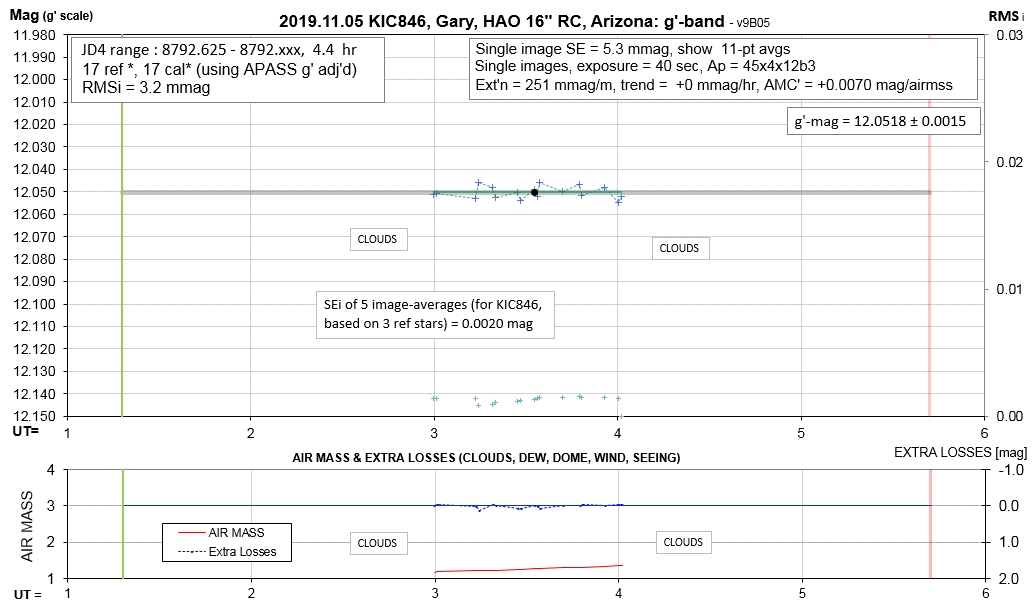
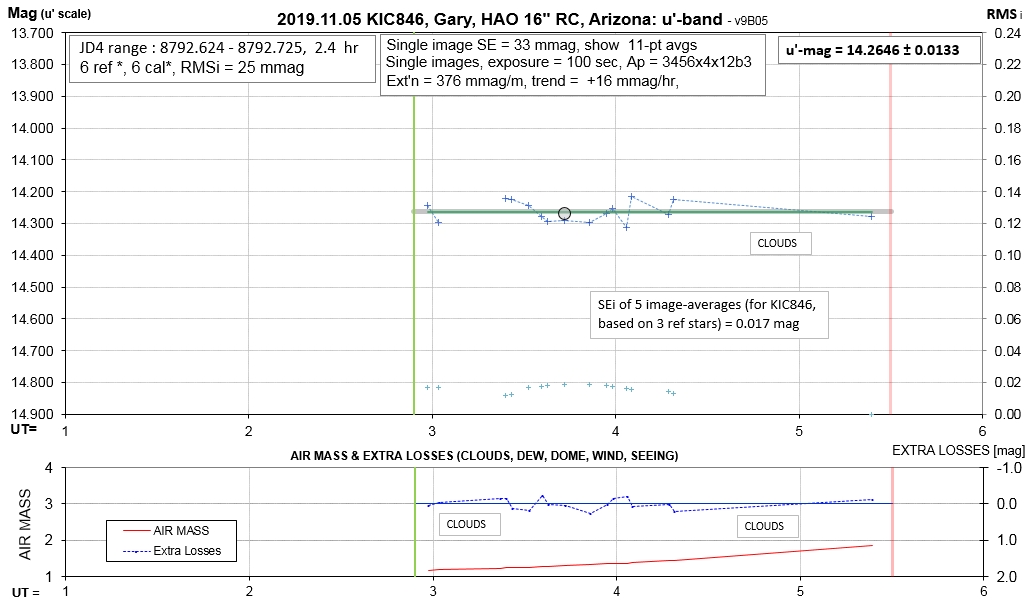
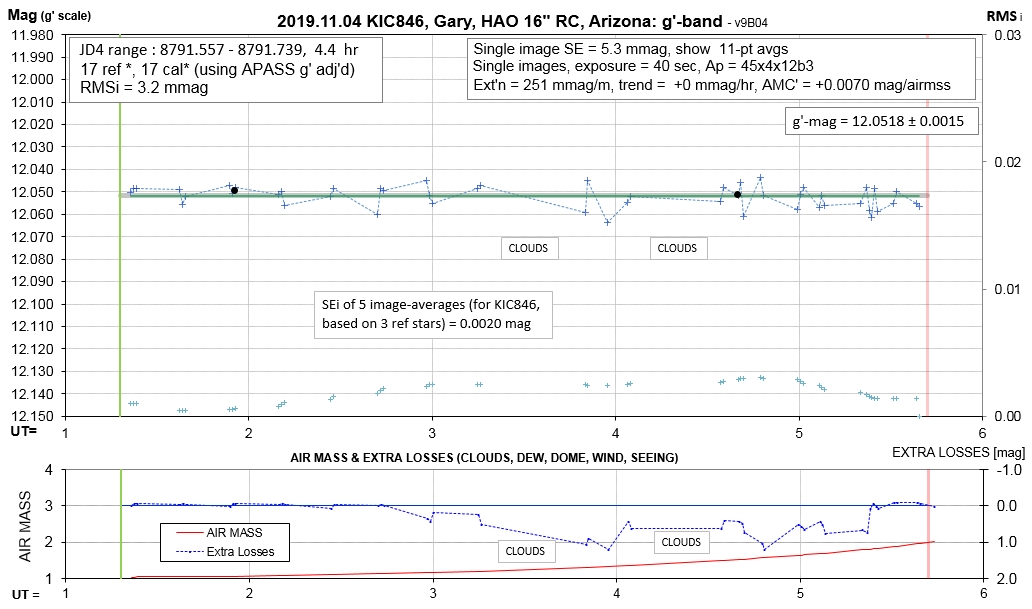
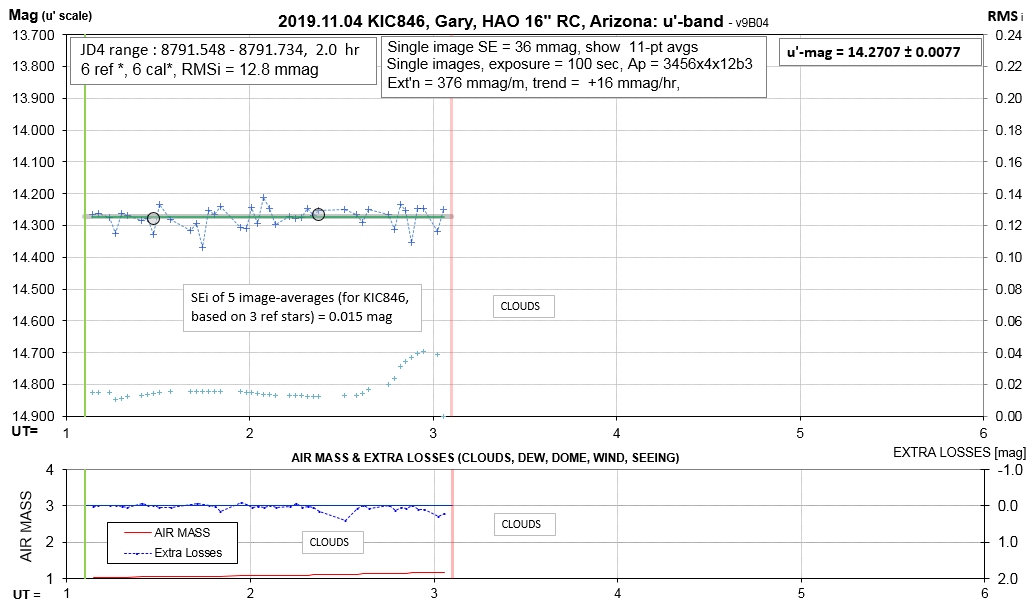
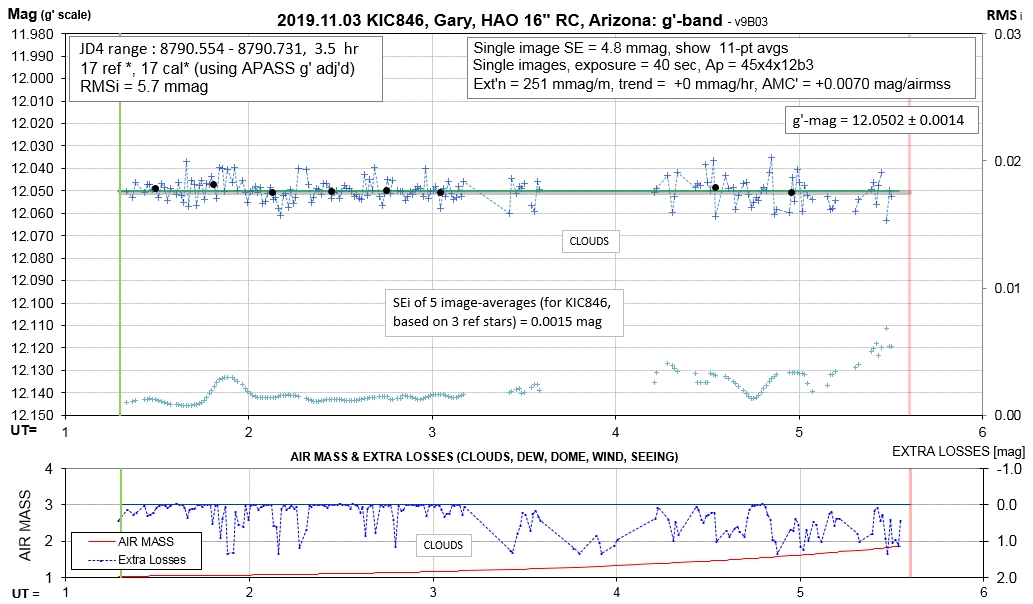
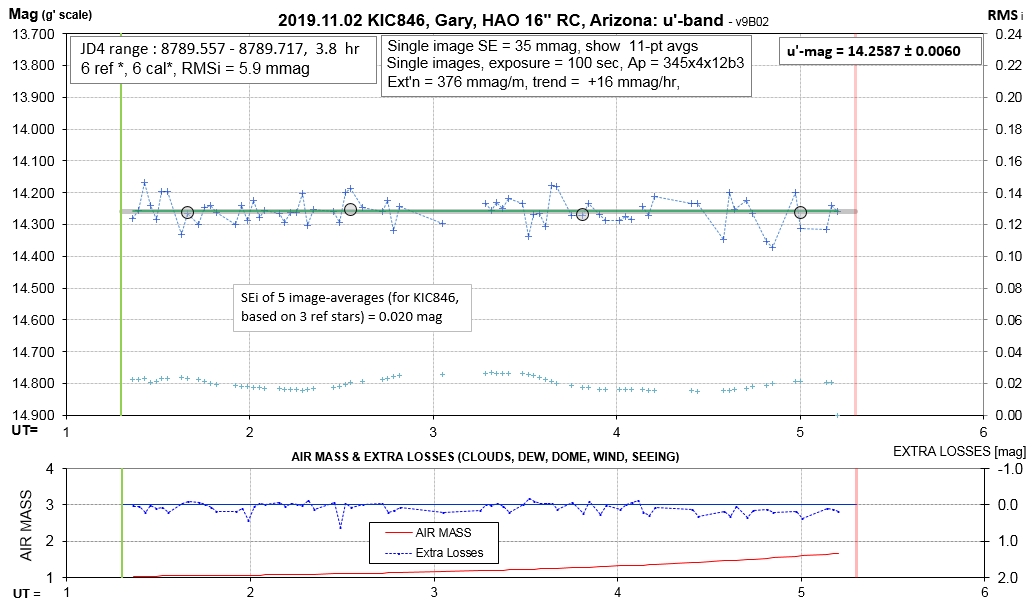
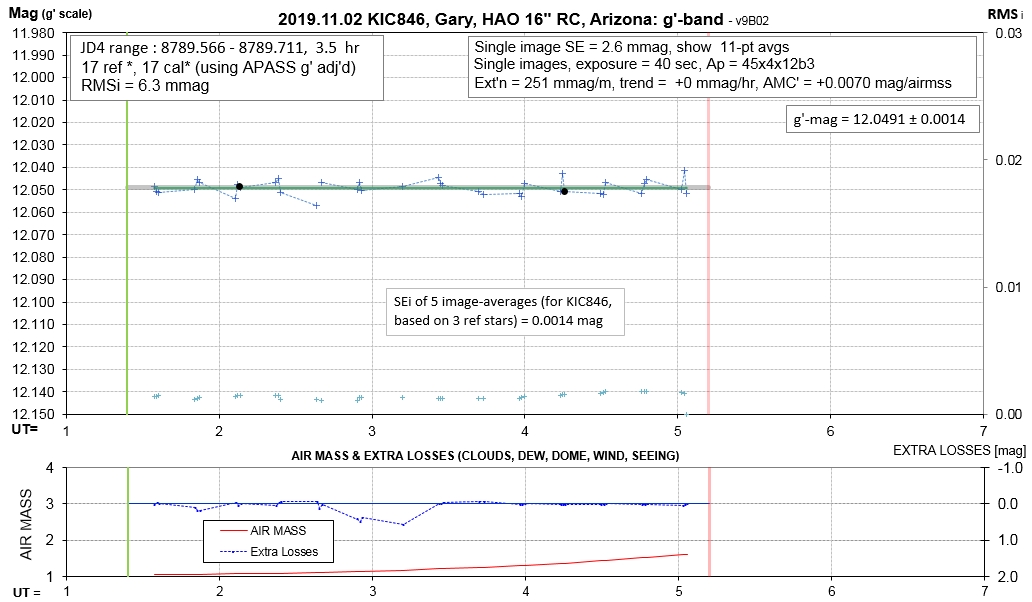
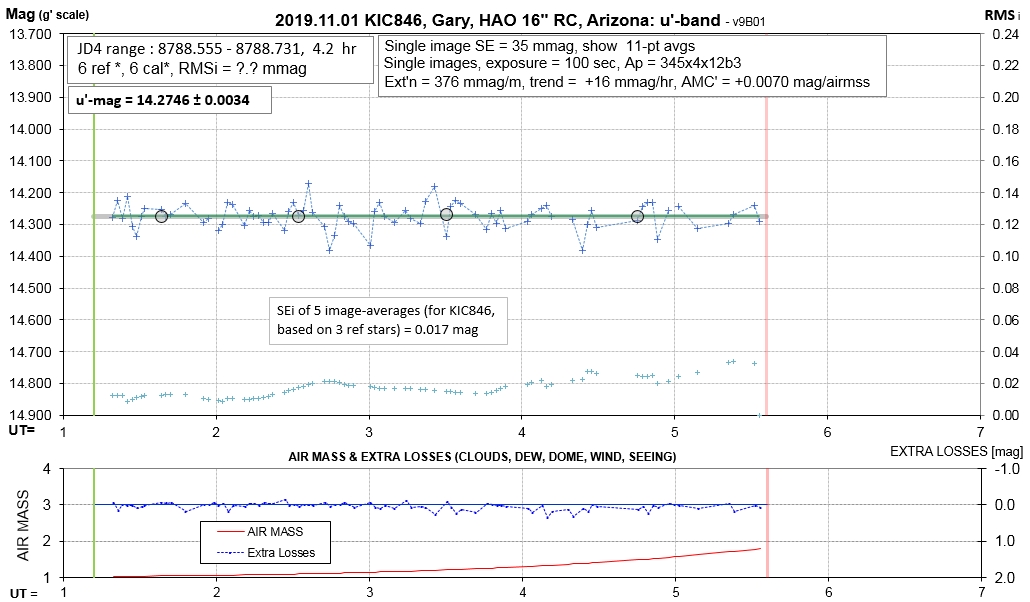
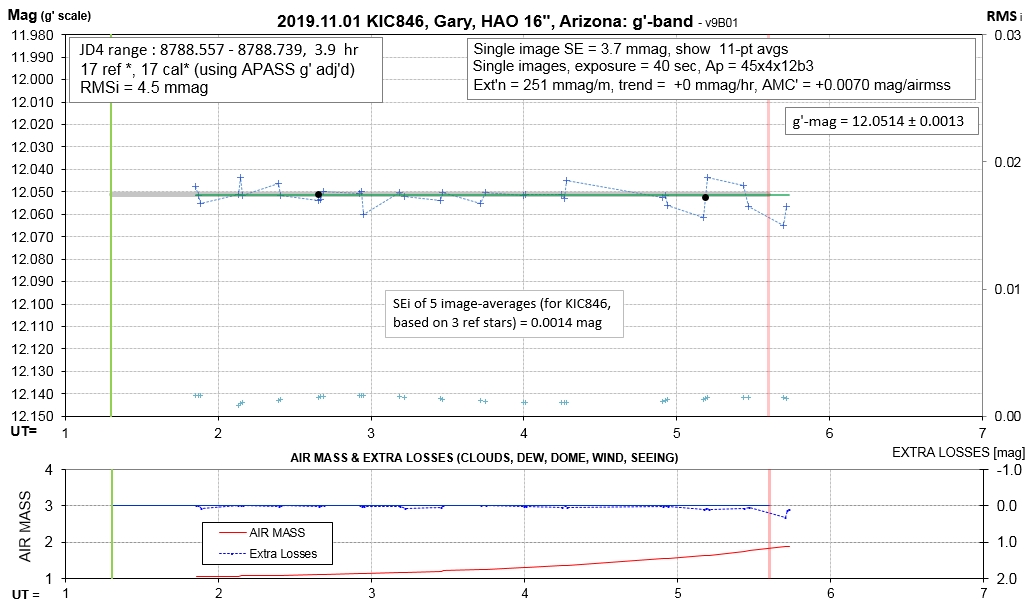
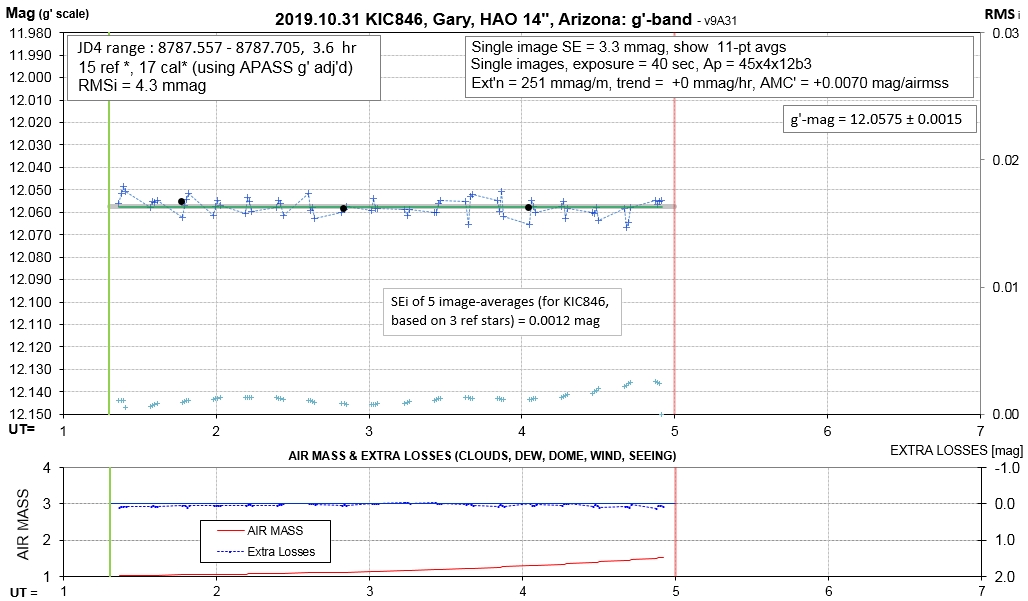
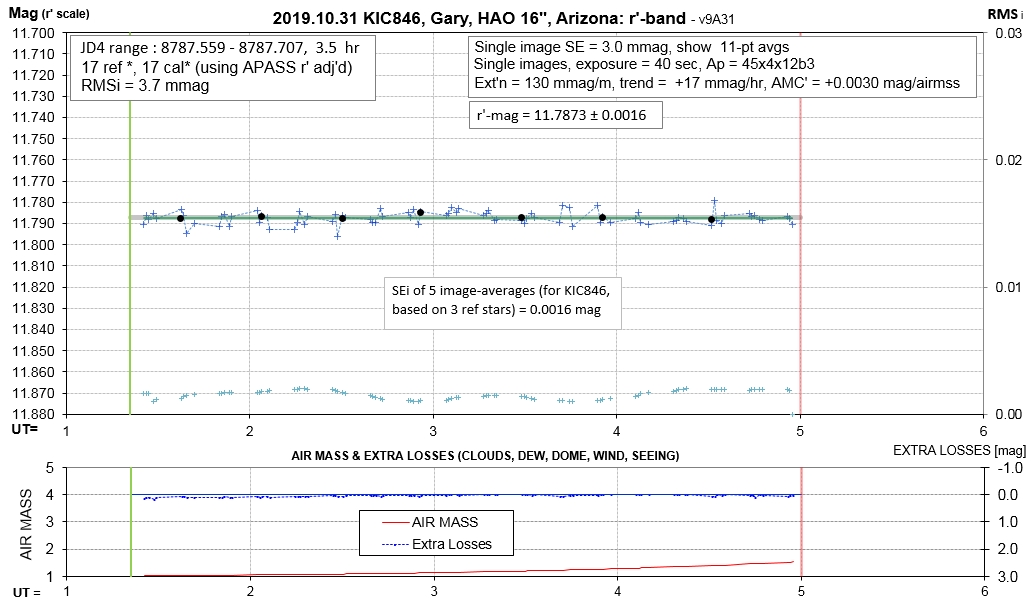
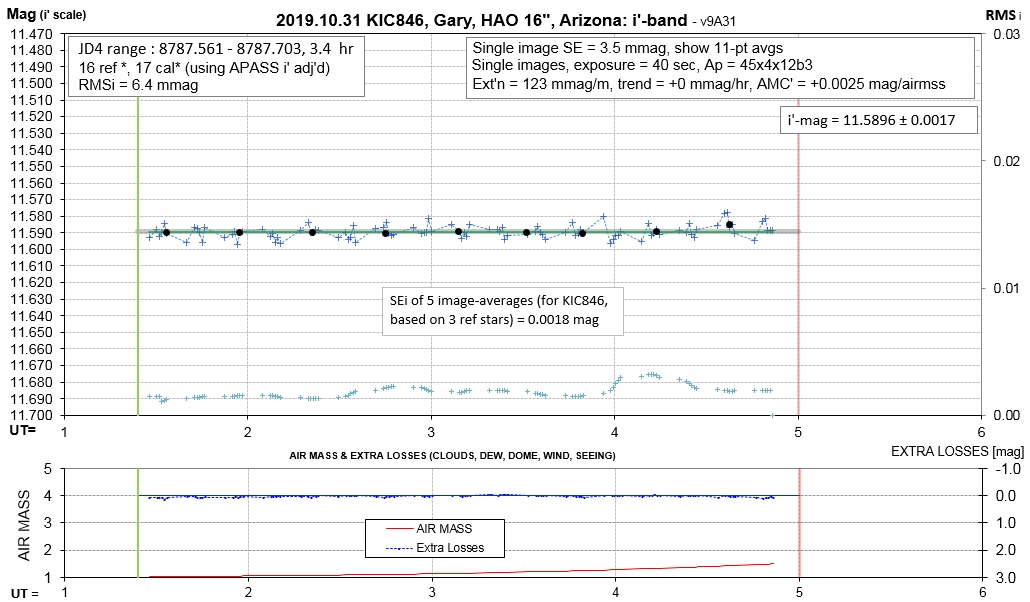
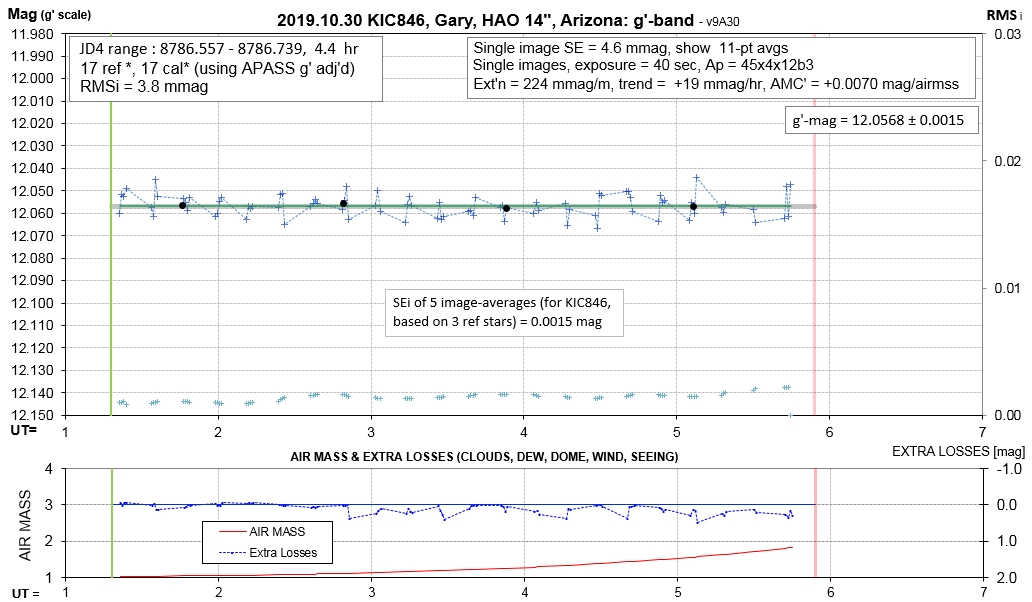
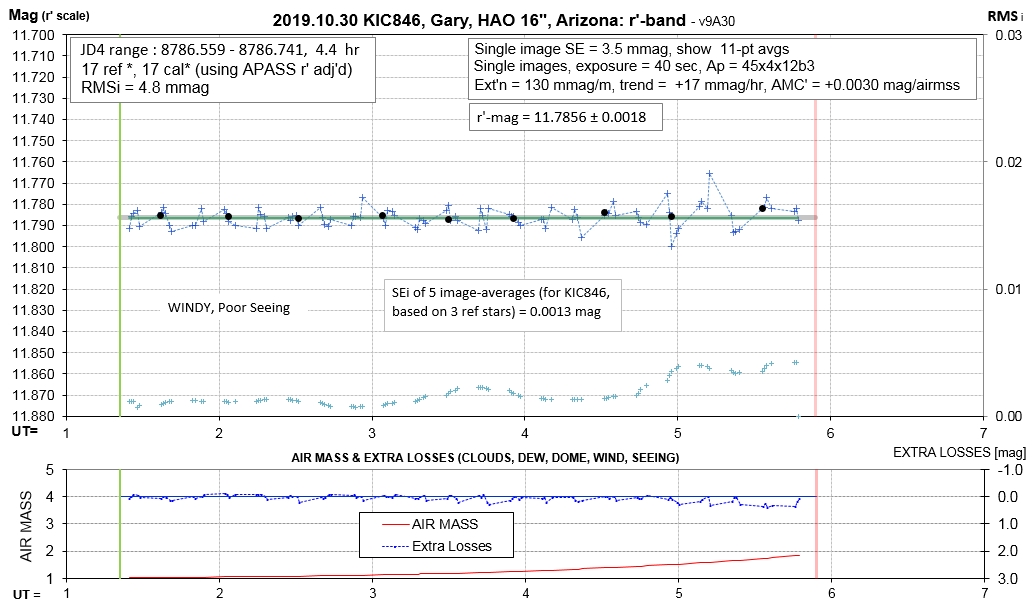
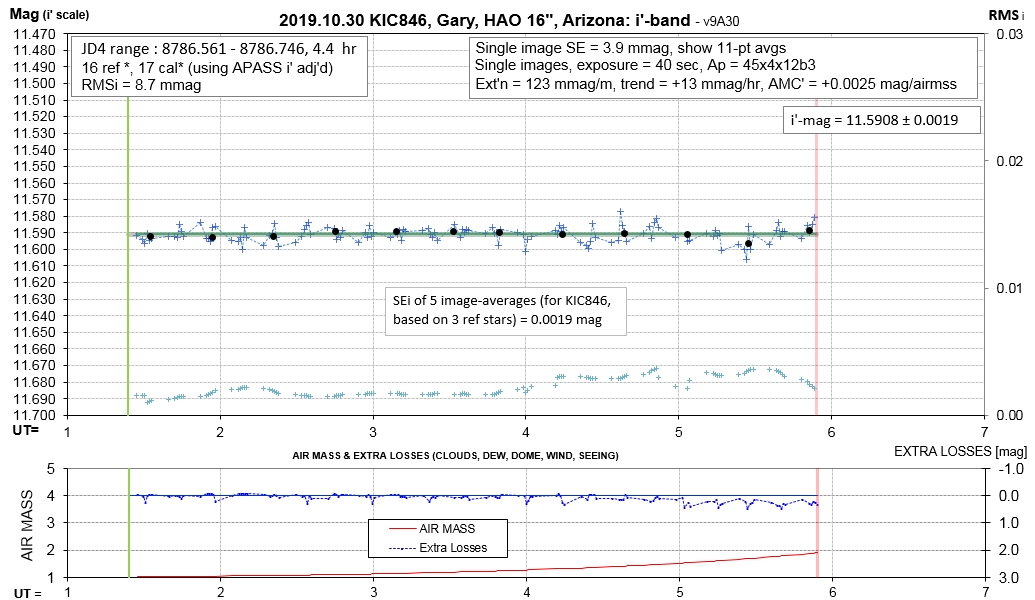
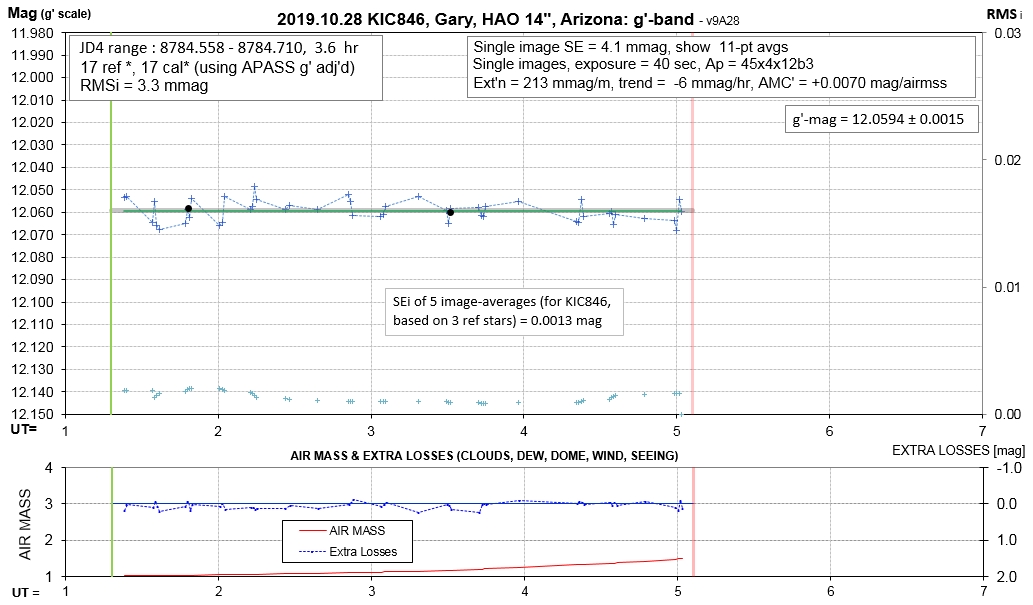
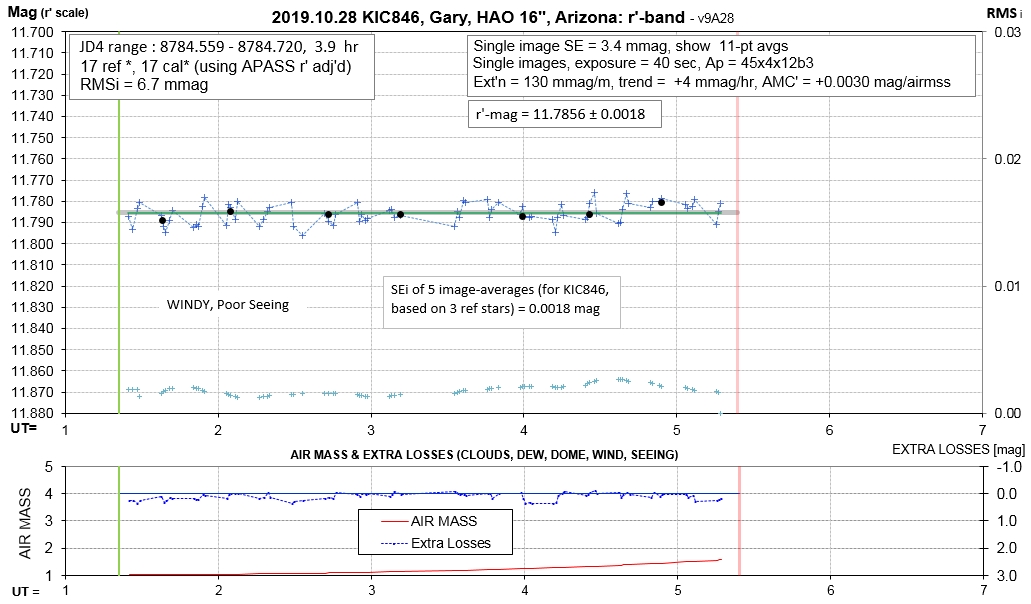
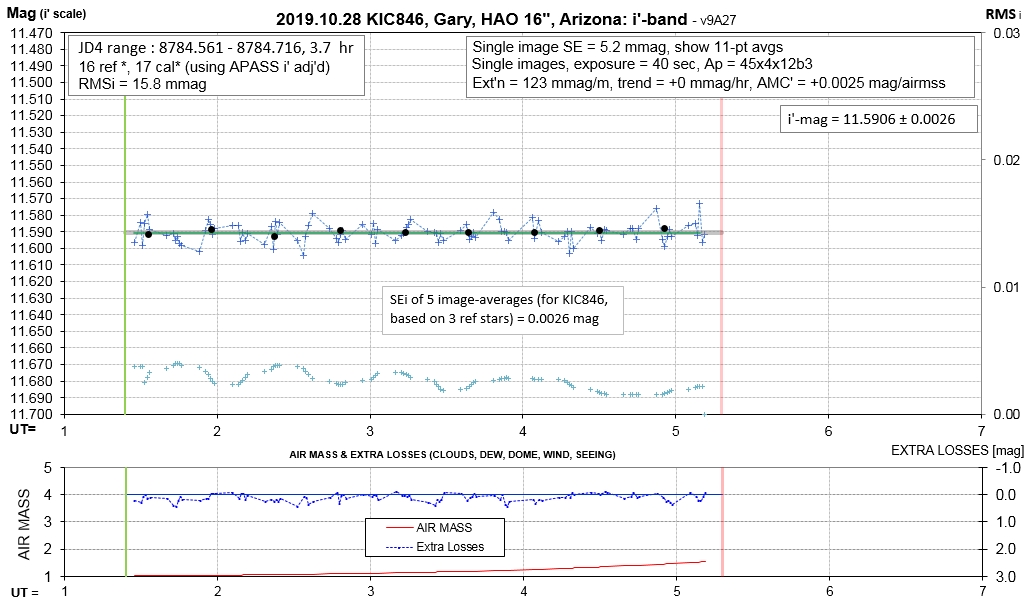
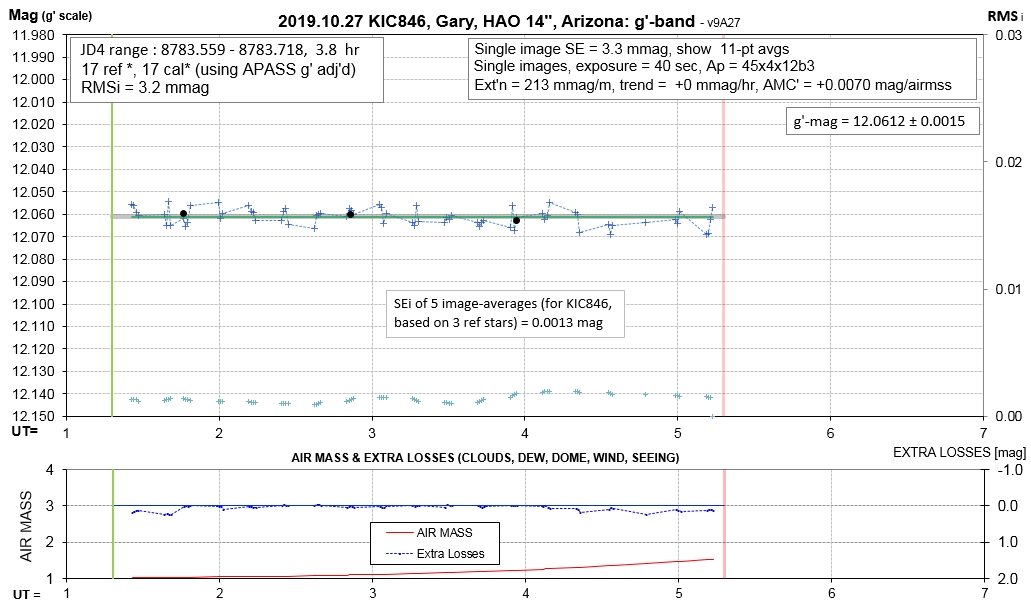
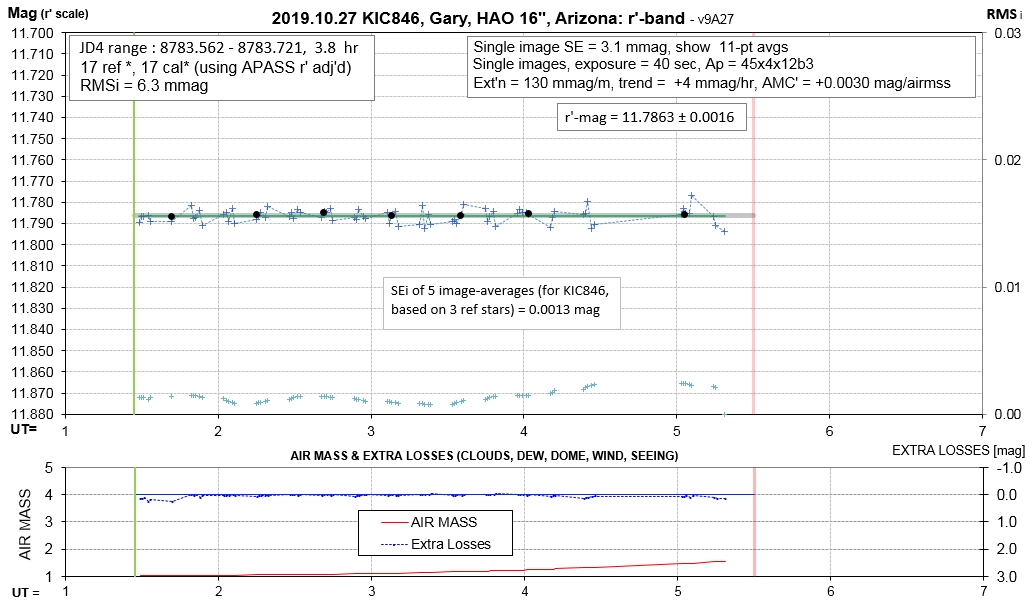
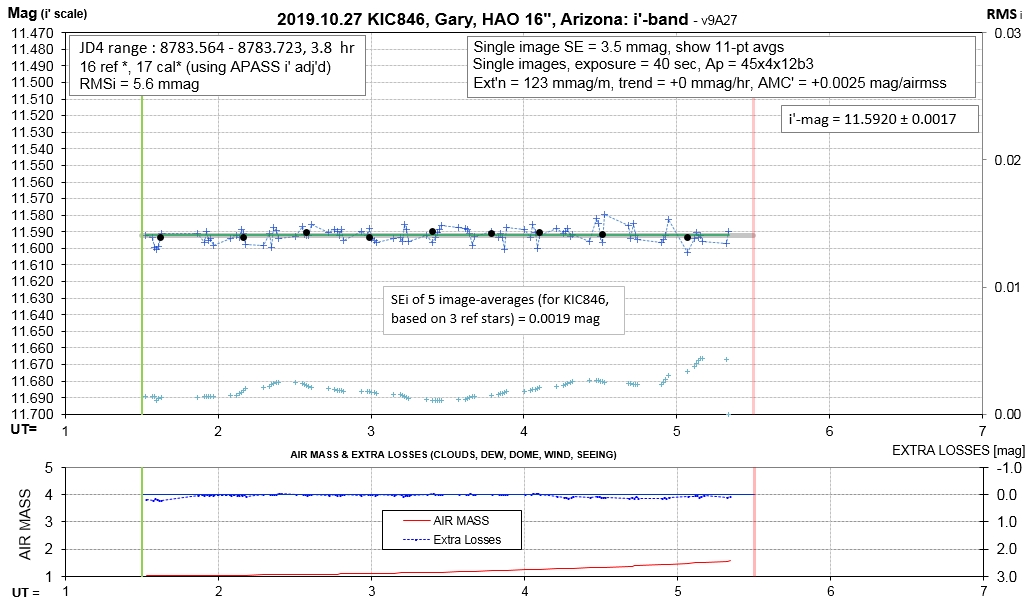
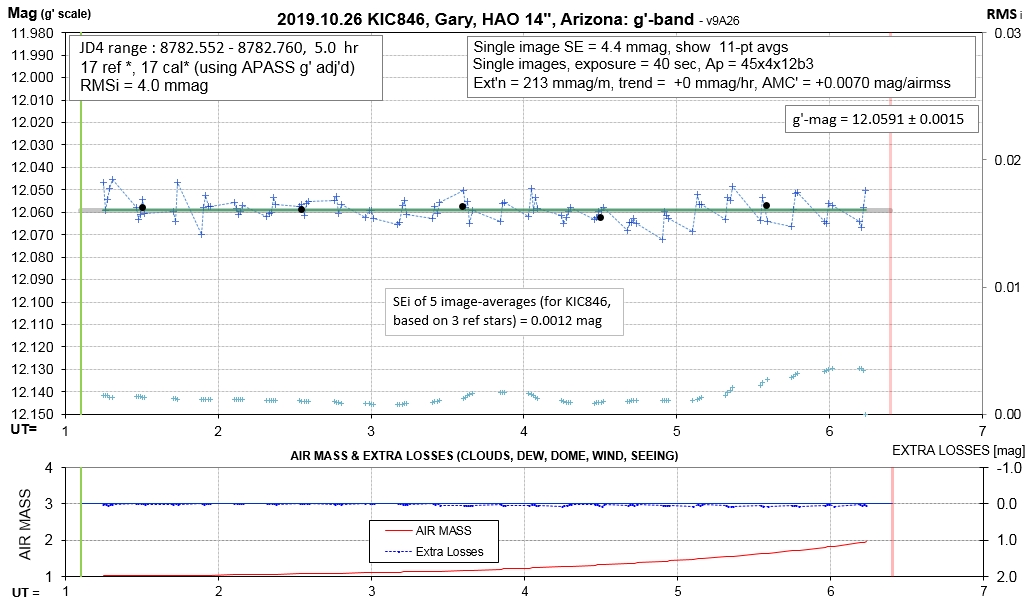
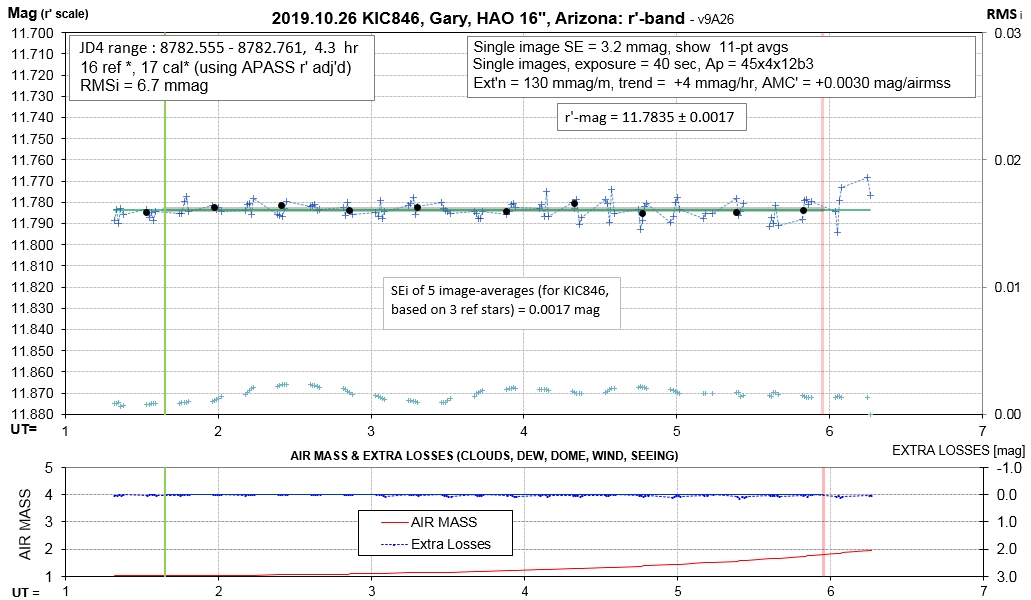
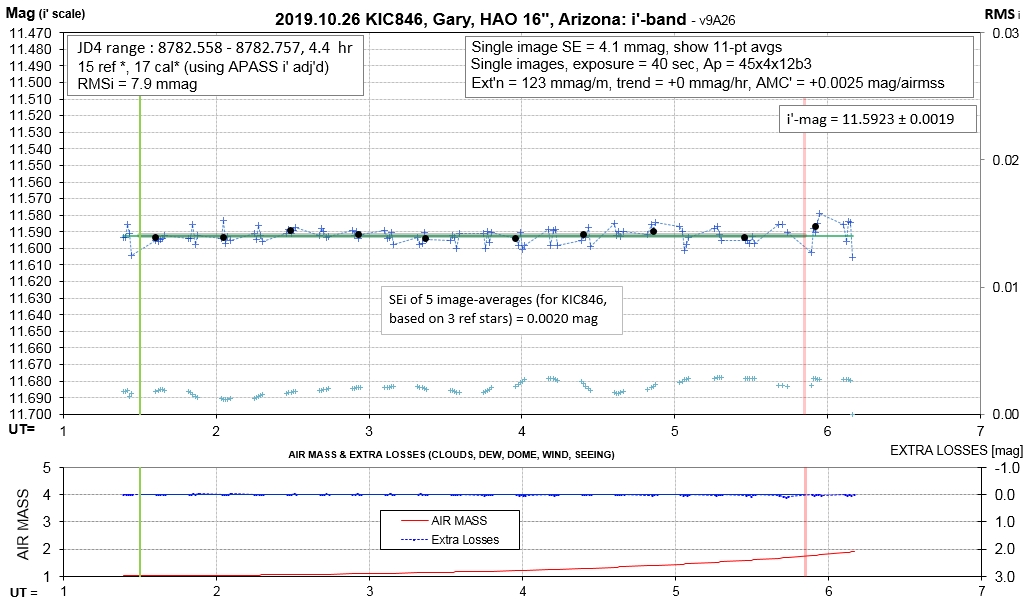
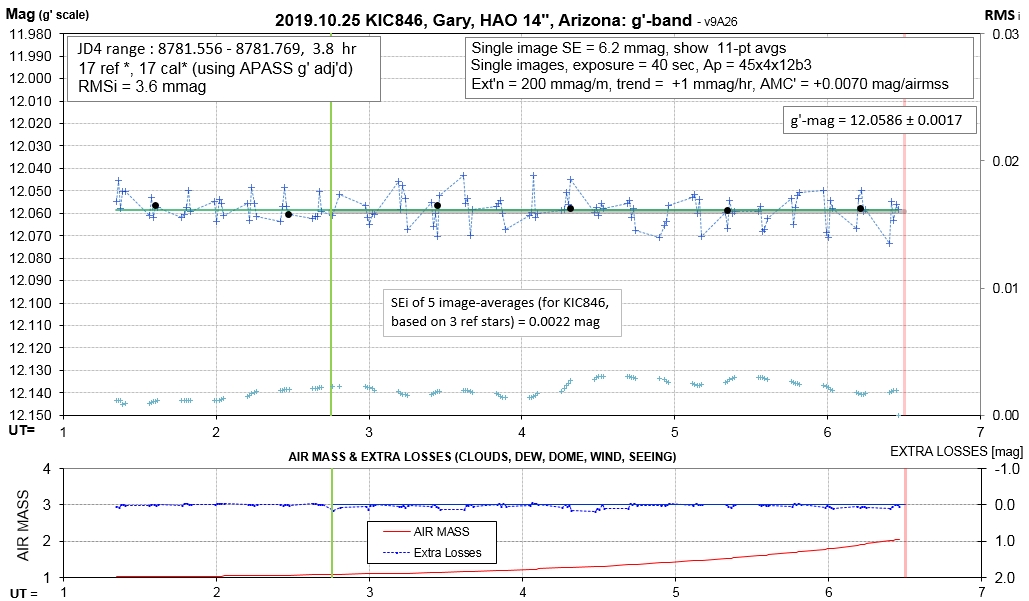
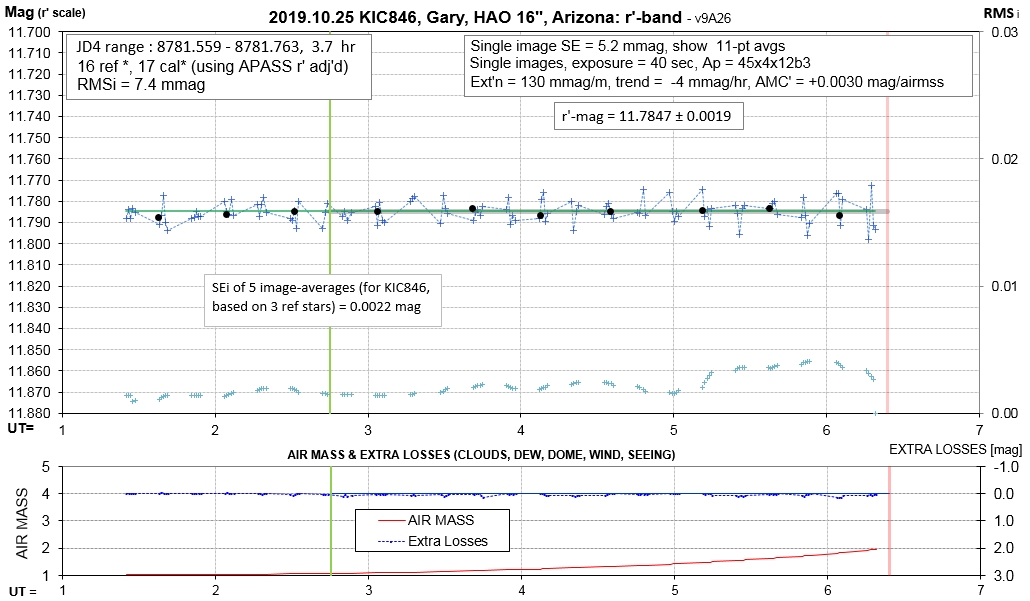
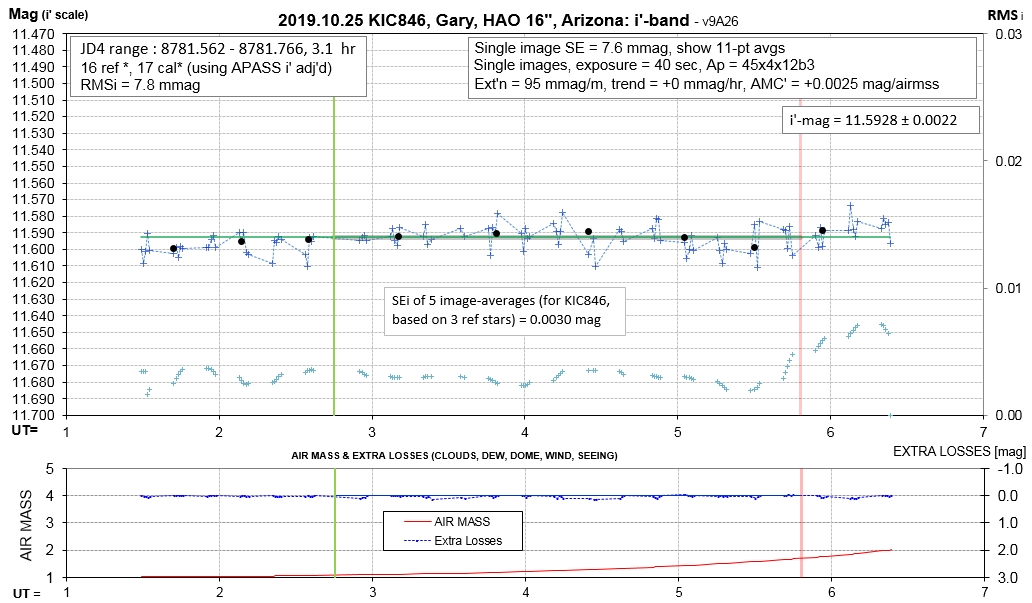
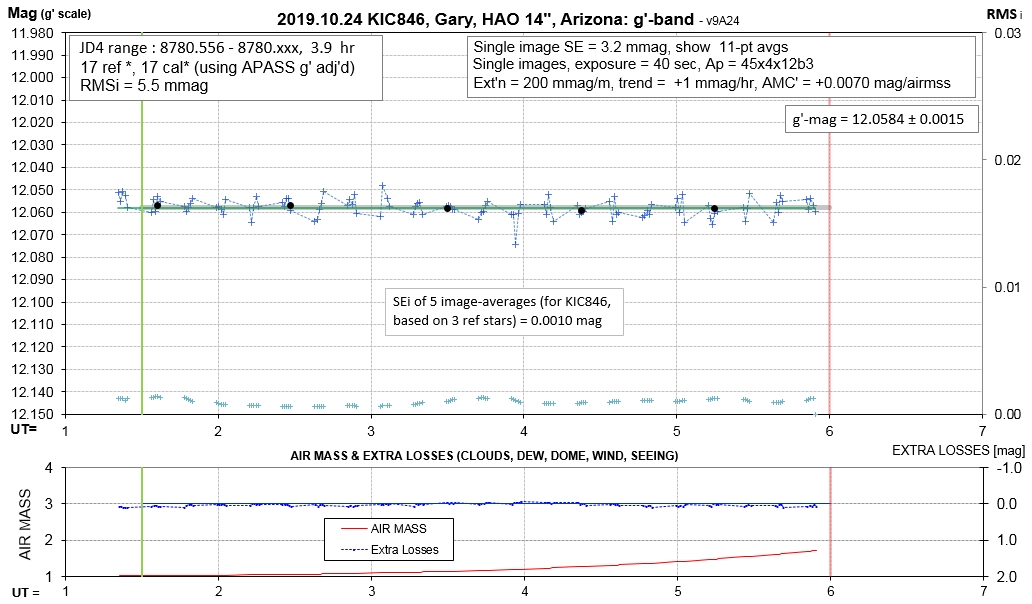
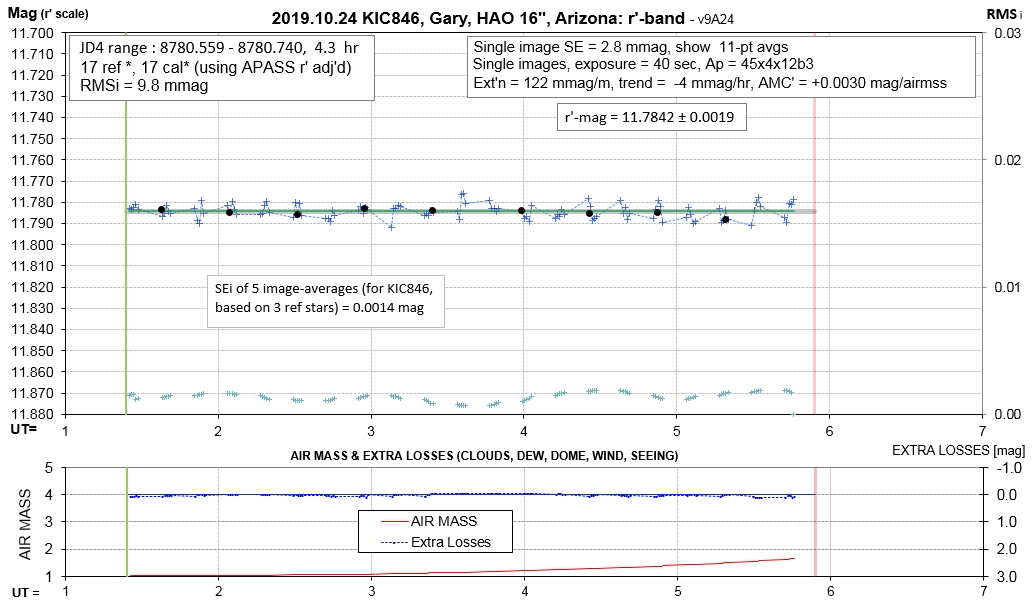
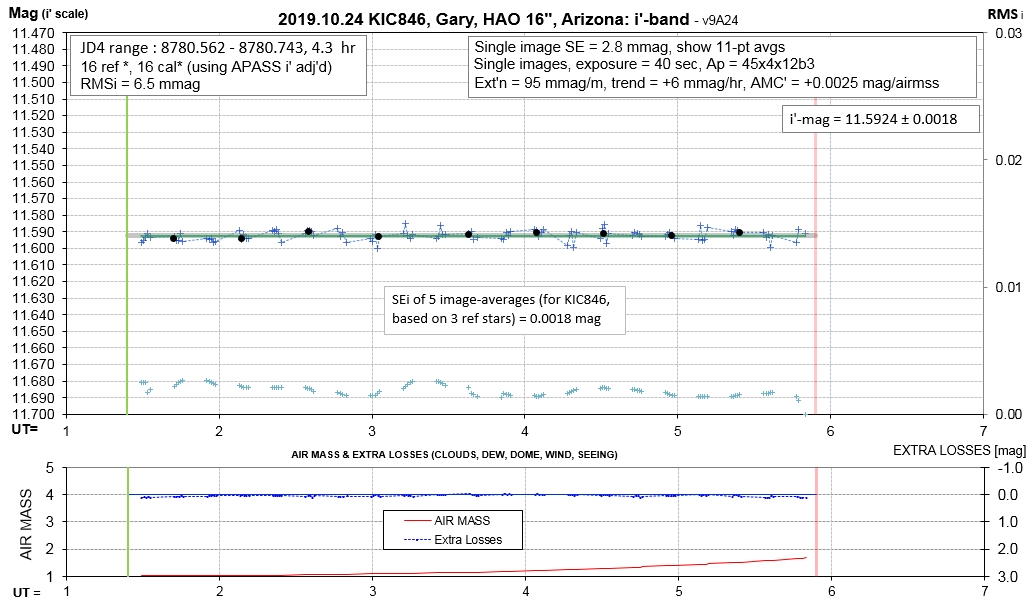
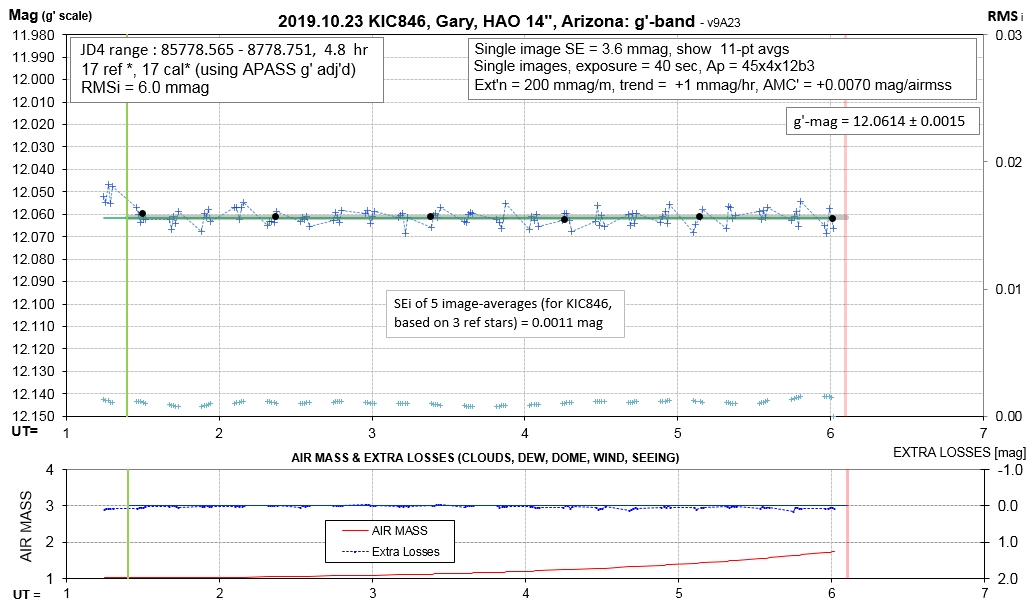
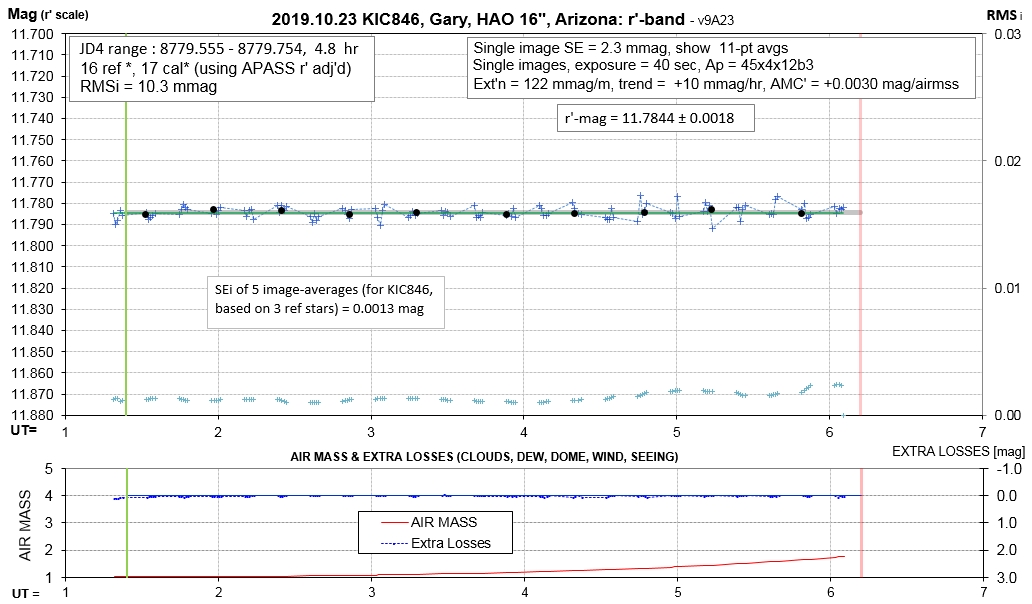
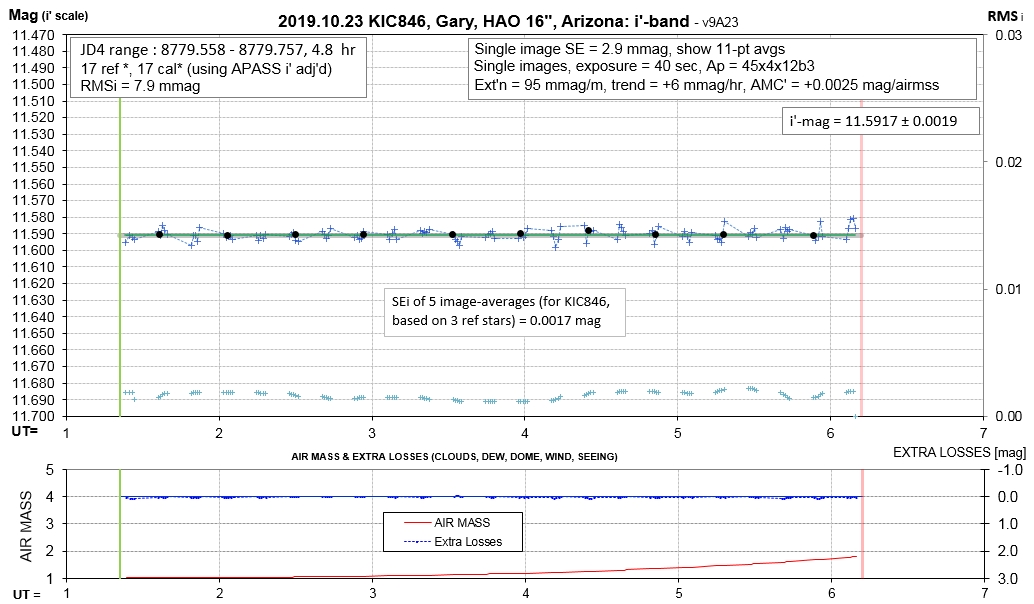
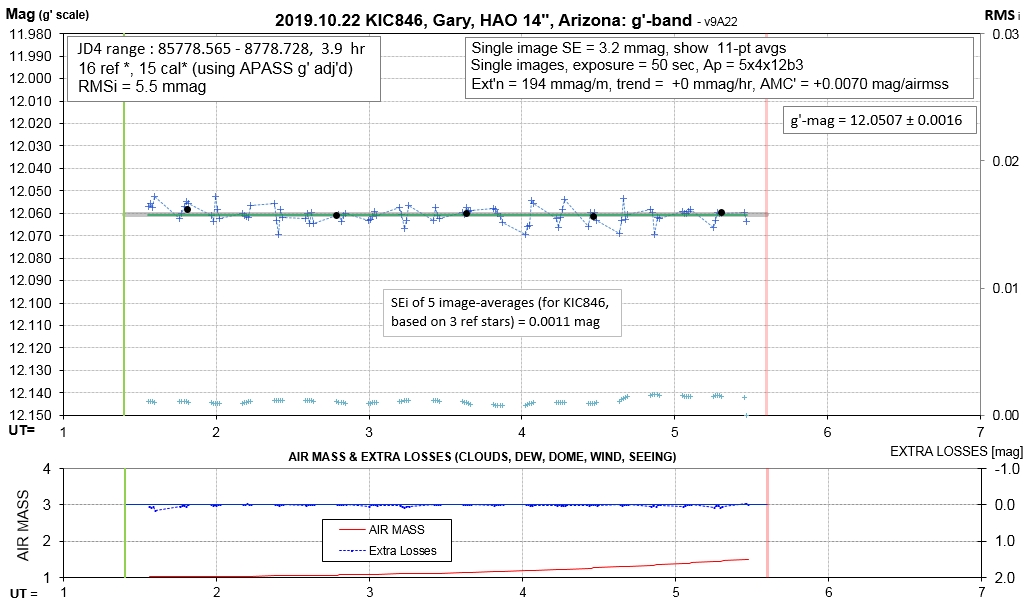
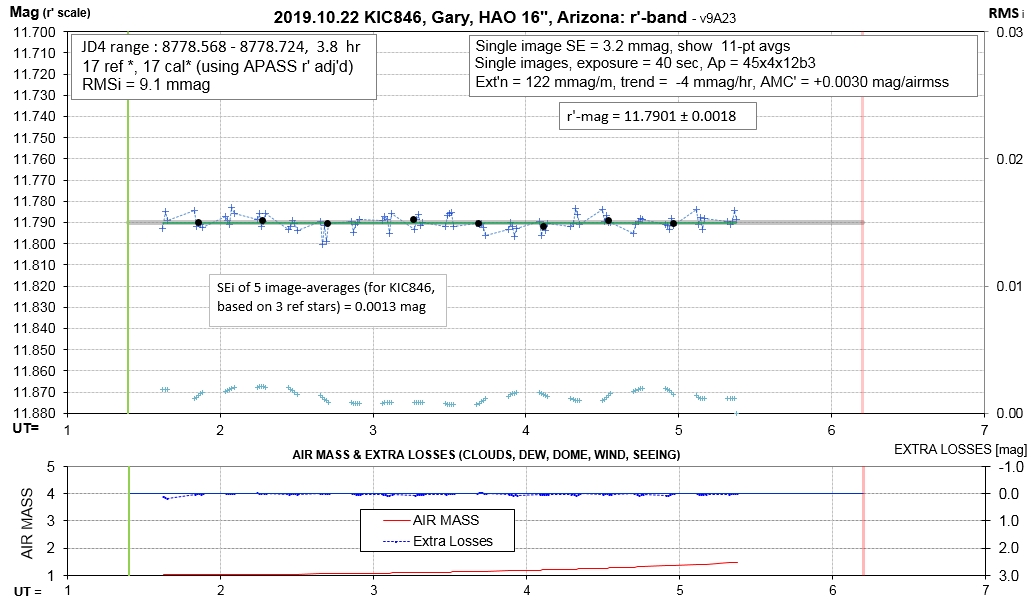
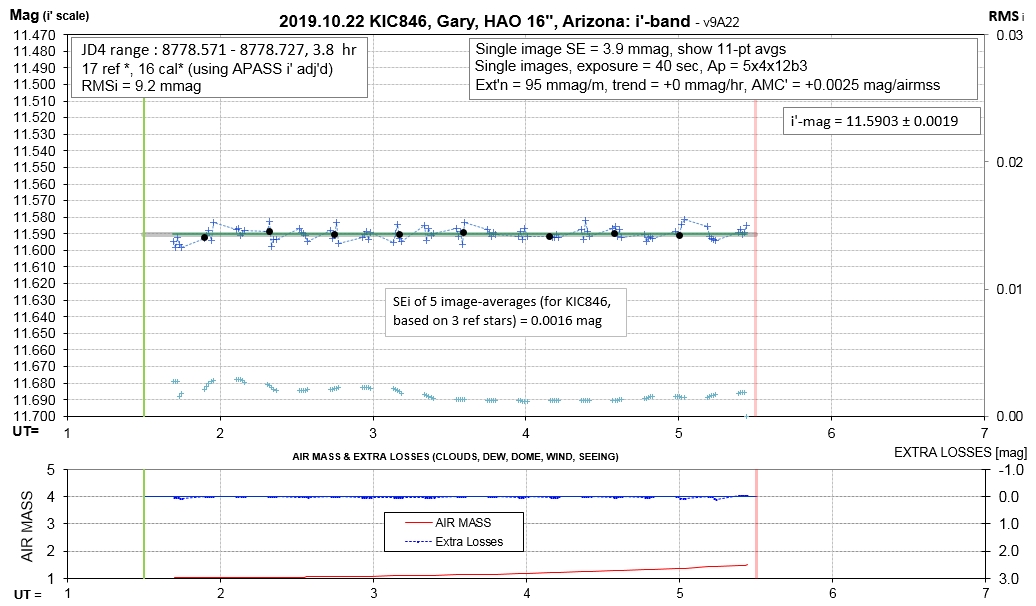
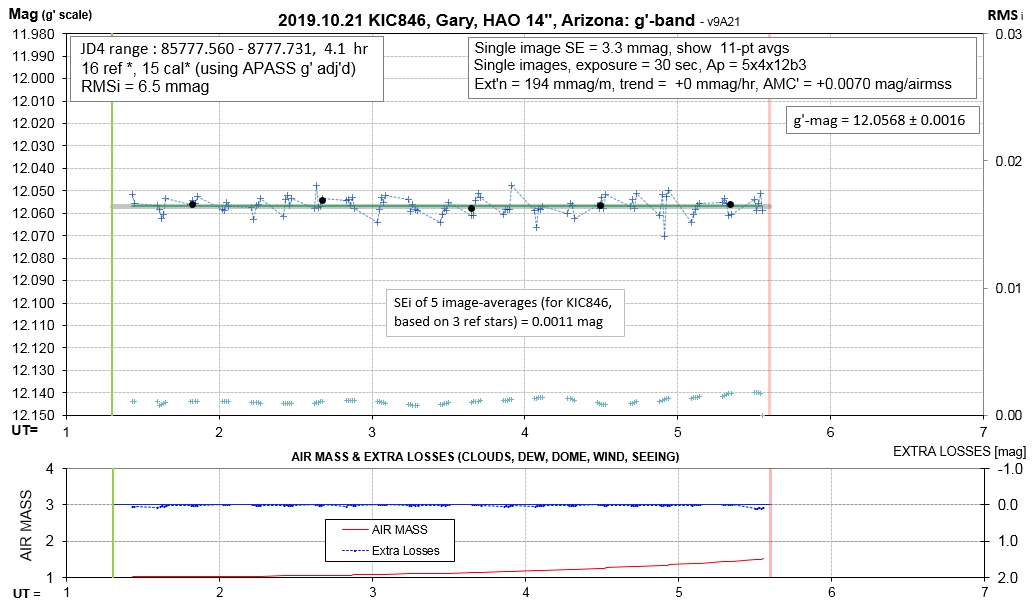
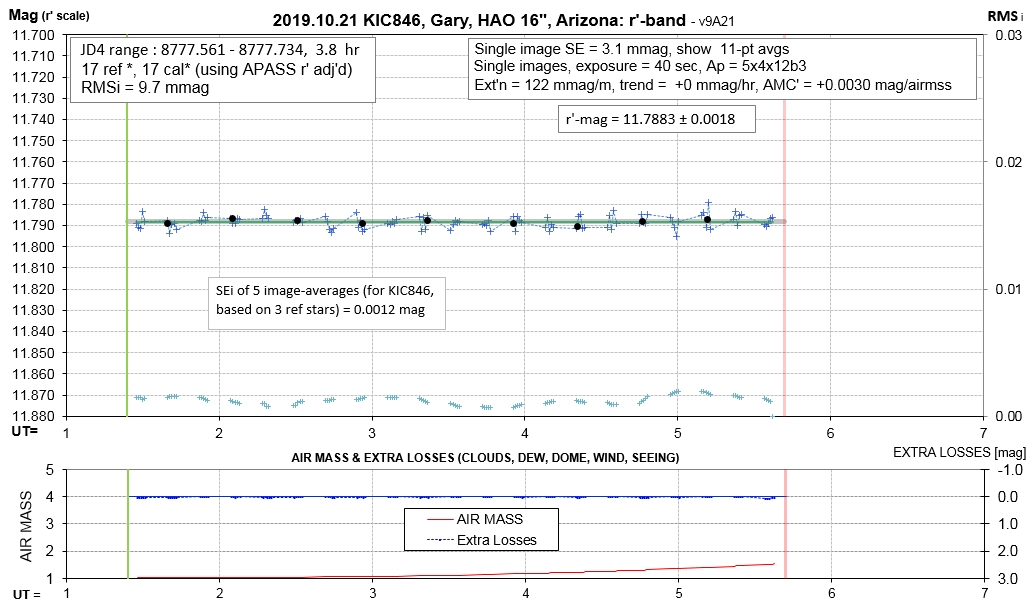
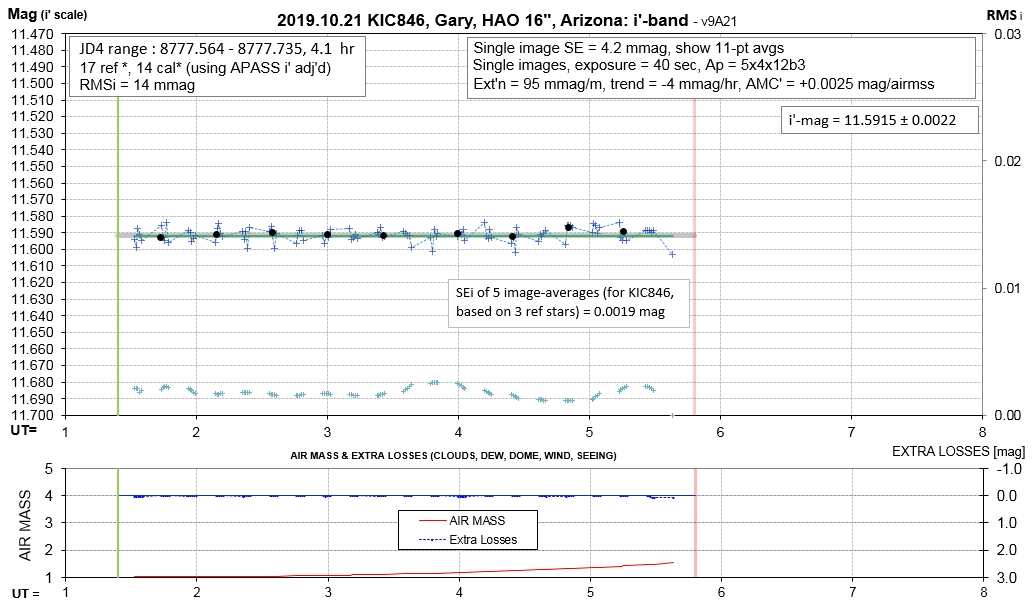
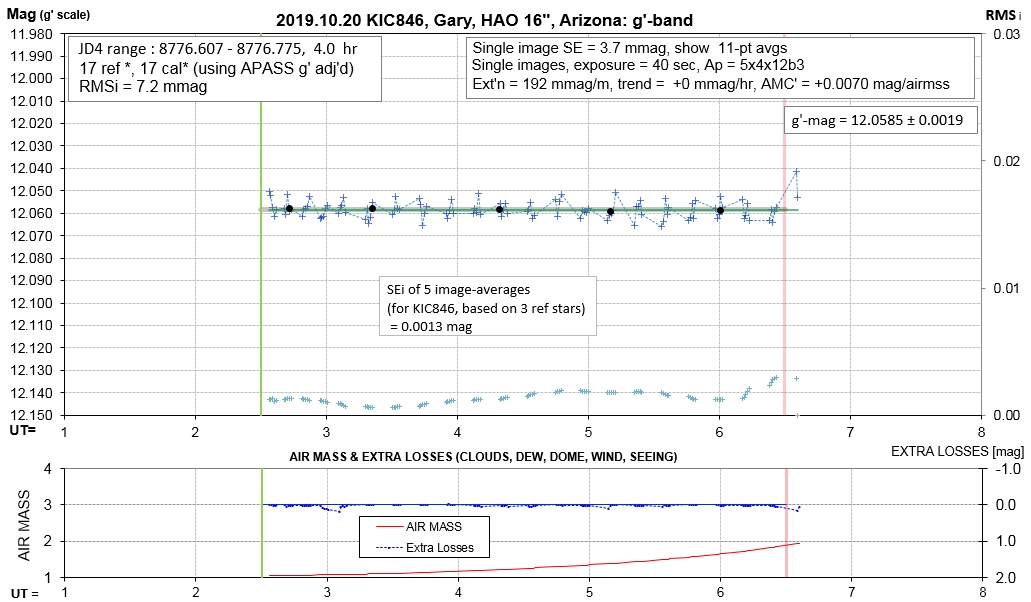
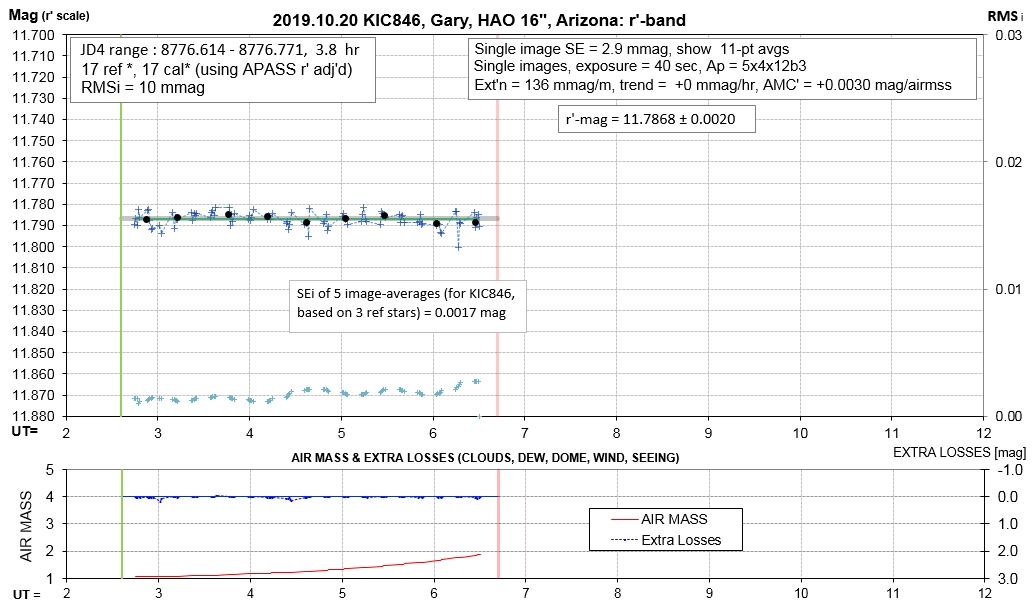
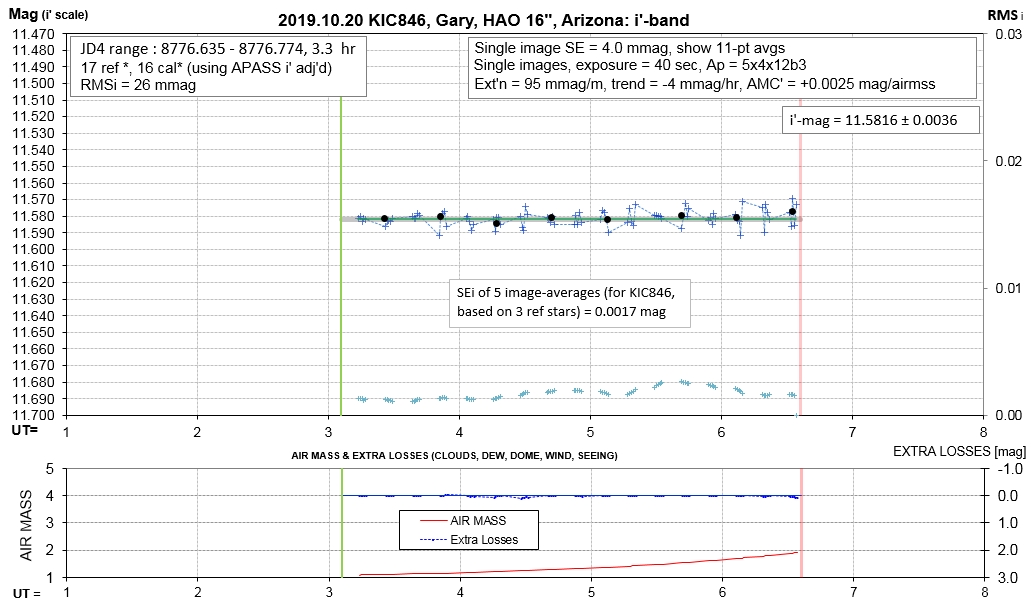
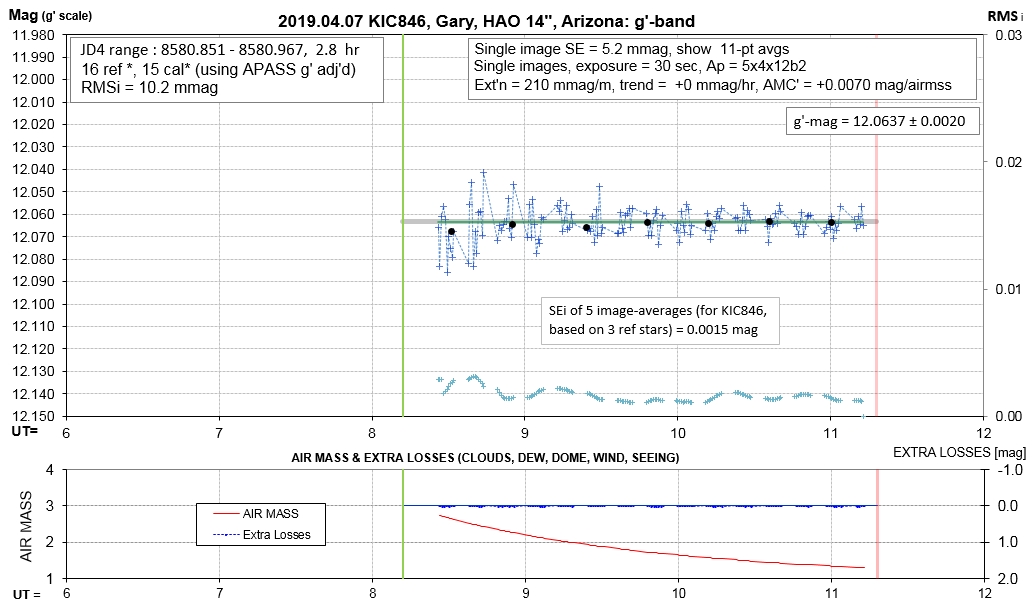
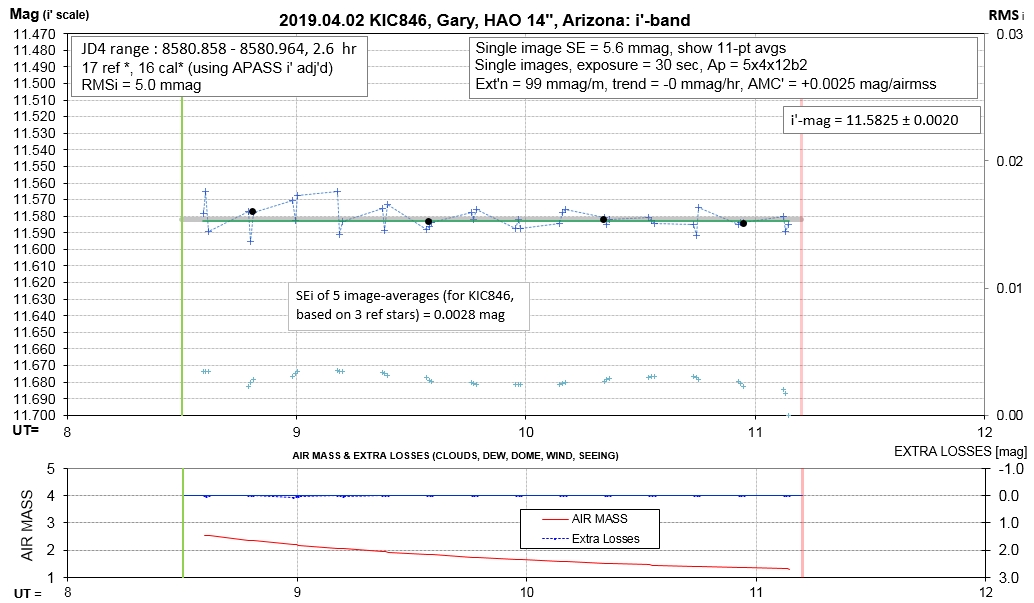
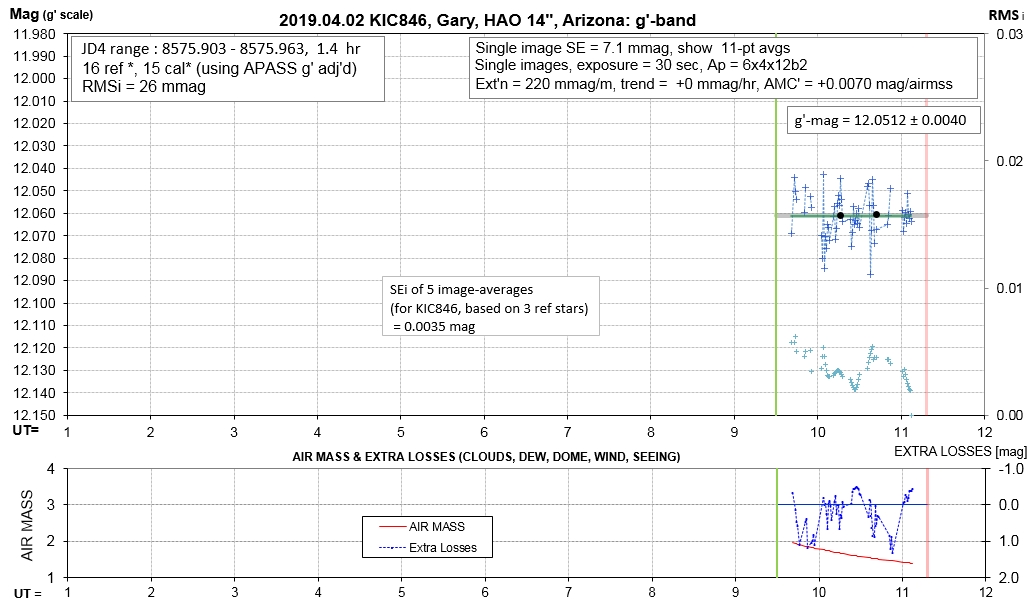
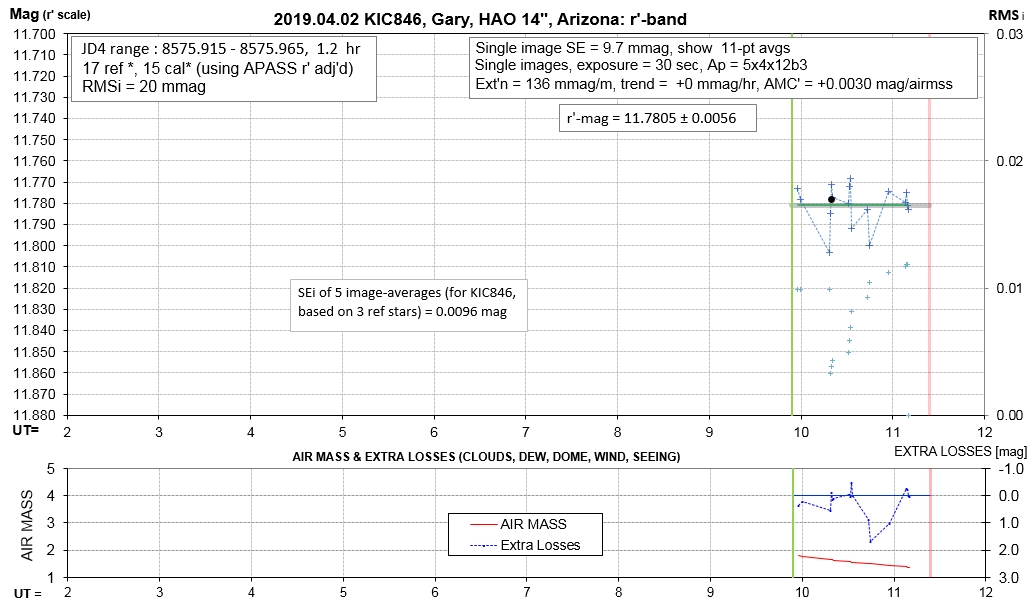
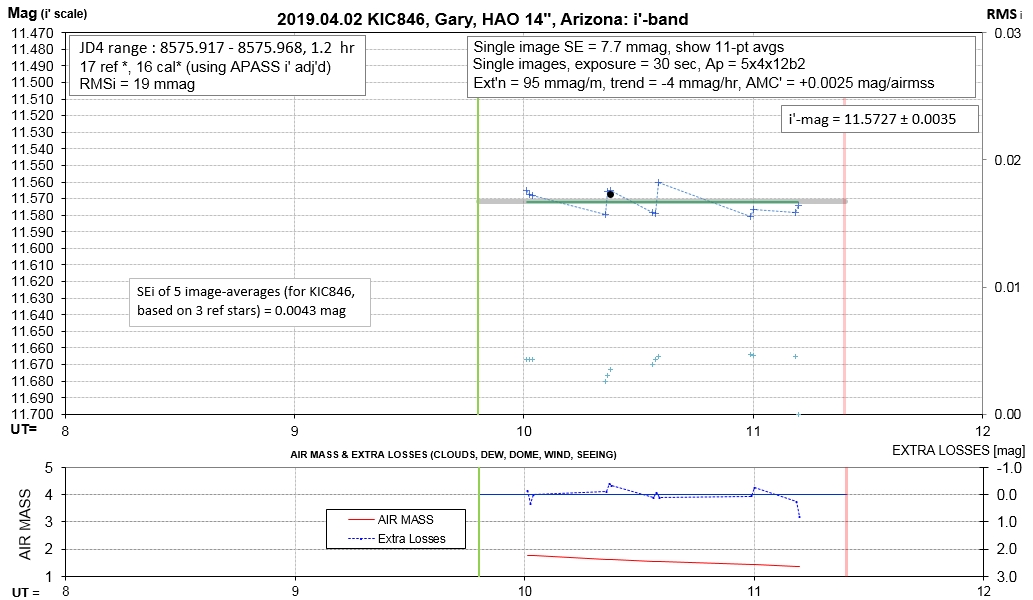

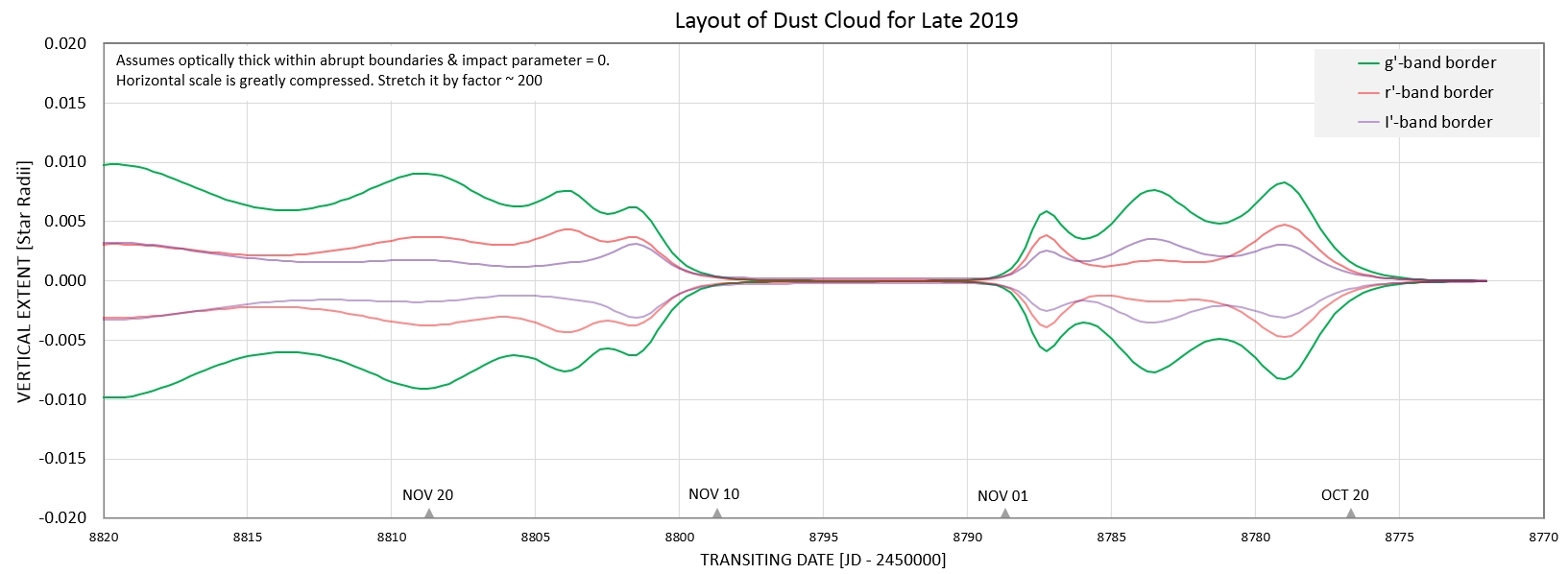
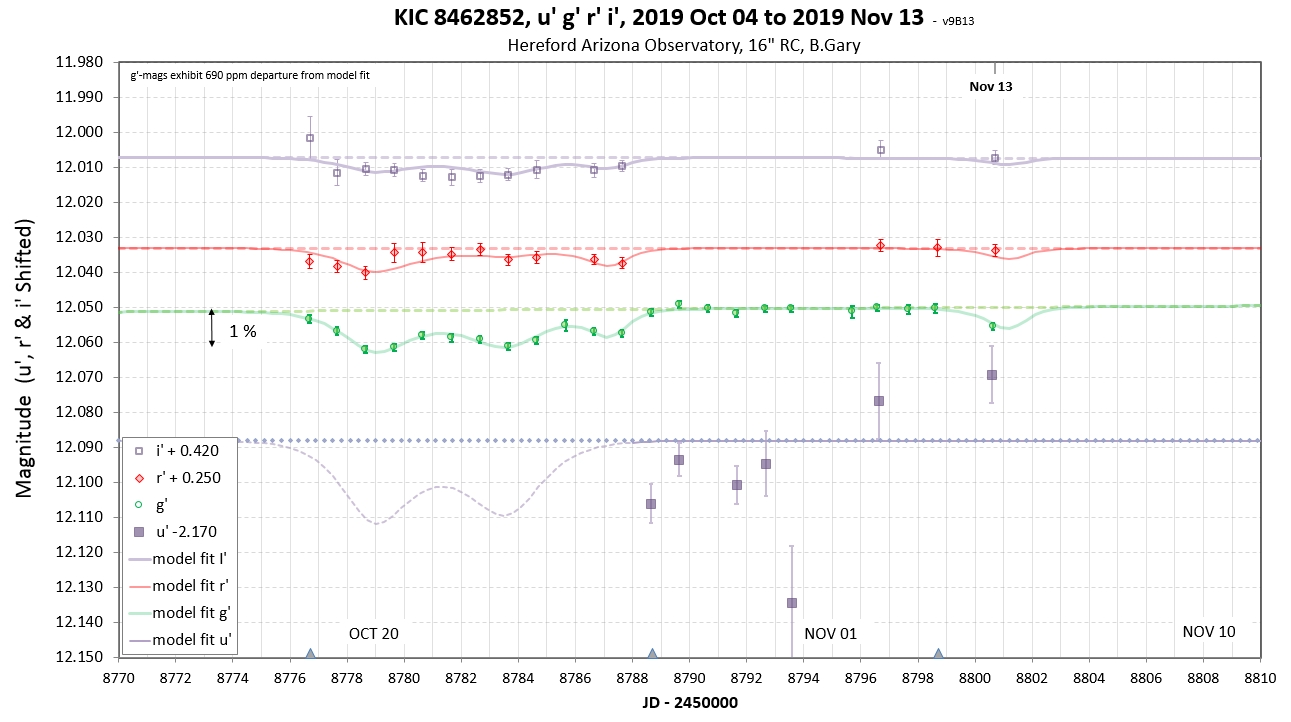
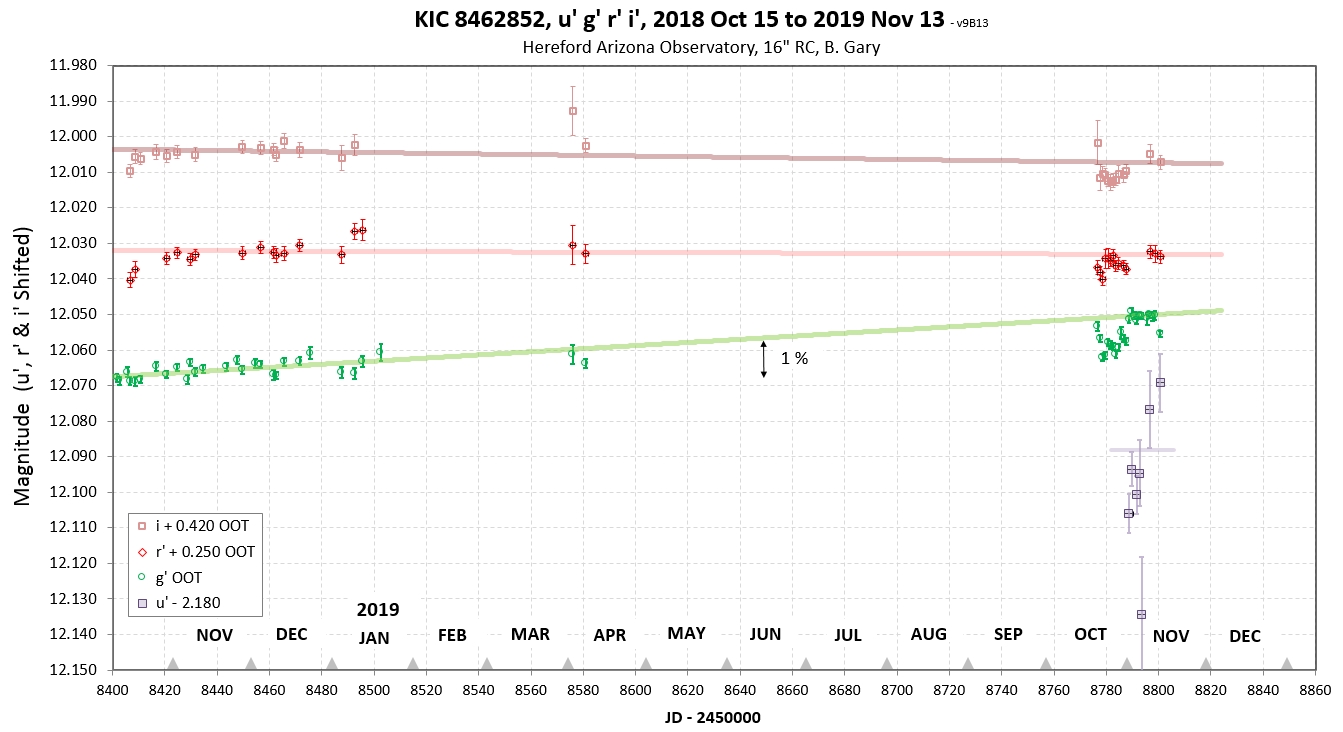
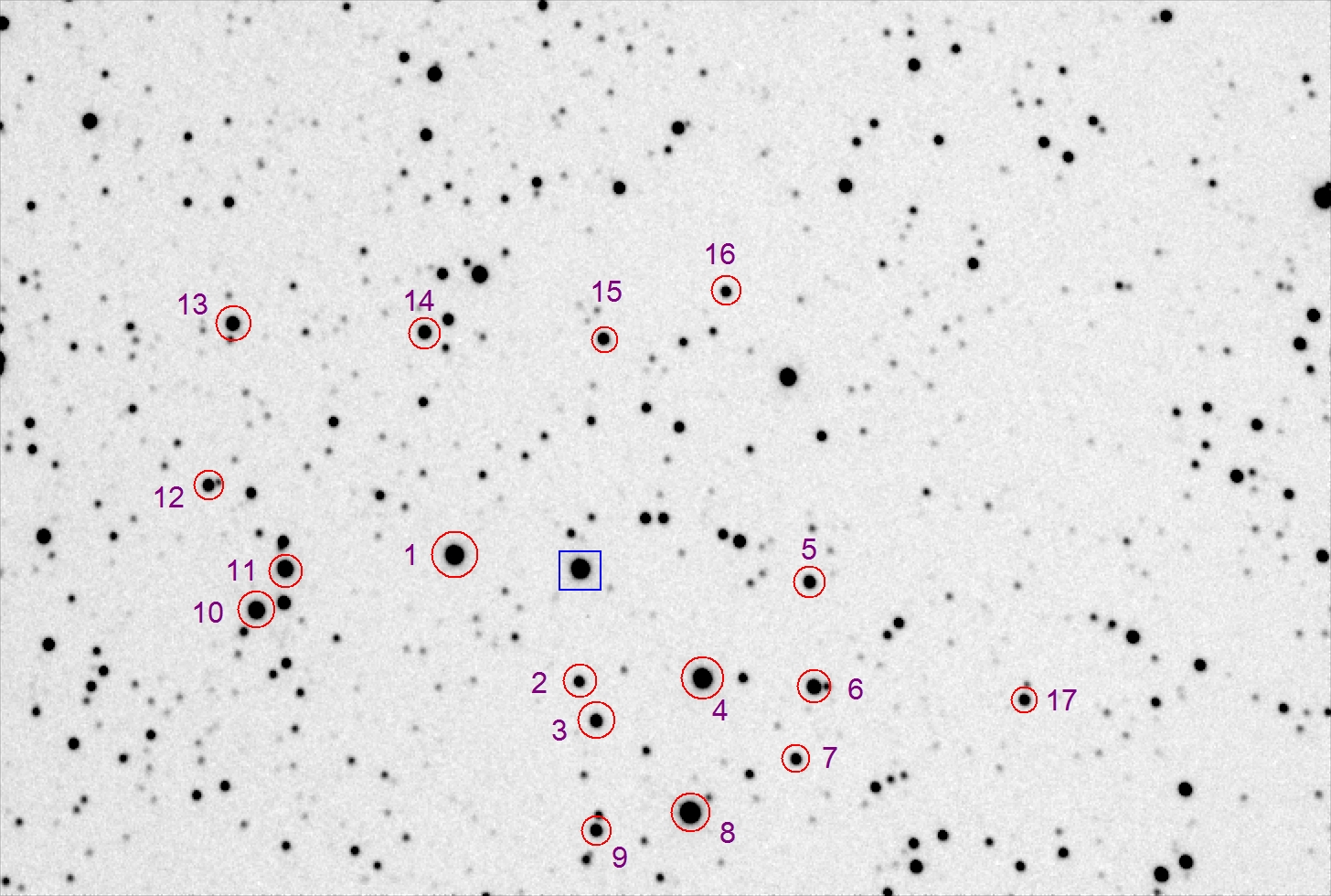
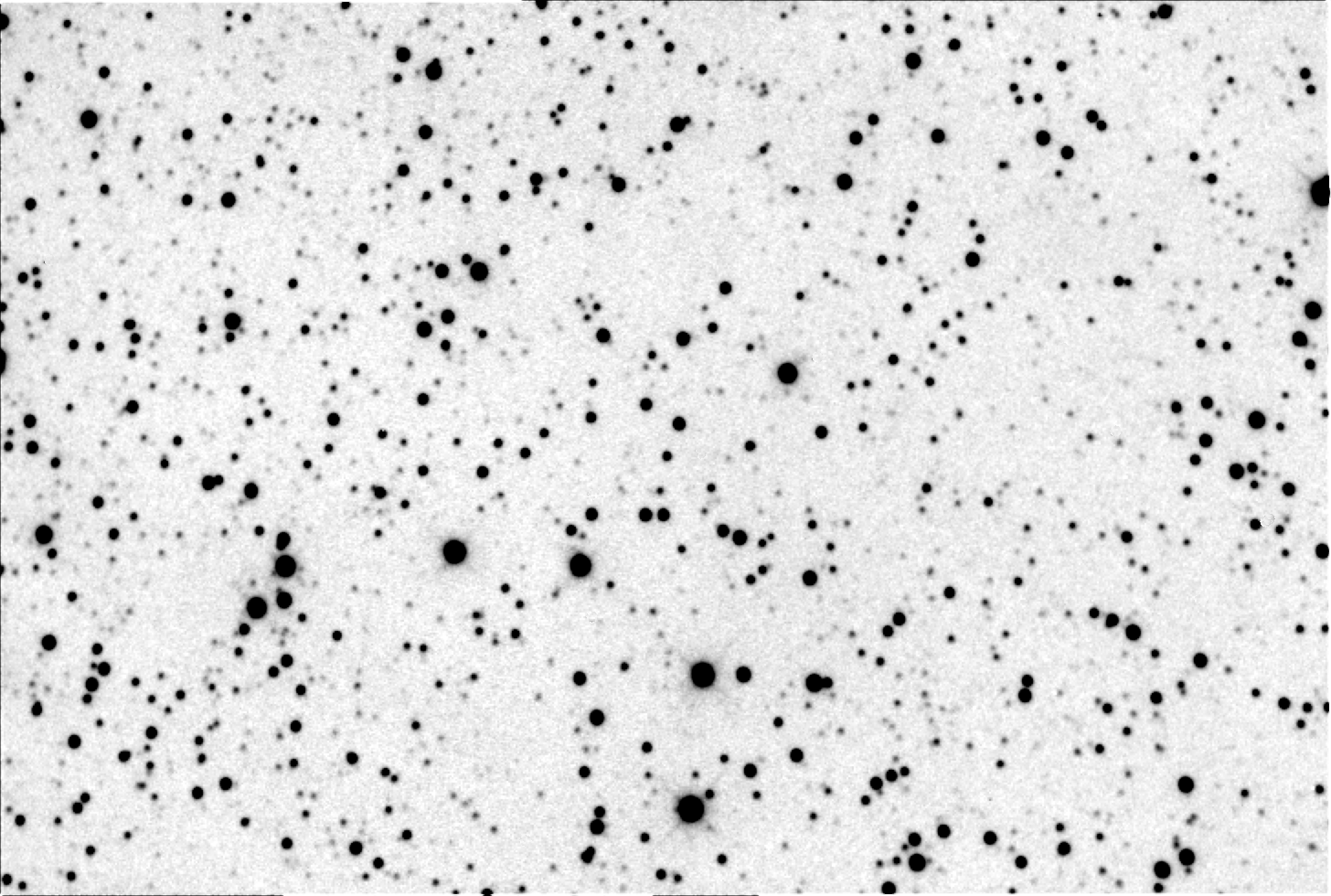
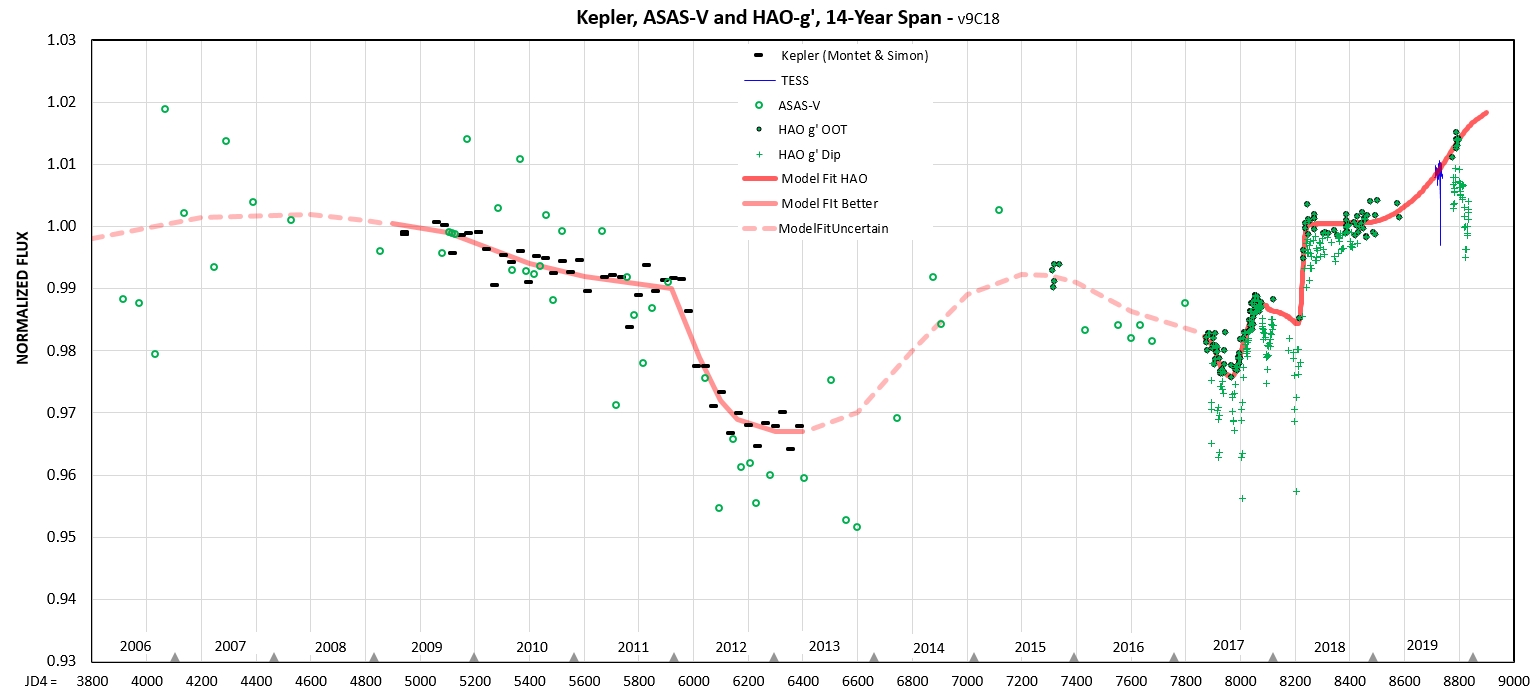
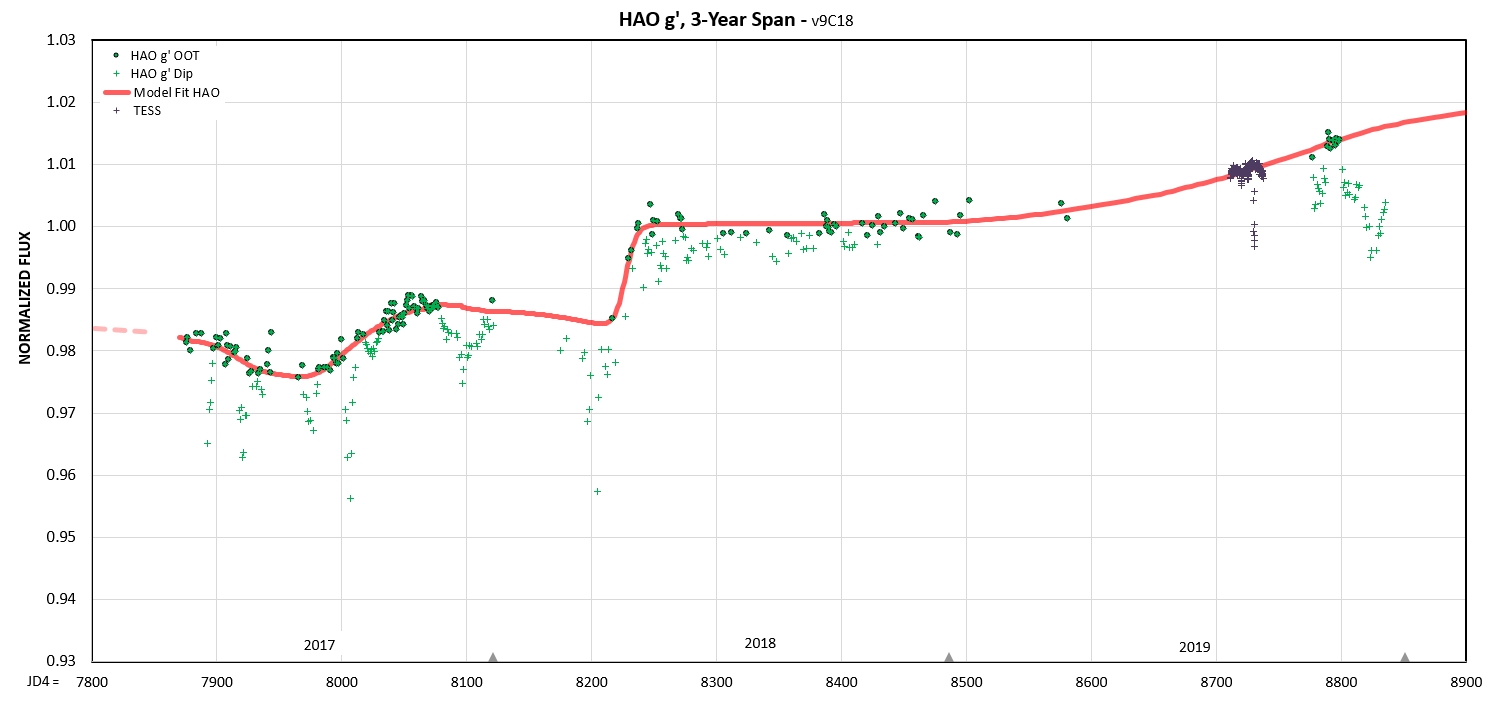
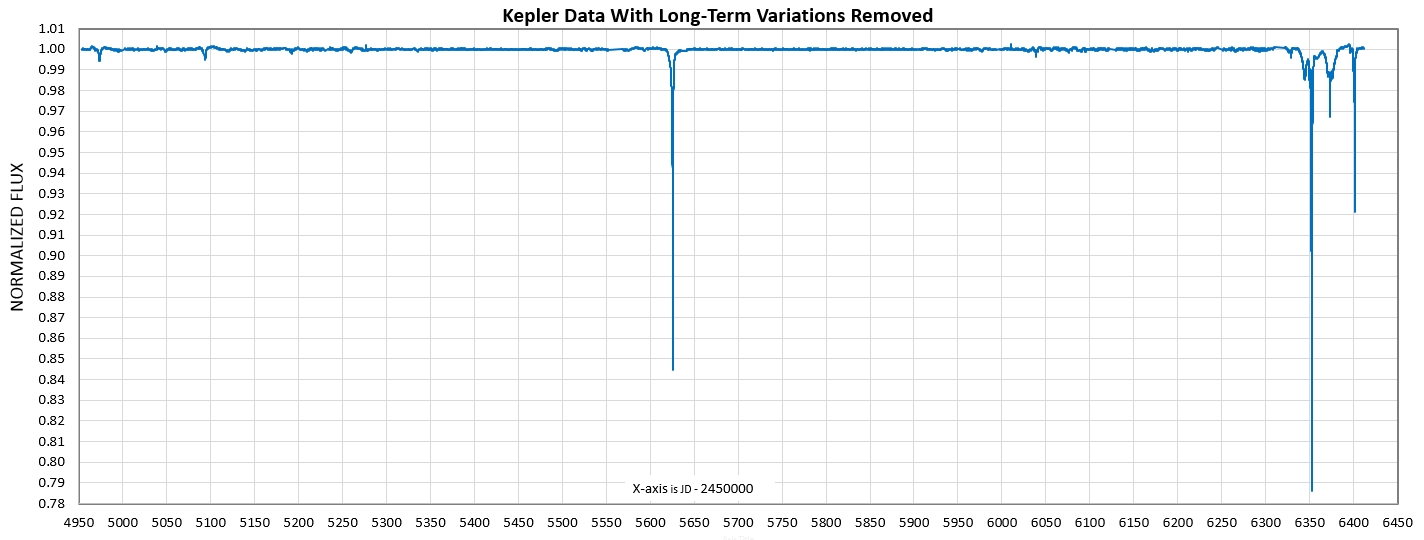
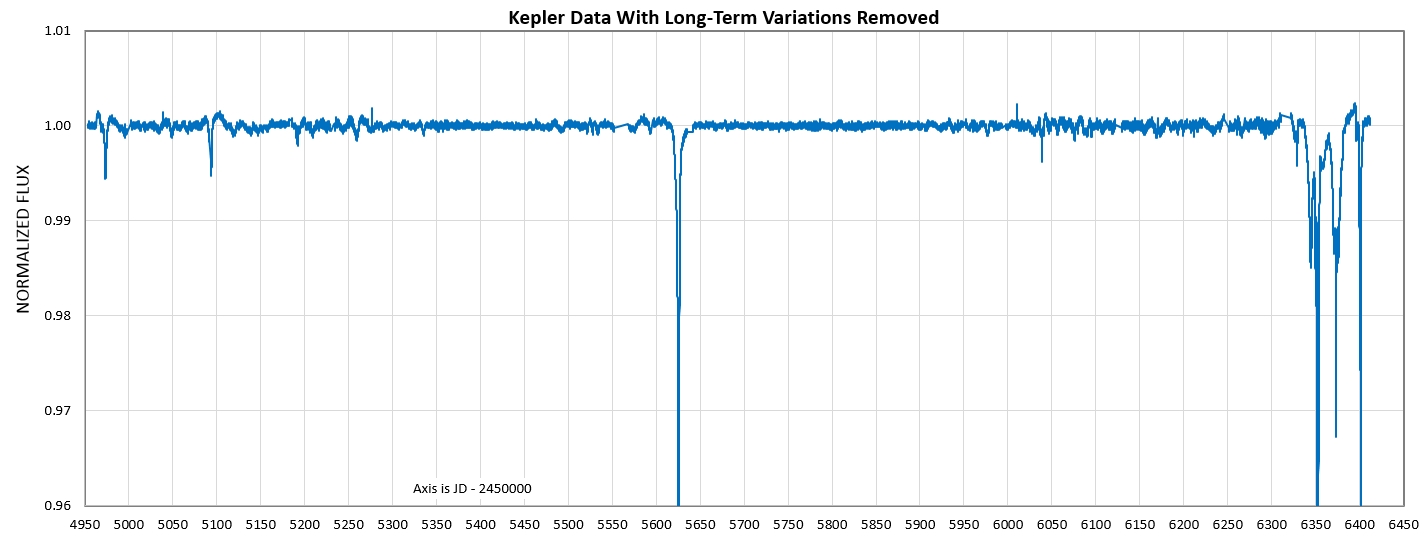
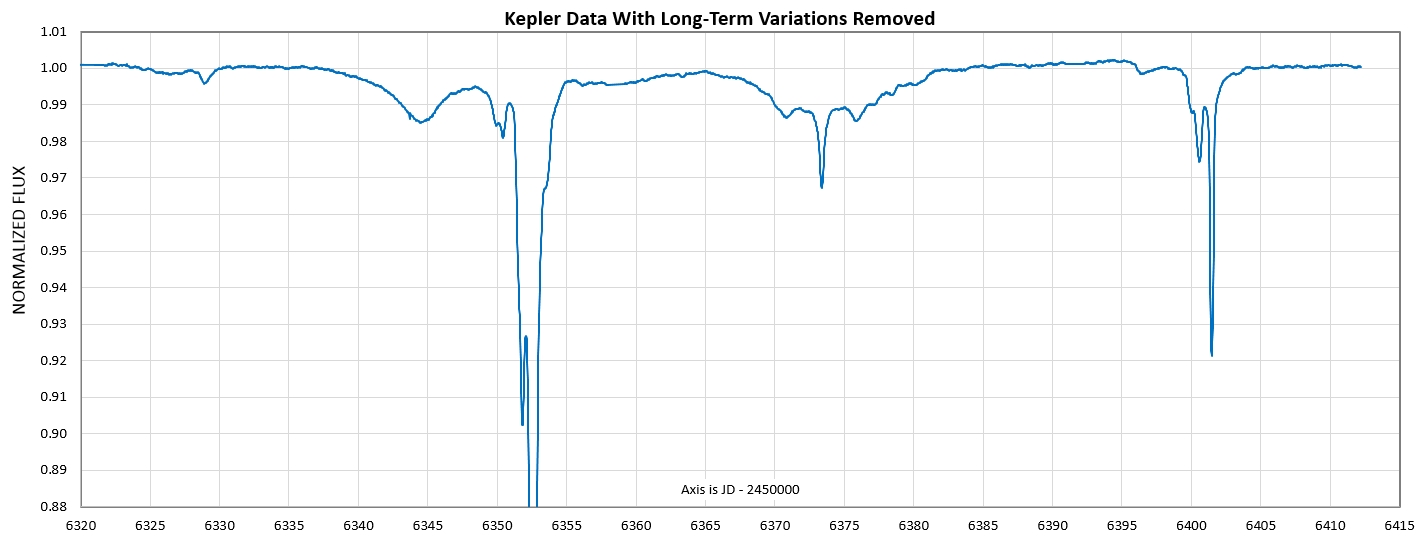
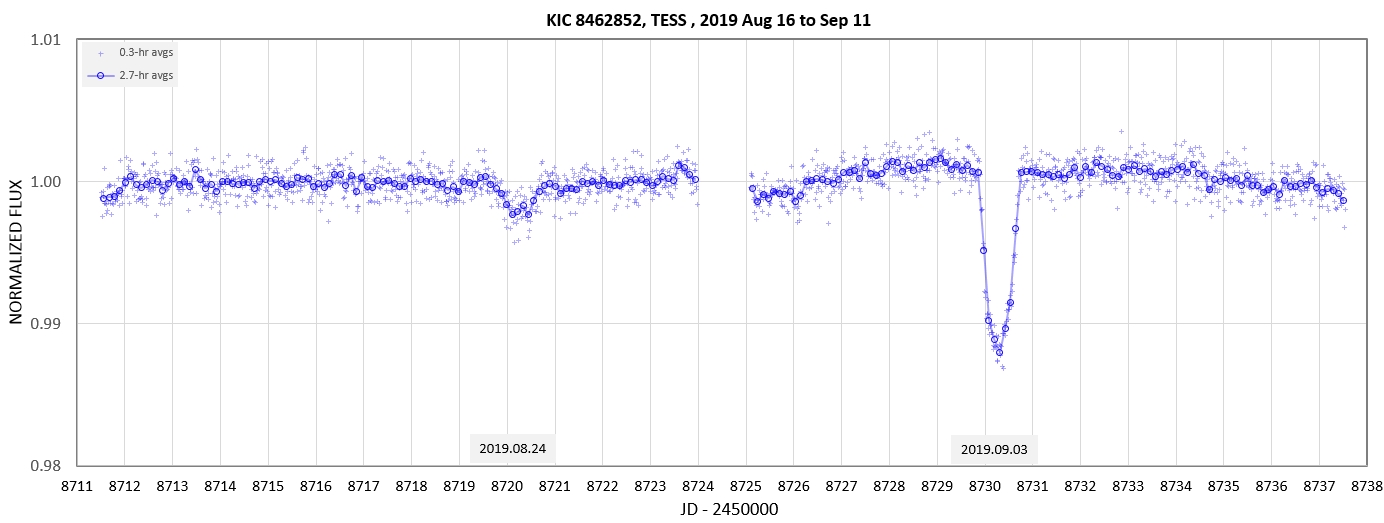
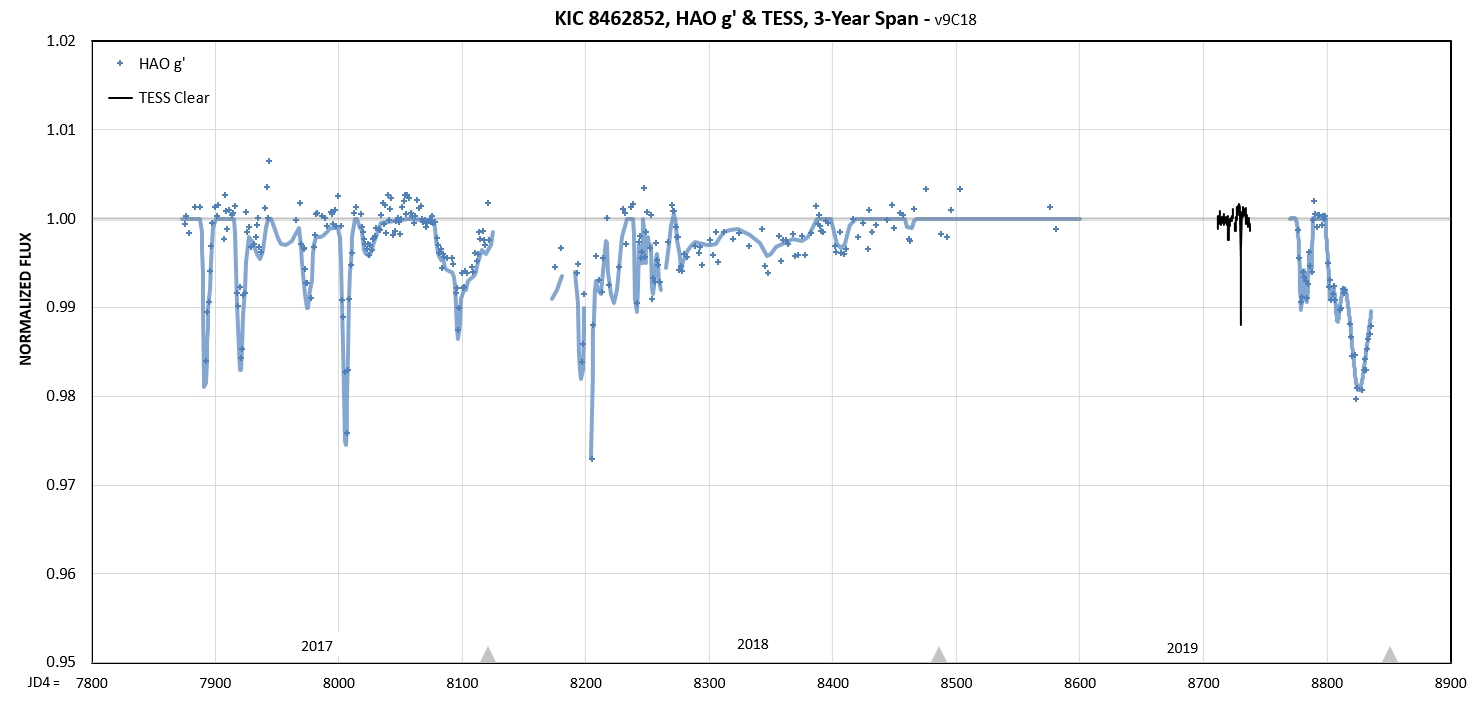
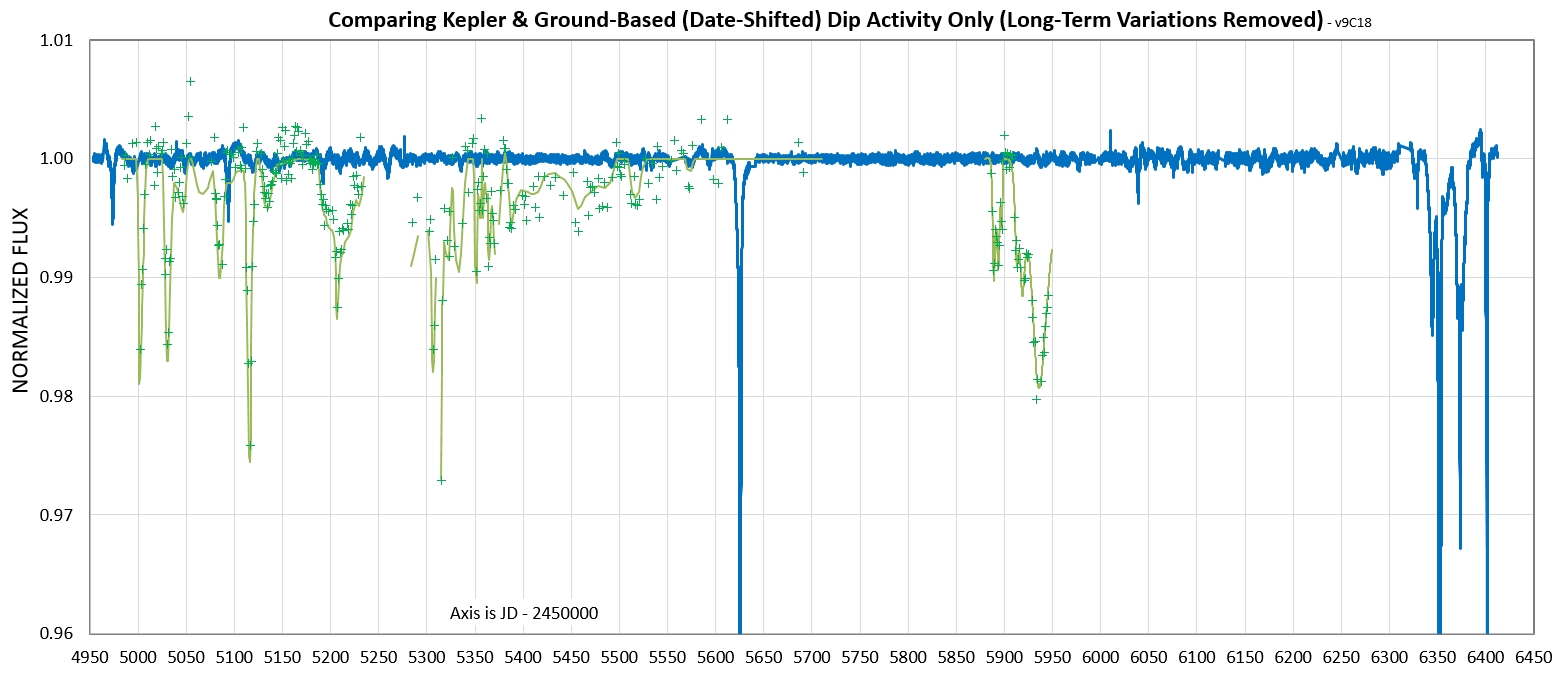 Figure
6.9. Comparing dip activity of
Kepler and ground-based
(HAO) data (i.e., long-term
variations removed). The HAO data was
shifted 7.9 years (to earlier dates).
Figure
6.9. Comparing dip activity of
Kepler and ground-based
(HAO) data (i.e., long-term
variations removed). The HAO data was
shifted 7.9 years (to earlier dates).  B L G a r y at u m i c h dot e d u
Hereford
Arizona Observatory resume
B L G a r y at u m i c h dot e d u
Hereford
Arizona Observatory resume